

















SUMMER/FALL 2023























Variety is the spice of outdoor life. Isn’t that what “they” say? Everywhere I look on the Central Coast, there’s something new going on—whether it’s an event or sport or place to be and see. In this summer/fall issue, we talk about a trail that aims to connect Oregon to Mexico along 1,250 miles of the coast and what is happening to complete segments closer to home. We also take you rock climbing, check out Morro Bay’s Ironman 70.3, learn how to make a backyard pizza oven, and find out what the local beavers are doing. You can read about the shortest hike around with the best view, where to learn about sheep shearing and being a mountain man, the 411 on rowing, and how to prep for a festival. This issue is full of new and different things! So get to reading.
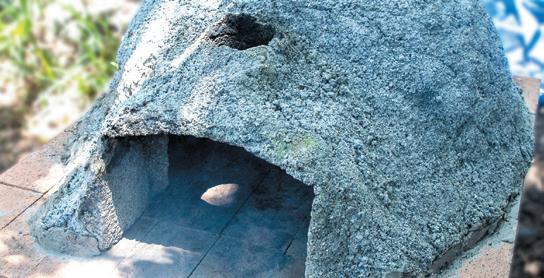

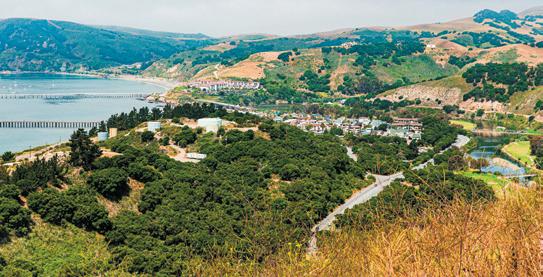

 Camillia Lanham editor
Camillia Lanham editor
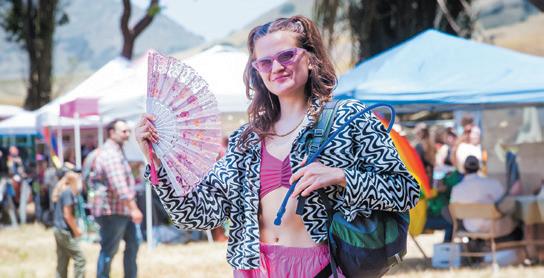





Idon’t know how your knees are doing, but now that I’m in my 60s, mine have mostly been mocking me and threatening to fold up like cheap card tables if I ask too much of them. Yet, I still like to get my walks in, and I also like those walks to offer some spectacular views. If you’re looking for a short and not too
taxing hike that will reward you with sweeping views of the coast from Los Osos, the back bay, the estuary, Morro Bay harbor, Morro Rock, and right up to Cayucos, Black Hill in Morro Bay State Park is the hike for you.
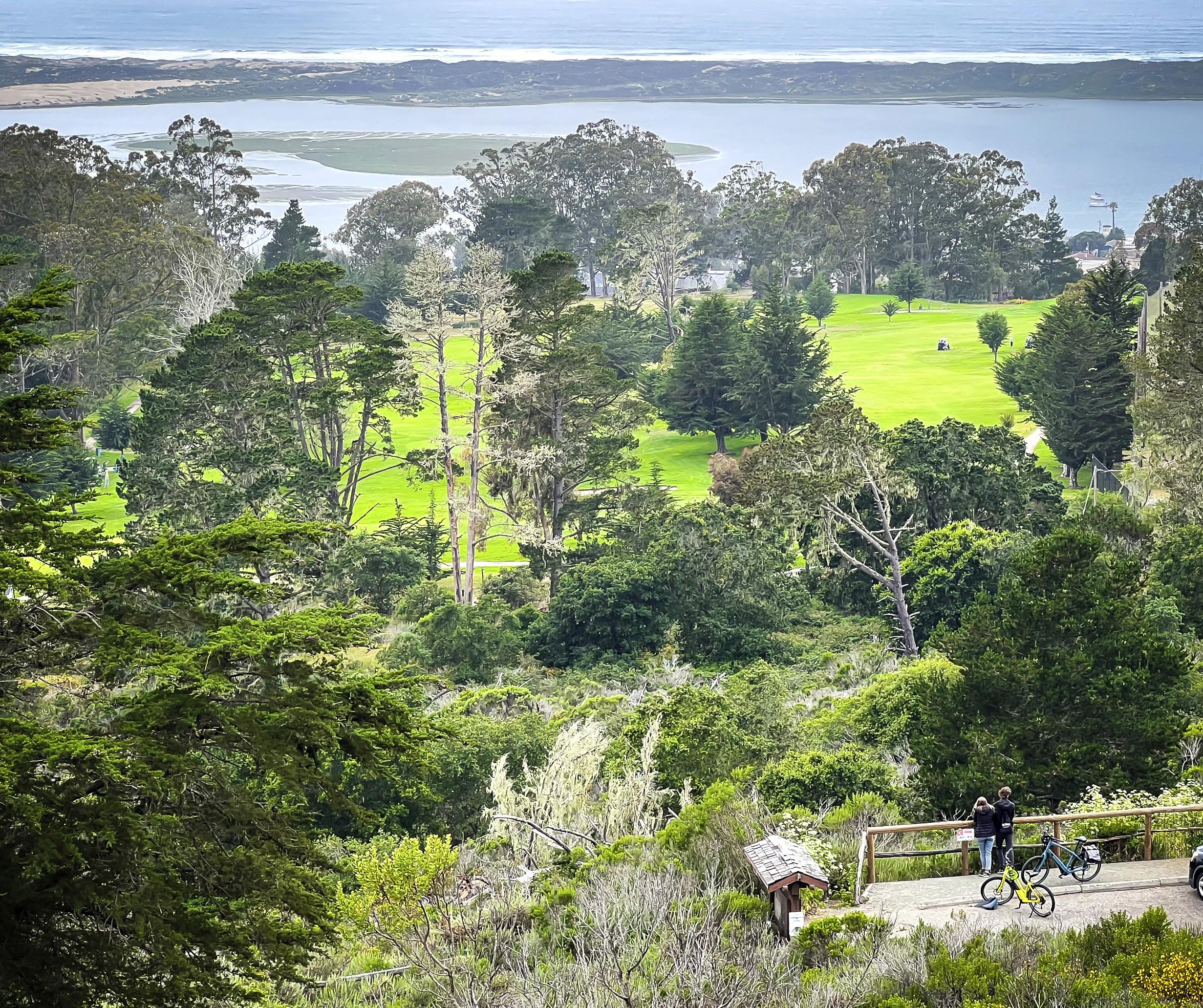


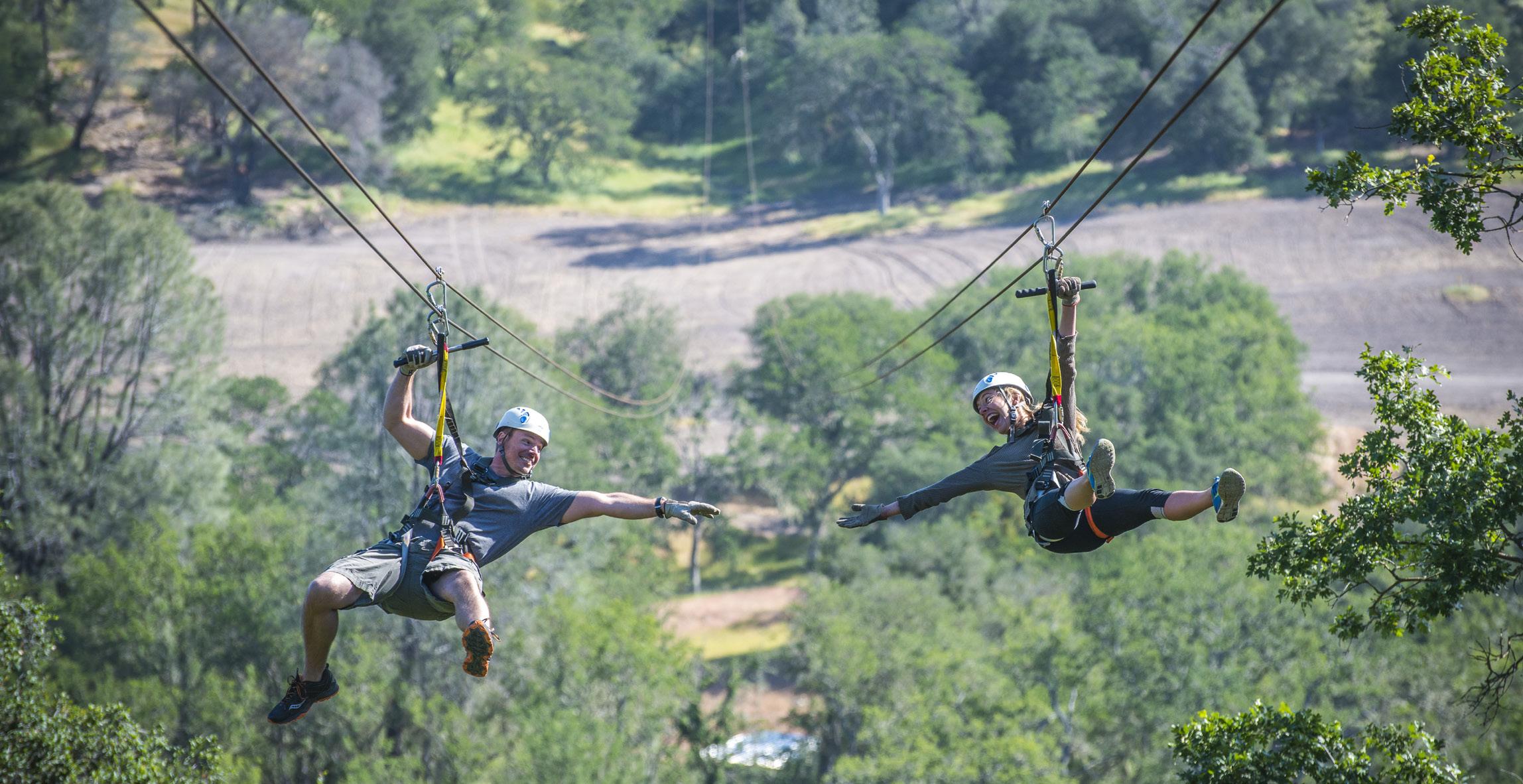
It’s easy to get to. Drive into the state park like you’re heading to the Morro Bay Golf Course. Not
far from the clubhouse, you’ll see a service road heading northeast with a gate that says, “Closed from 6 p.m. until 7 a.m.” Take the road and it will deposit you in a little parking lot at the base of Black Hill. You’ll see the trailhead and a wooden kiosk with signage reminding you to leash your dog, avoid poison oak, and follow Roger
Racoon’s visitor tips.
Head up the trail, which travels through what’s called Fleming’s Forest, a bunch of Monterey pines planted by former Park Superintendent John Fleming. There are a few switchbacks, but I’m not going to lie: There are some steep sections that might have you huffi ng and puffi ng.

Take a rest. There’s no shame in catching your breath.

All told, the roundtrip trail is only .6 miles, and your elevation gain is a mere 190 feet. Black Hill—the second to last of the nine Morros that stretch from Islay Hill in San Luis Obispo down Highway I to Morro Rock—is 661 feet tall, a bit taller than Morro Rock’s 578-foot volcanic plug. Depending on your fitness level, the whole hike only takes about
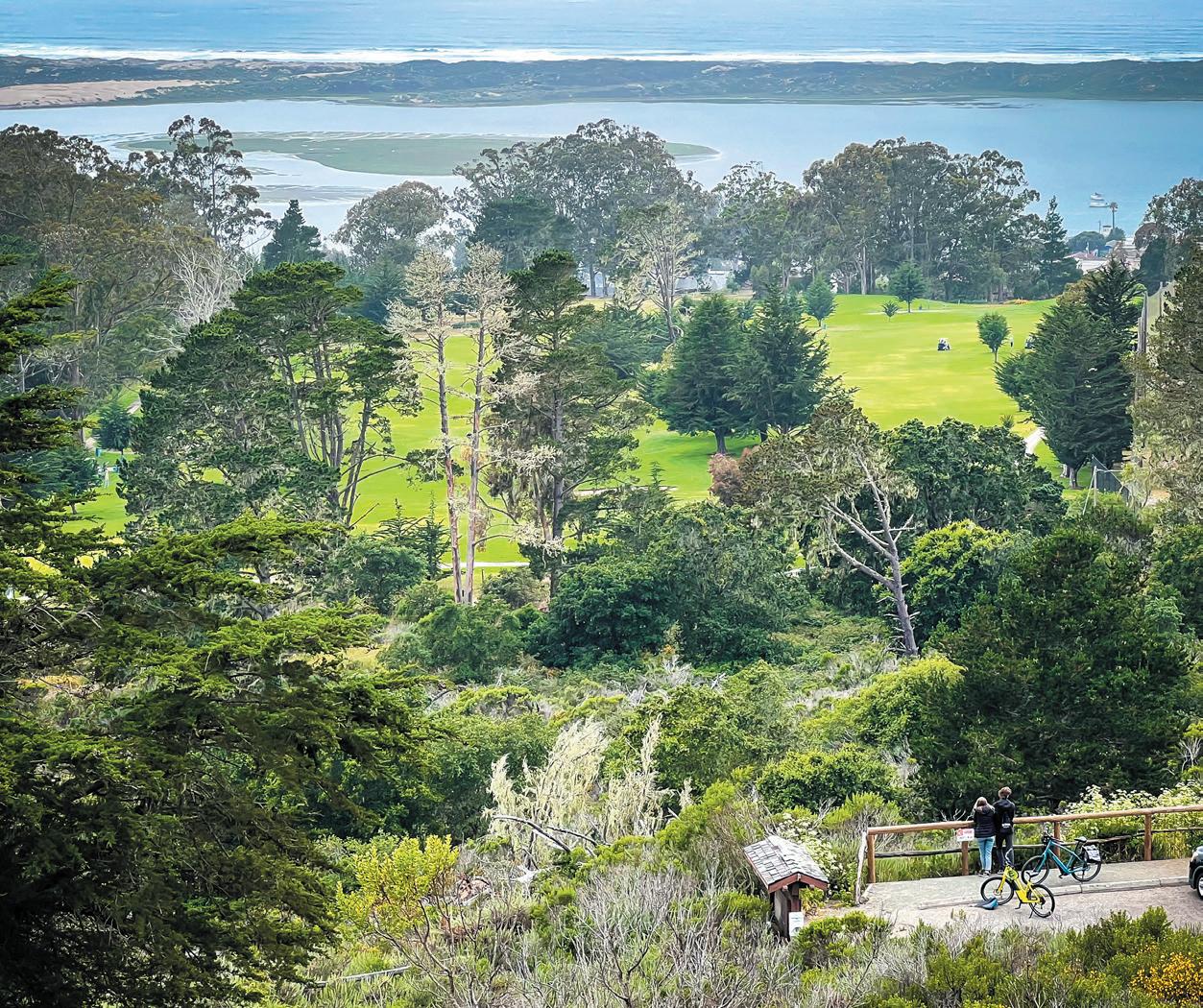
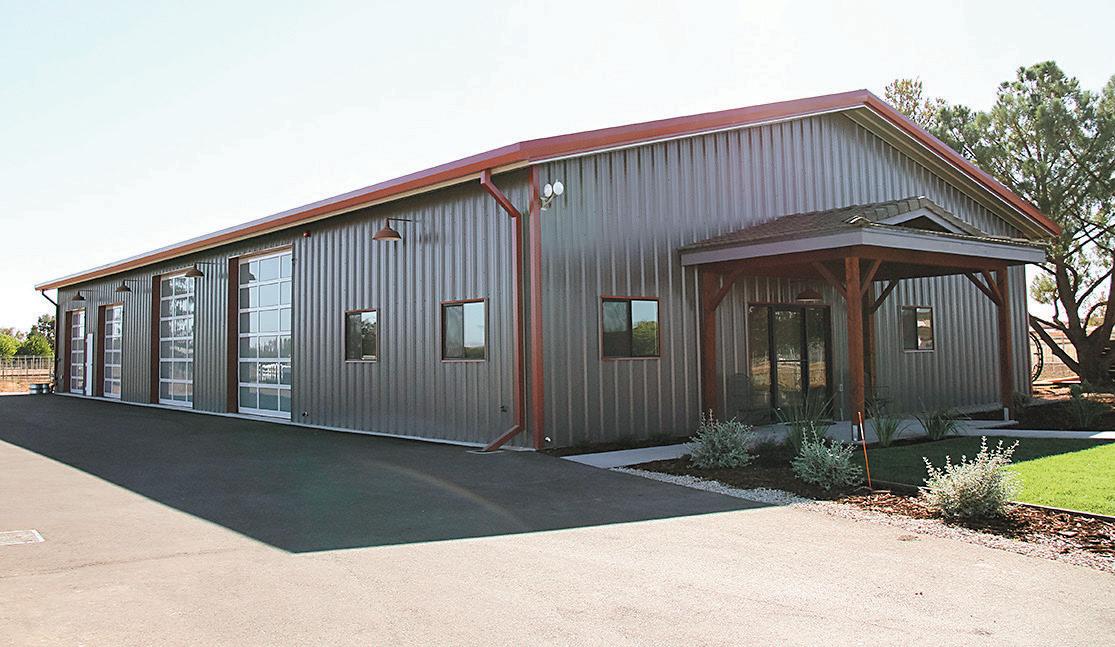
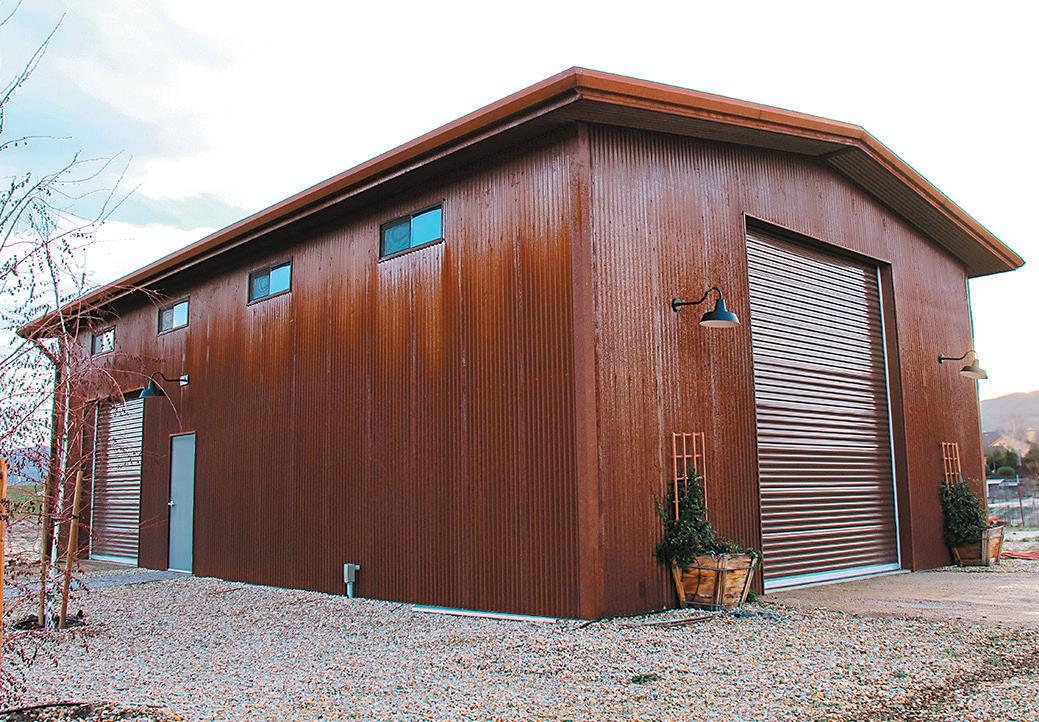
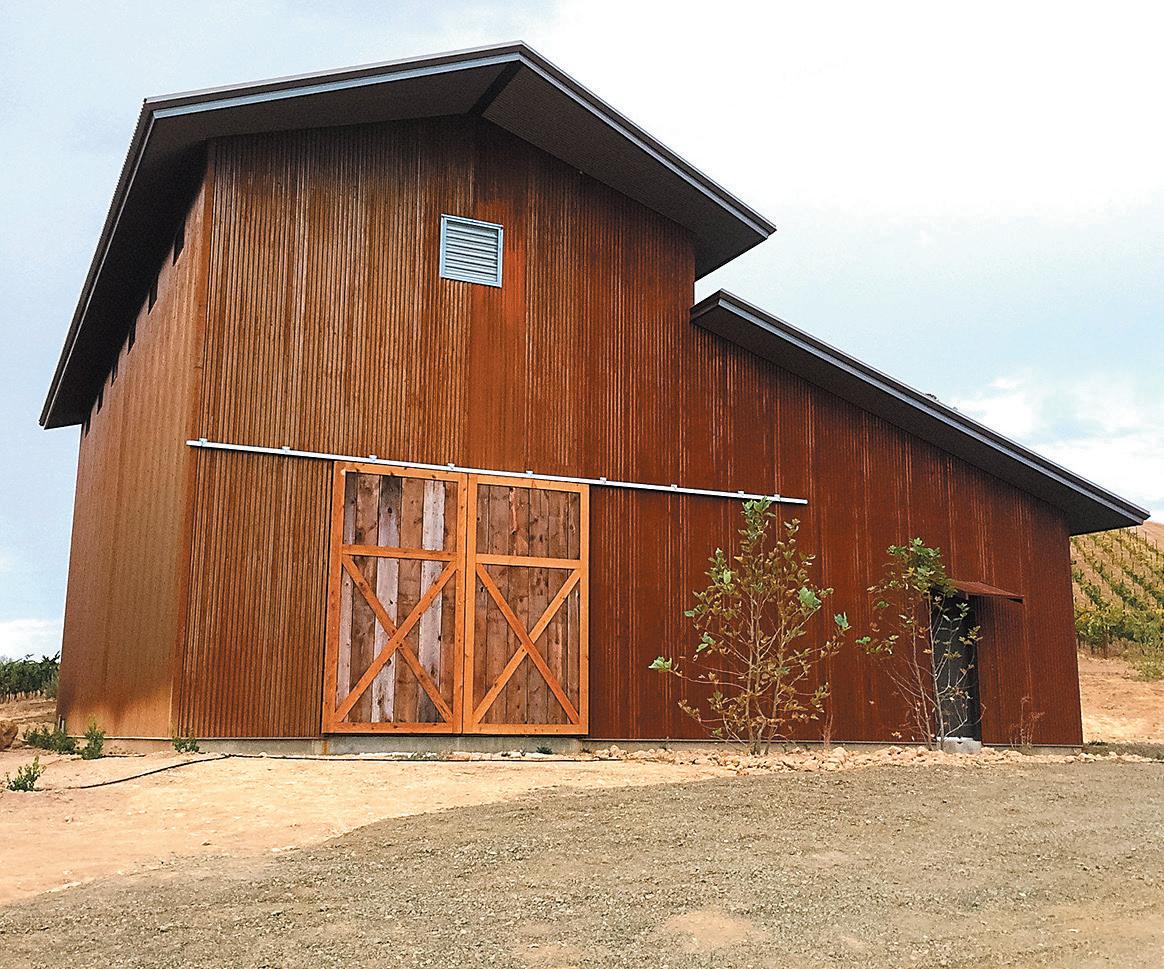



15 minutes, but slow down, Turbo, because once you get to the top, you’re going to want to linger. It’s beautiful up there.
Aside from the coast, there are beautiful views of the golf course as well as down the valley toward San Luis Obispo. Outcroppings of volcanic pillow rock offer spots to take in the vistas. Feeling ambitious? Other trails farther down Black Hill can lengthen your hike, so go get ’em, Tiger.

One of the surest ways to avoid getting injured or needing rescue in open space is to stay on the trail, according to Blattler.
“I don’t think we have the exact stats on the number of people rescued that were on trail versus off trail, but I would say the vast majority of the rescues that occur are for people who wander off trail,” Blattler said. “That’s one of the key messages we want to get out.”
Just a few months ago, Gutierrez’s team and a CHP helicopter extricated a hiker on Bishop Peak who’d gone off trail “really, really far into the brush.” Gutierrez noted that your risk of injury goes up substantially when off trail.
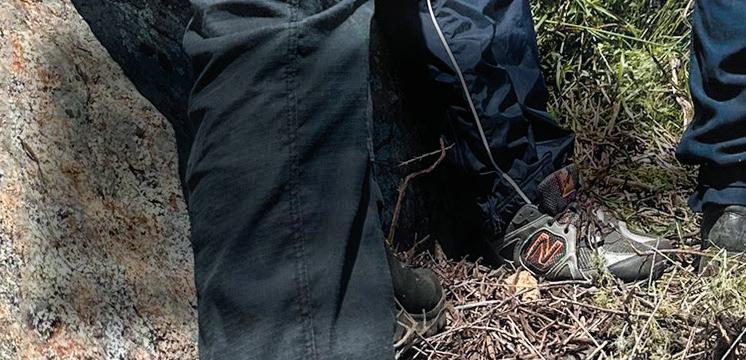
“Everything that’s significant [in terms of injury and rescue] is off trail,” he said. “It’s the bouldering, it’s the rock climbing, it’s the getting lost.”
All official trails offer signage and maps at the trailhead. Blattler advised not to hike in the dark (which is illegal on SLO trails except for Cerro San Luis Natural Reserve), as the poor visibility only increases your odds of getting lost.
STORY BY PETER JOHNSONIn his 11 years on the San Luis Obispo County Urban Search and Rescue (USAR) team, Armando Gutierrez has seen the spectrum of disasters on local trails, like San Luis Obispo’s Bishop Peak.

There are lost hikers who veer off-trail; runners who break an ankle and can’t hike down; rock climbers who fall catastrophic distances; summit trekkers who lose their balance while taking photos on boulders—and the list goes on.
“I’ve been on many different calls over the years,” Gutierrez said. “When I came on the team in 2011 or 2012, there was an incident [on Bishop Peak] at night in the rain—so we had no helicopter support. That operation took six
hours because of the location and the technicality of not being able to just hoist them out. It was a really complex call.”
While not every mission is so technical and challenging, 911 calls from SLO open spaces do come in regularly. According to city data, over the past five years, the USAR team logged more than 100 individual rescues. About a quarter required the help of a California Highway Patrol helicopter—with many of those dispatched to the 1,546-foot Bishop Peak.
Gutierrez recalled two particularly harrowing Bishop Peak rescues of climbers who had plunged long distances while scaling the mountain’s “P Wall.”
“Those are significant heights— people that fall there are falling
from 50, 60 feet,” Gutierrez said. “The amount of trauma is significant, and it takes technical rescue to even get to the location they usually land. We’re using ropes and rappelling. We have to hike to the very top and rappel down to their location. That took hours and hours to get them out. Luckily, we were able to fly them out. They made it and had successful outcomes.”
In a city that enjoys more than 4,000 acres of greenbelt and 55 miles of trails, some amount of risk in open space is inevitable. But Gutierrez and SLO Fire Department Emergency Manager James Blattler emphasized that many of the predicaments they see and respond to can be avoided by taking precautions.
SLO County is so gorgeous it can be a hazard. Gutierrez said that one common scenario for injuries and rescues in open spaces is hikers trying to take photos and losing their balance.
“It’s a beautiful landscape and background for pictures, so a lot of the significant injuries are people taking pictures, falling, and then when they fall, they’re not falling 2 to 3 feet, they’re falling 15 to 20 feet onto some other boulders,” he said. “So you have significant trauma that occurs.”
BISHOP PEAK continued page 10
San Luis Obispo emergency responders urge caution on city trails but are trained and equipped to rescue if crisis strikesPHOTOS COURTESY OF THE SLO FIRE DEPARTMENT PREPPING FOR LIFT OFF San Luis Obispo emergency crews prepare to hook a cable to a lost Bishop Peak hiker as part of a recent helicopter rescue.
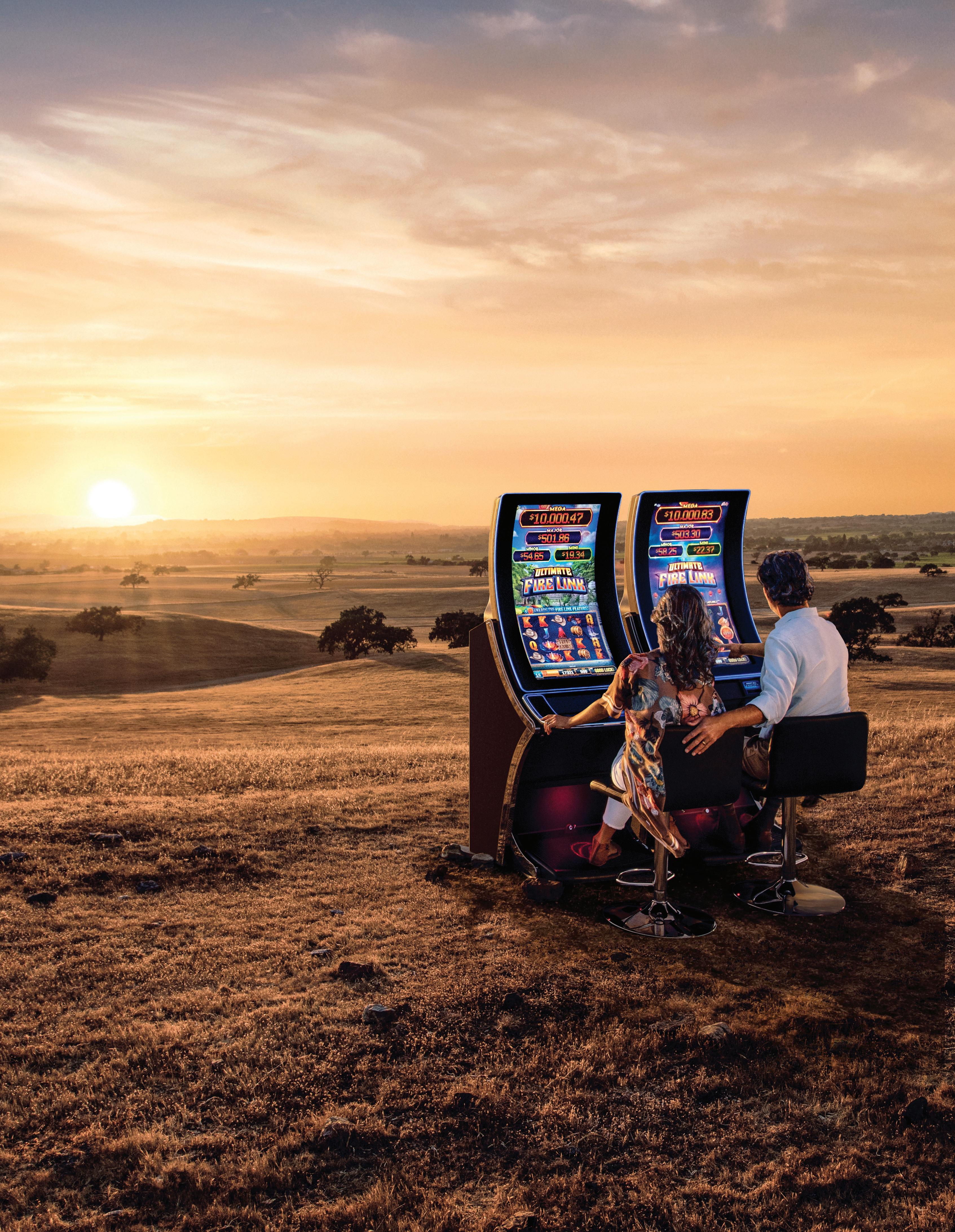

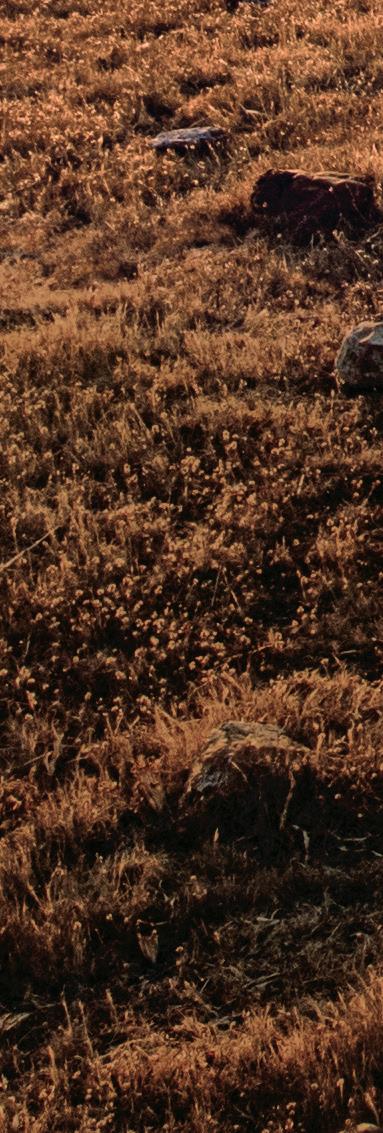






Bring water, a phone, and a friend
Dehydration and heat exhaustion are two common emergencies that can result in a rescue. So Blattler and Gutierrez urged trail users to bring a water bottle on their hikes.
“If it’s hot, we’ll get calls for medical heat-related emergencies,


MISSION ACCOMPLISHED
Dusty Renner, a SLO fire captain and Urban Search and Rescue team member, watches as a hiker is hoisted into a helicopter during a successful rescue on Bishop Peak.
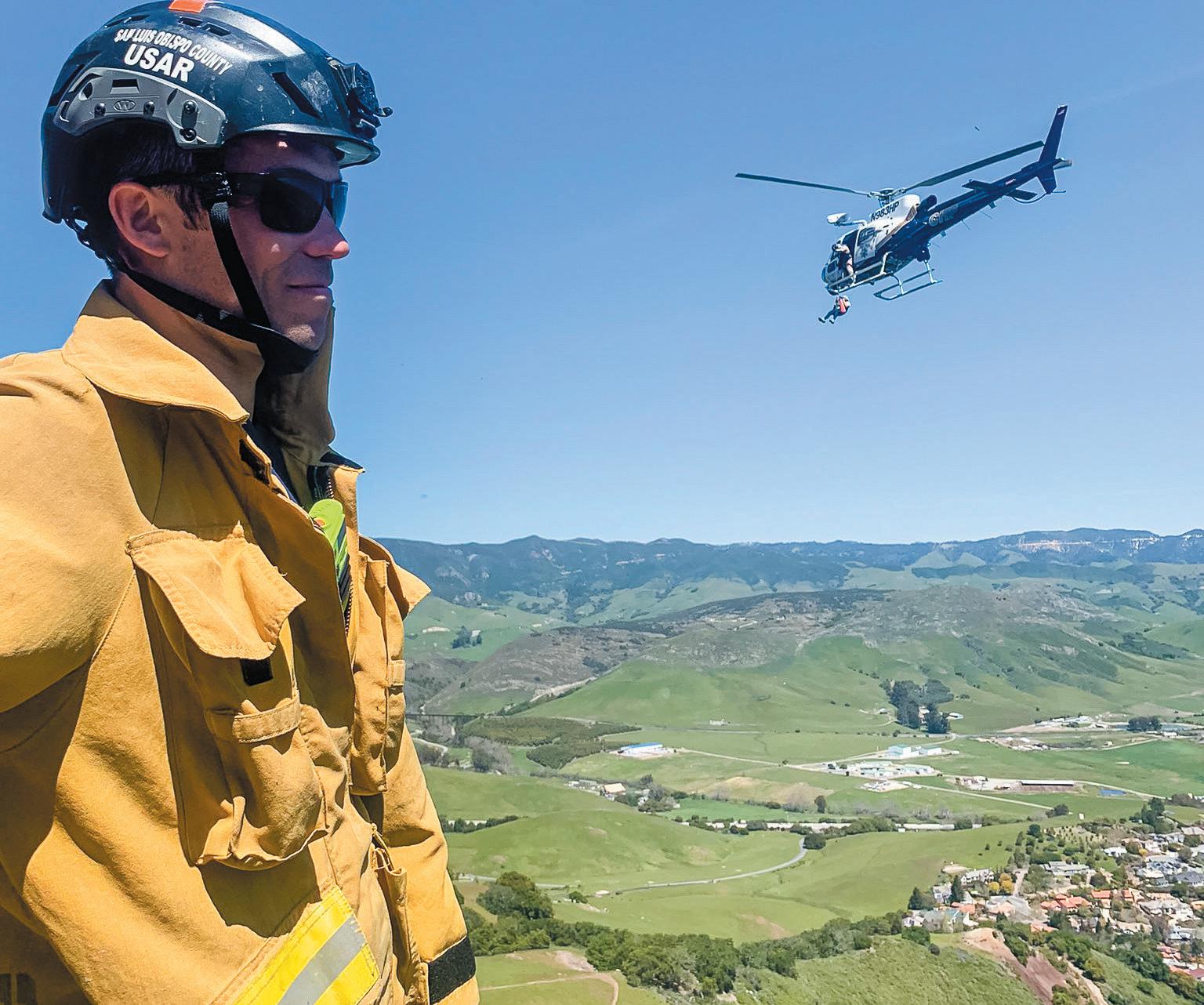
so make sure you’re drinking plenty of water,” Blattler said.
Blattler added a cellphone and a friend to the list of what to bring to open spaces. Proper shoes and gear— like a helmet for rock climbing— are also recommended.
Don’t drink and hike
It may seem obvious, but it is a bad idea to consume any alcohol before or during a hike. Doing so can not only lead to a costly citation from park rangers or the police, but serious injury on the trail.
“Possession or consumption of

Know your limits—and the consequences of pushing them Trail users often forget that they are an hour or more away from getting care if something goes wrong, Blattler said. With that in mind, he urged locals to know their limits and to keep in mind the results of pushing them too far.
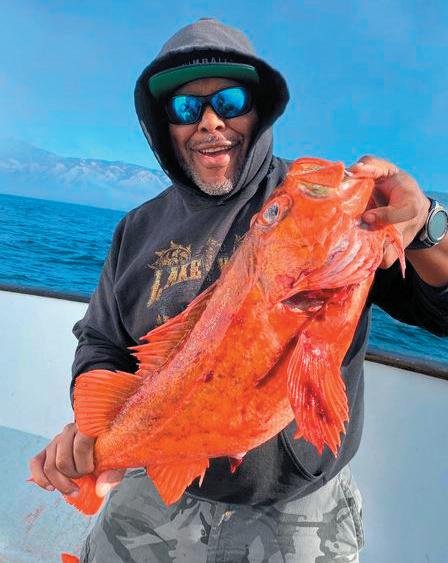
“A lot of people might step out of
In the event of an emergency, the SLO County USAR team is well-trained to respond. In recent years, the team has worked hard to become better prepared and equipped for quicker rescues, according to Gutierrez, who leads the team.
While in years past, the USAR
alcohol is unlawful out there on the open space lands.
And there’s a reason for that,” Blattler said. “I definitely don’t recommend that. It’s not only unlawful but unsafe.”
their comfort zone, and that’s not what you want to do when you’re in an area where it might take well over an hour to receive care,” Blattler said. “It can be a significant amount of time for our rescuers to get out there and help people off the mountain. Just be aware of your surroundings and aware of the consequences if something were to go wrong.”
team struggled to meet the “golden hour” standard for bringing an injured hiker from a trail to a hospital, the city recently purchased an off-road utility vehicle (UTV) and electric mountain bikes that expedite response times.
“In our experience, the best treatment is to get a patient off the mountain quickly,” Gutierrez said. “Our industry standard for
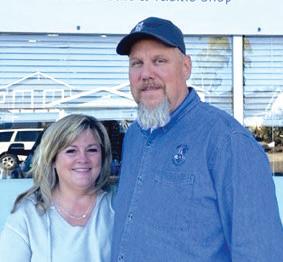
the best possible outcome is to get that patient from the time that injury occurs to an operating room in an hour. That’s why we go to a helicopter most often on Bishop Peak—because we can’t afford to have somebody on the mountain an extra hour for us to hike them down.”
Gutierrez said that the addition of the UTV shaves about a halfhour off the time it takes for crews to reach a patient on Bishop Peak.
“Before, we’d hike from the ground all the way up, so even a significant patient that maybe had some significant injuries would take two or three hours to get off the mountain,” he said.

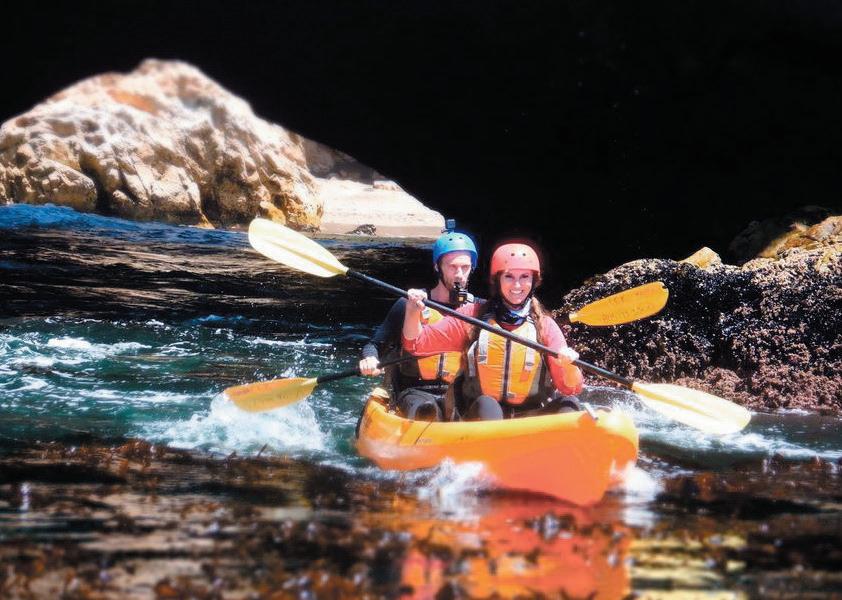
The team trains regularly with partner agencies—CHP, Cal Fire, and neighboring county departments—to be prepared for any open space rescue scenario.
“We cross train on a lot of disciplines,” he said. “I will coordinate a lot of the training with CHP directly. When you’re sending somebody 1,000 feet in the air [in a helicopter], there’s no room for error.”
Every open space rescue is unique, but a CHP helicopter is
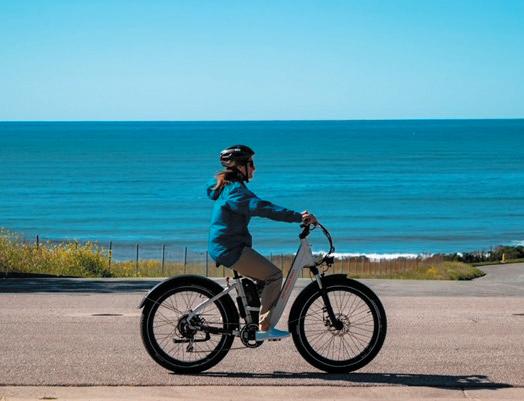
usually the fastest solution in the event of serious injury.




“I’ve probably been directly inserted [to a patient by helicopter] probably about four or five times in the past three or four years,” Gutierrez said. “Other times, they’ll just drop some equipment off to us once we’re at the patient, and then they’ll hoist directly from that location. They’ll hover above, wait until we’re done with operations, and then pull the patient up from their cable.”

While the city fire department does not charge individuals for their rescue services, ambulance bills can be exorbitant. And rescues do draw city resources away from other potential emergencies, so Blattler urged locals to be careful on their adventures.
“It definitely does take up a lot of time and resources. Say we have a rescue going on, and a structure fire happens, then it’s going to pull resources out of the area, and it just draws down on our ability to continue to provide service,” Blattler said. “We really stress the safety portion of it.”

As a starting place, can we all agree that pizza is the perfect food? Depending on your ingredients, it’s an ideal balance of carbs, fat, and protein. It’s easy to make and easy to share, and it’s universally enjoyed. One survey found 98 percent of Americans eat pizza, and 54 percent say they “love” it. Millions even claim they’d want pizza for their last meal.



You know what else Americans love? Entertaining and backyard barbecuing. Now imagine that instead of burgers off the grill, your next gathering would serve Naplesstyle woodfi red pizza straight from an oven in your backyard. You can do it. San Luis Obispo residents Chuck and Amy Maxie did, spending about $300 on materials to create their own backyard pizza oven.
There are a few steps and some drying time for materials to harden, but it’s easier than you may think. Step one is to fi nd a flat place you can build a base from cinder blocks, which the Maxies bought locally
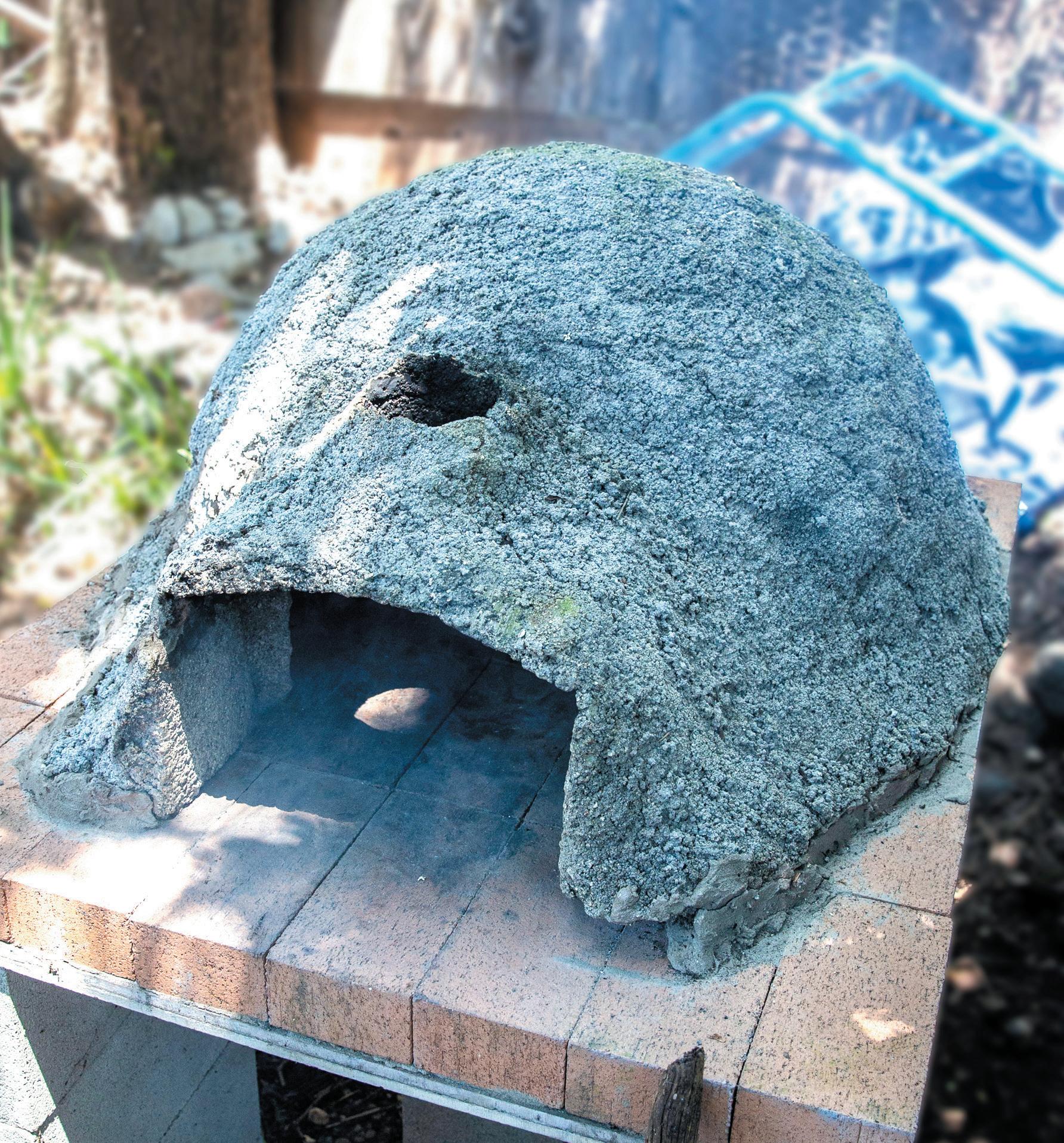
from Air Vol Block on Suburban Road in SLO.
Next is to acquire an inflatable exercise ball, probably the 65 centimeter size, though the standard 52 centimeter will work—about $10 to $20. You’ll need to build a frame for the ball, which acts as the form for your oven’s dome. The frame should be something flat and rigid but easy to cut, like 3/4-inch plywood.
“You just measure and cut the
frame to rest the ball in,” Amy explained.
Use a string and pencil to draw the correct diameter circle, one the ball can’t fall through. Drill a small pilot hole at the edge of the circle and use a jigsaw to cut it out. Use your cinder blocks to hold the frame up so the bottom of the ball is hanging out of the bottom of the hole.
You’ll also need to build a little rectangular frame for the opening of the oven as well as a chimney
to vent the fi re—the Maxies used a coffee can. Once you’ve got the frame for your oven, cover it all in plastic wrap to keep the outer material—in this case a mix of vermiculite and cement—from sticking to the ball, and then wearing plastic or rubber gloves, mud it up.
“We kept popping it on until it was thick enough,” Chuck said.
For about 300 bucks and your labor, you could have your own ovenDIY PIZZA OVEN continued page 14
JULY 22-29 25EVENTS C OUNTYWIDE



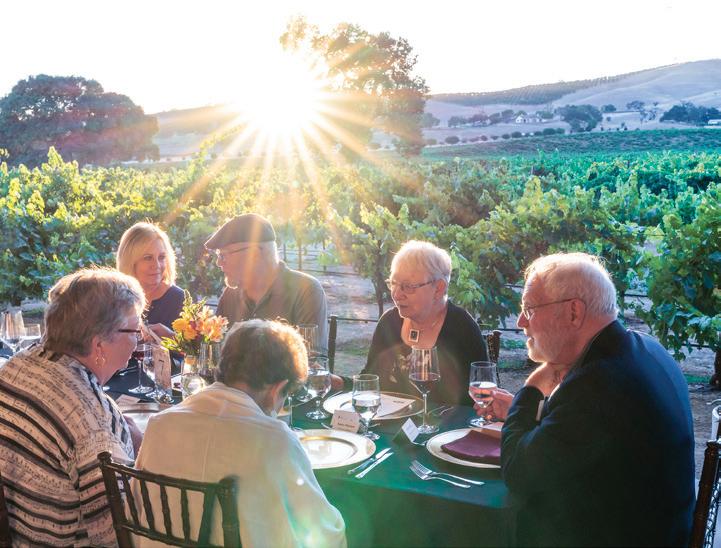
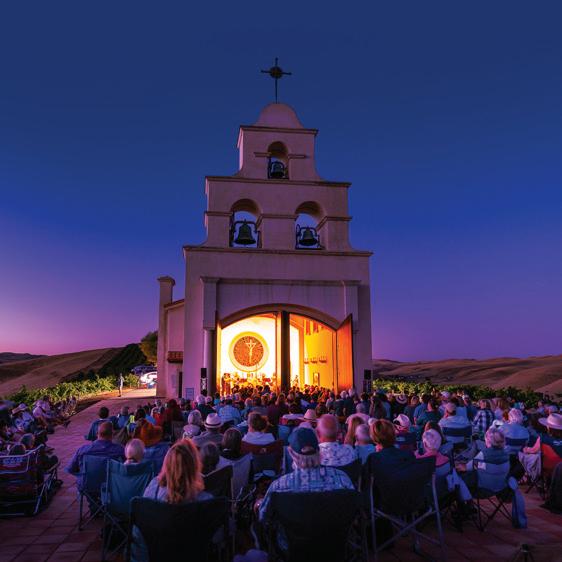


 SCOTT YOO | MUSIC DIRECTOR
SCOTT YOO | MUSIC DIRECTOR
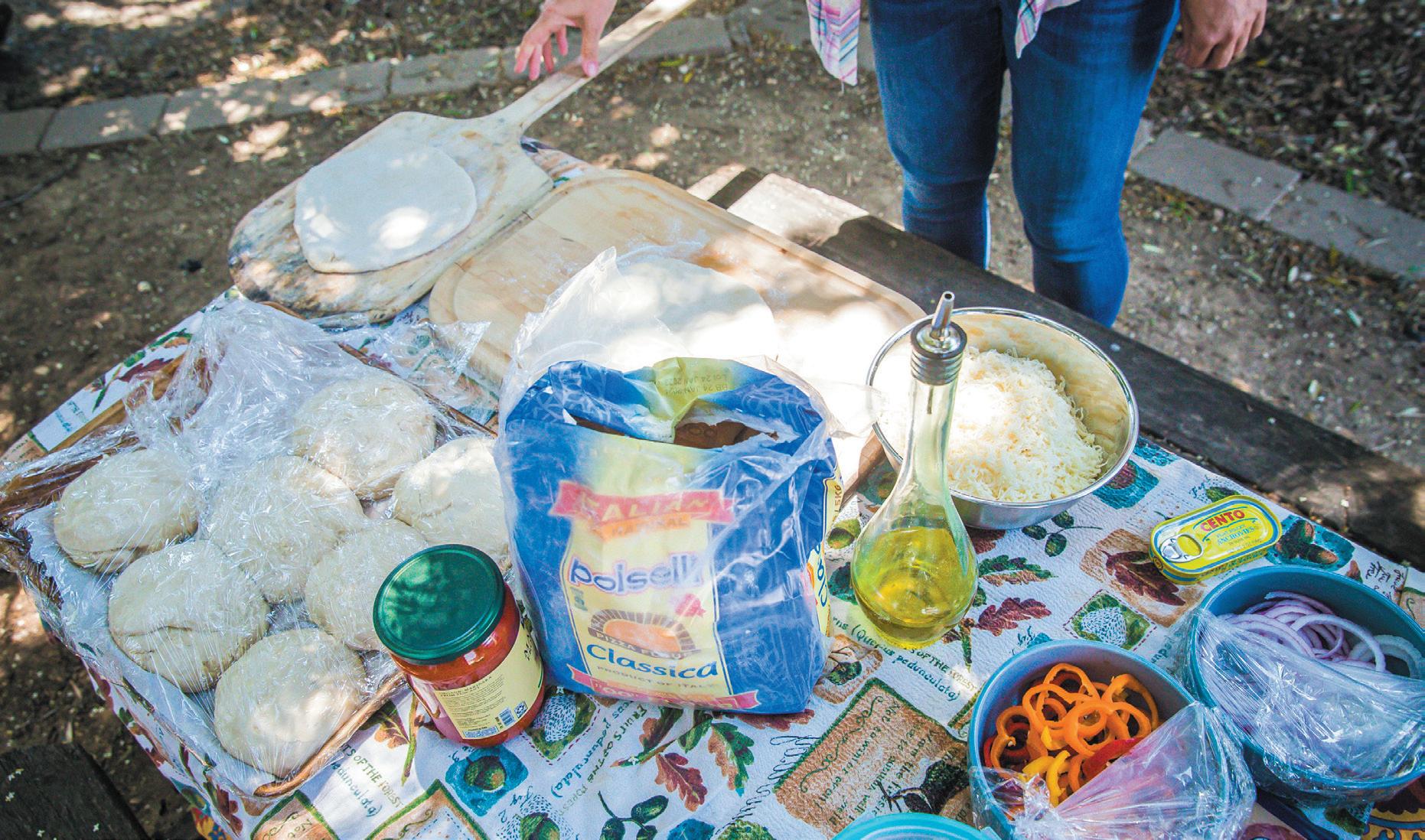
The OG of Neapolitan pizza




Dough for two 10- to 12-inch pizzas
2 cups of “00” flour
1/8 teaspoon of active dry yeast
1/2 teaspoon of granulated sugar

1 1/4 teaspoons of salt
3/4 cup of 110-degree water




Toppings
3 medium San Marzano or Pomodorino del Piennolo del Vesuvio
tomatoes

2 balls of moist fior di latte or mozzarella di bufala cheese

12 leaves of fresh basil
olive oil drizzle
Simple, fresh, and delicious, the Margherita pizza is the classic pizza created in Napoli, Italy, and if you’re making backyard woodfired pizzas, it’s a must-try.
To do it right, make your own dough using soft wheat “00” flour from Italy. You need two bowls. In one, lightly coat with olive oil and add the warm water (110 degrees), dry yeast, and sugar. In another bowl,
combine the flour and salt. Make a well in the flour and pour in the yeast mixture, and use a fork to pull the dry into the wet, then mix. As the dough starts to rise, knead until it’s a little tacky, then cover it in the oiled bowl and let it rise in a warm spot until it doubles in size in an hour or two. Divide it into smaller balls, cover them in a damp cloth, and let them
rest. Overnight in the fridge is A-OK. When your oven is hot, use your fingers to make a dough ball into a roundish flat shape, and now it’s time for the pizza toppings. Margherita is made with fresh ingredients: straight from the vine pureed San Marzano or Pomodorino del Piennolo del Vesuvio tomatoes, moist fior di latte or mozzarella di bufala cheeses.
Take your peel, slide the pizza in your oven, and watch it closely. It shouldn’t take more than a few minutes to be a bubbling, browned, beautiful culinary delight, and if you suffer from gluten intolerance, many people report the Italian “00” flour doesn’t bother their stomachs. After baking, add just-picked basil leaves and a drizzle of olive oil.


At this point you might be thinking, Why? Why go through all the trouble.

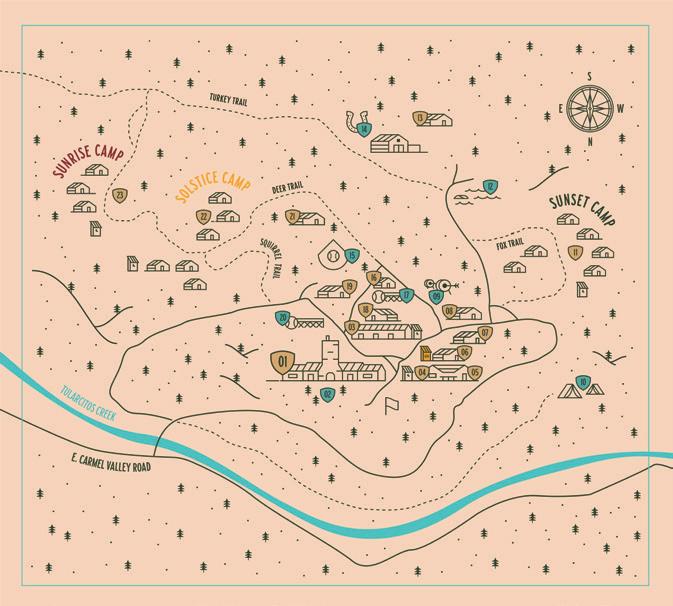
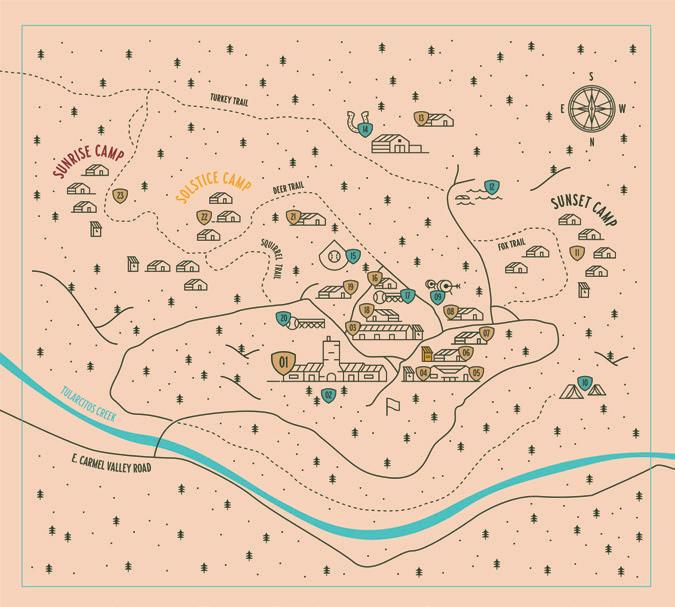
“We wanted to have a project and thought it sounded like a good idea to be able to make pizzas in the backyard. We experienced real pizza ovens in Europe and loved it,” Chuck said.

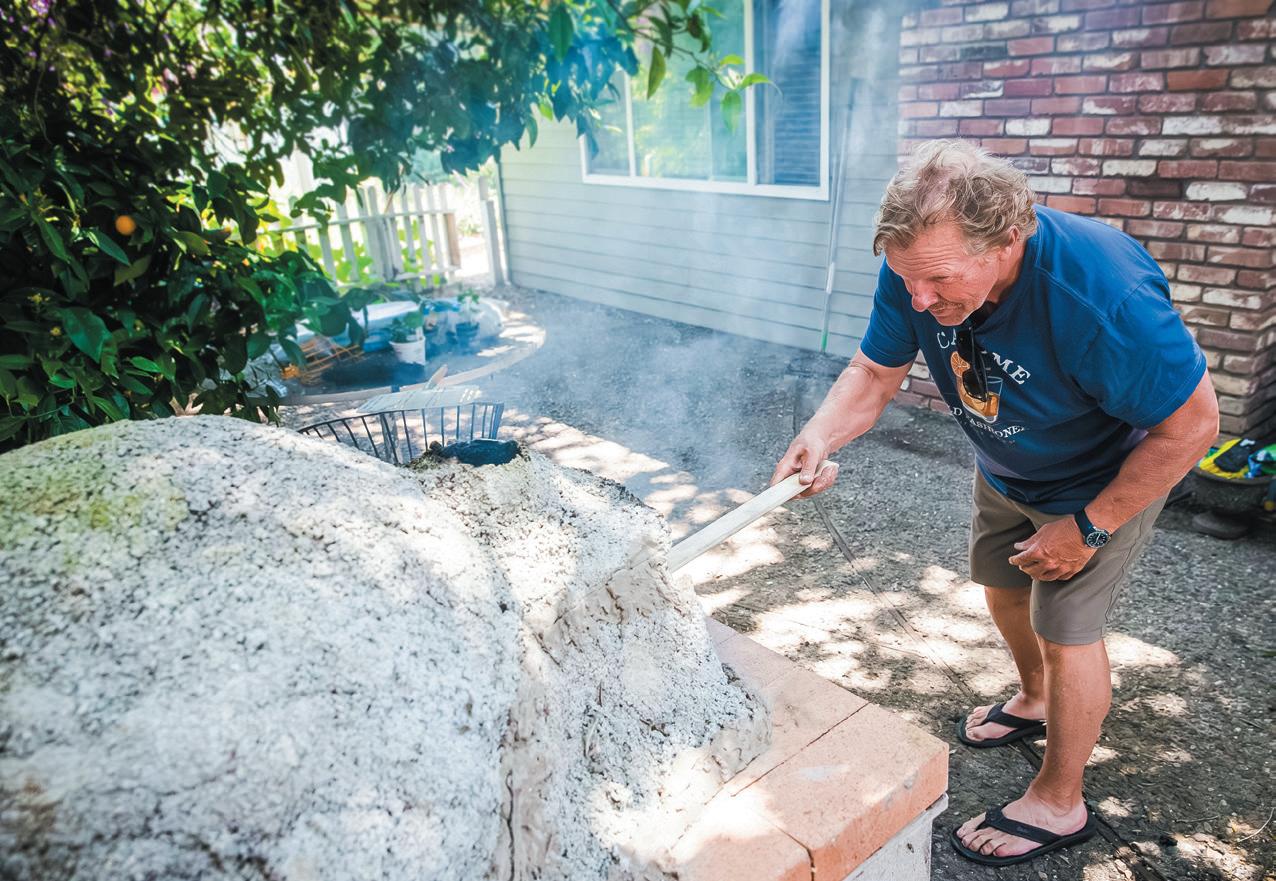
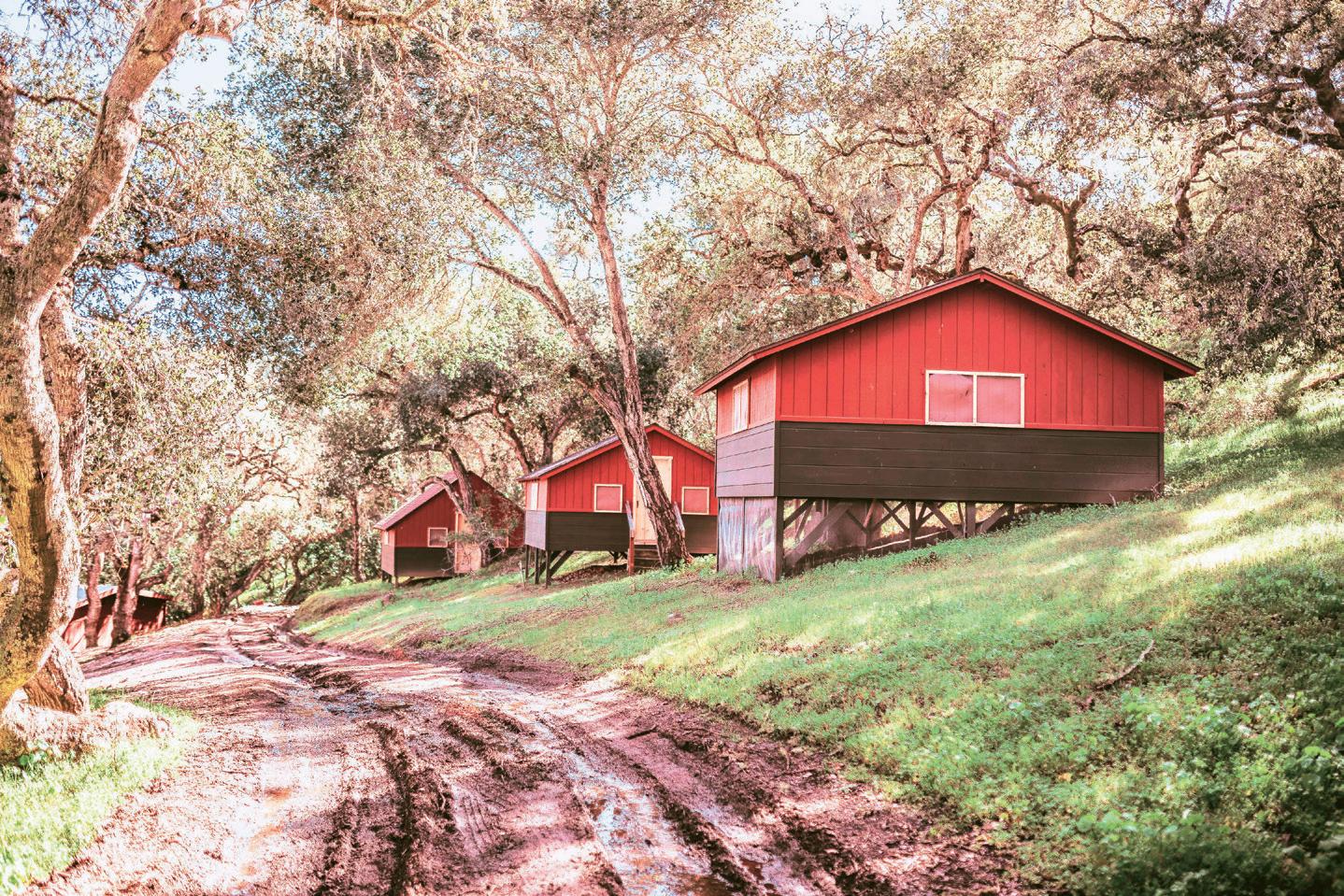
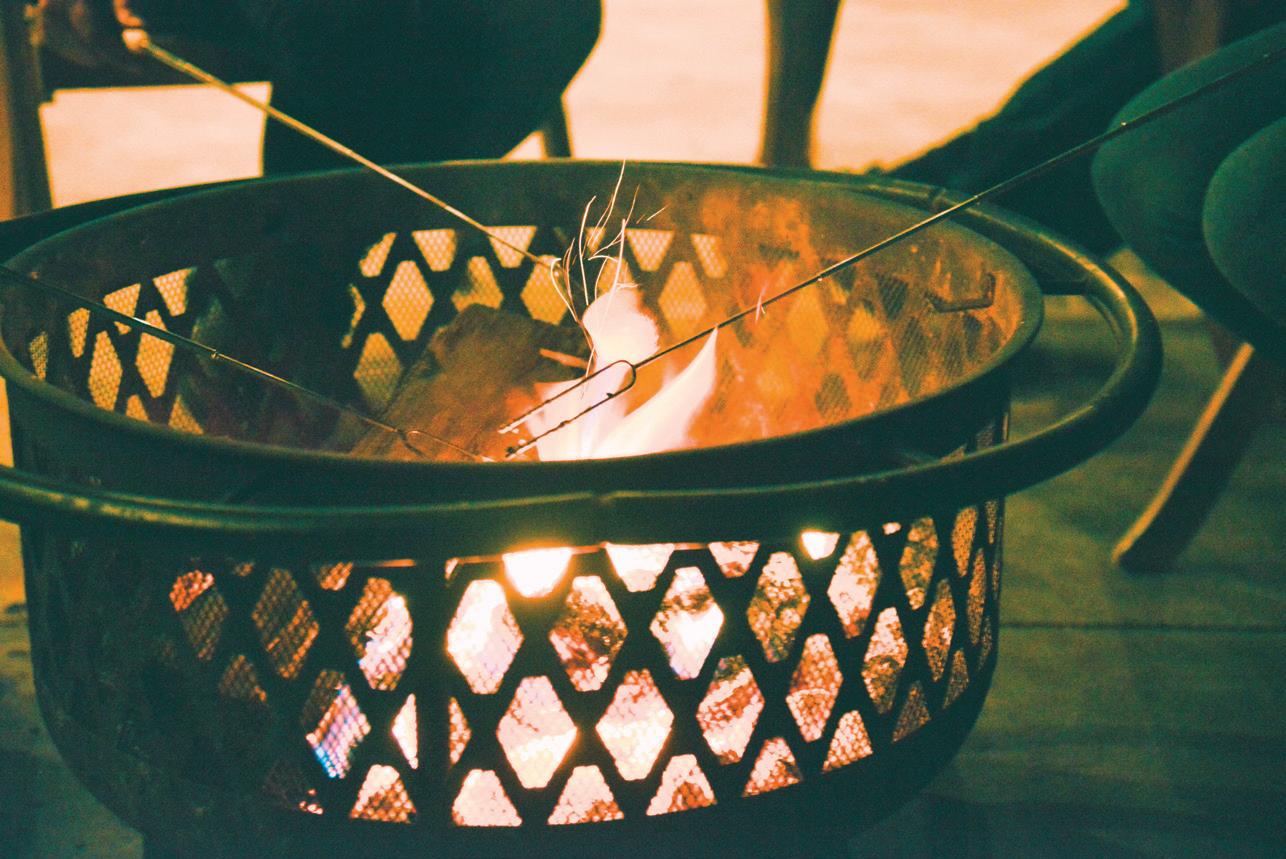
Both are teachers at Crestview Elementary on Vandenberg Space Force Base. Amy teaches third grade and Chuck teaches physical education. They have two daughters. Summers off means

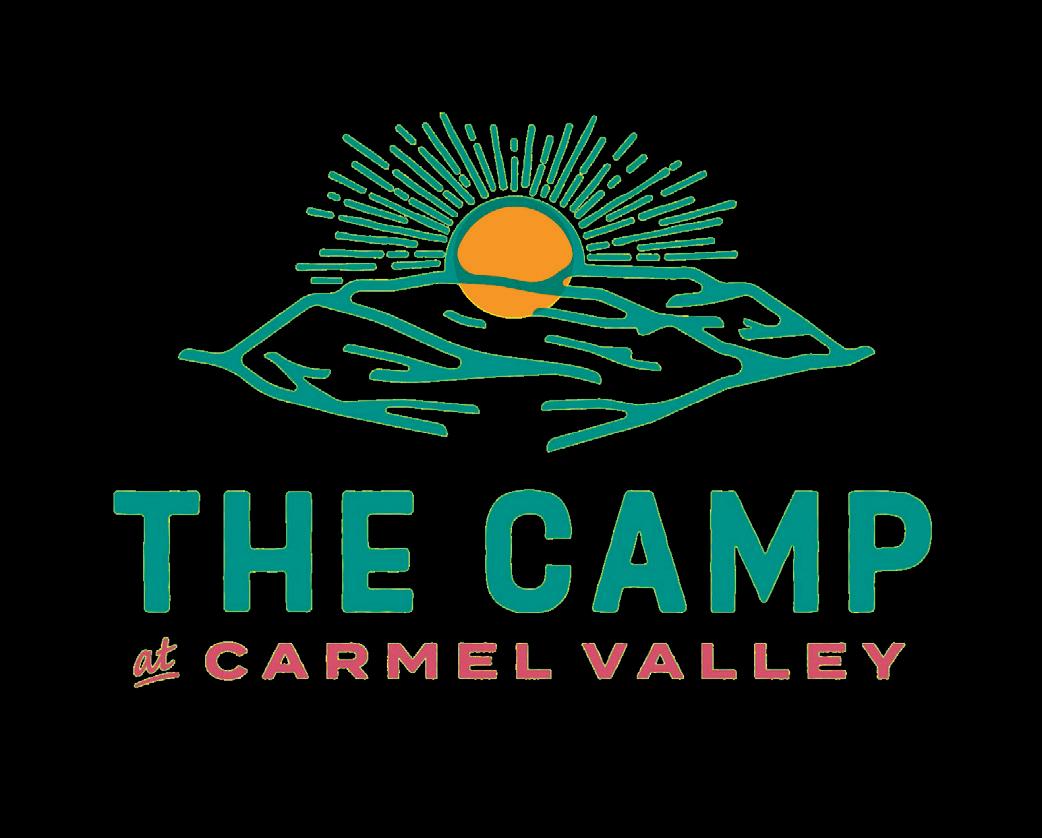
projects around the house, and this seemed like a great addition to their backyard space. Doing it yourself is also a lot less expensive than buying a commercially made wood fi red pizza oven, which can run from around $300 for a cheapo one to $7,600 for the Piccolo 65 Italian Brick Pizza Oven that can be installed inside your home. It weighs 900 pounds, but don’t worry. Shipping is free.
For those without 7.6K to burn, the Maxies’ project might be a good alternative. Once you have the oven shell all covered with the cement mix, it needs to dry for a couple of
weeks. The Maxies studied up for their project by watching YouTube videos. Once the dome is dry, you simply deflate the exercise ball and remove it and the plastic wrap, coffee can, and the box frame for the oven opening and voilà, a pizza oven.
So what would they do differently?

“I’d get better plywood to hold the ball and I’d make the base wider,” said Chuck. They used thin particle board, and when they were removing the dome from the ball, they discovered the base had warped



DIY PIZZA OVEN continued page 18
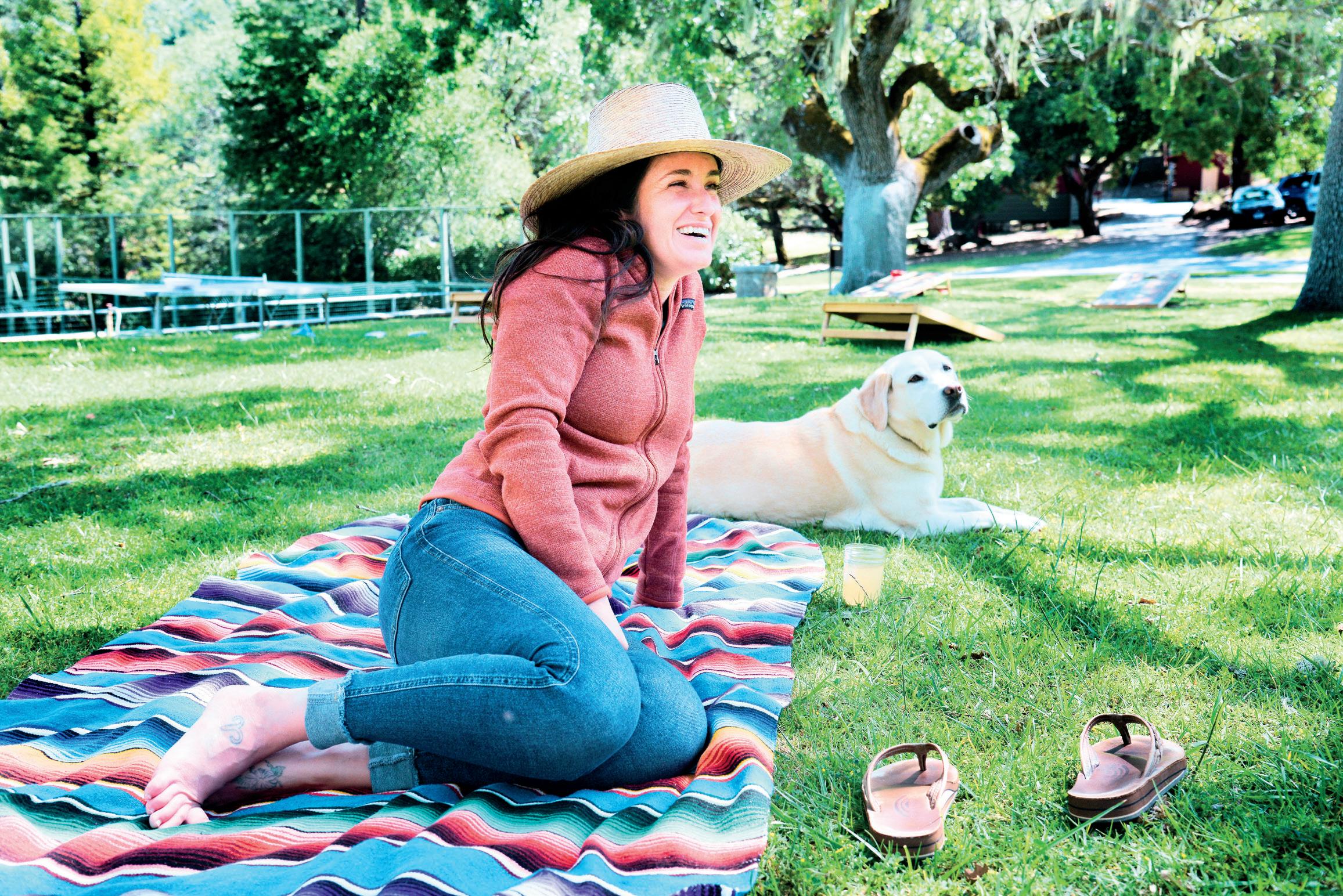
One 52- to 65-centimeter exercise ball

One sheet 3/4-inch plywood




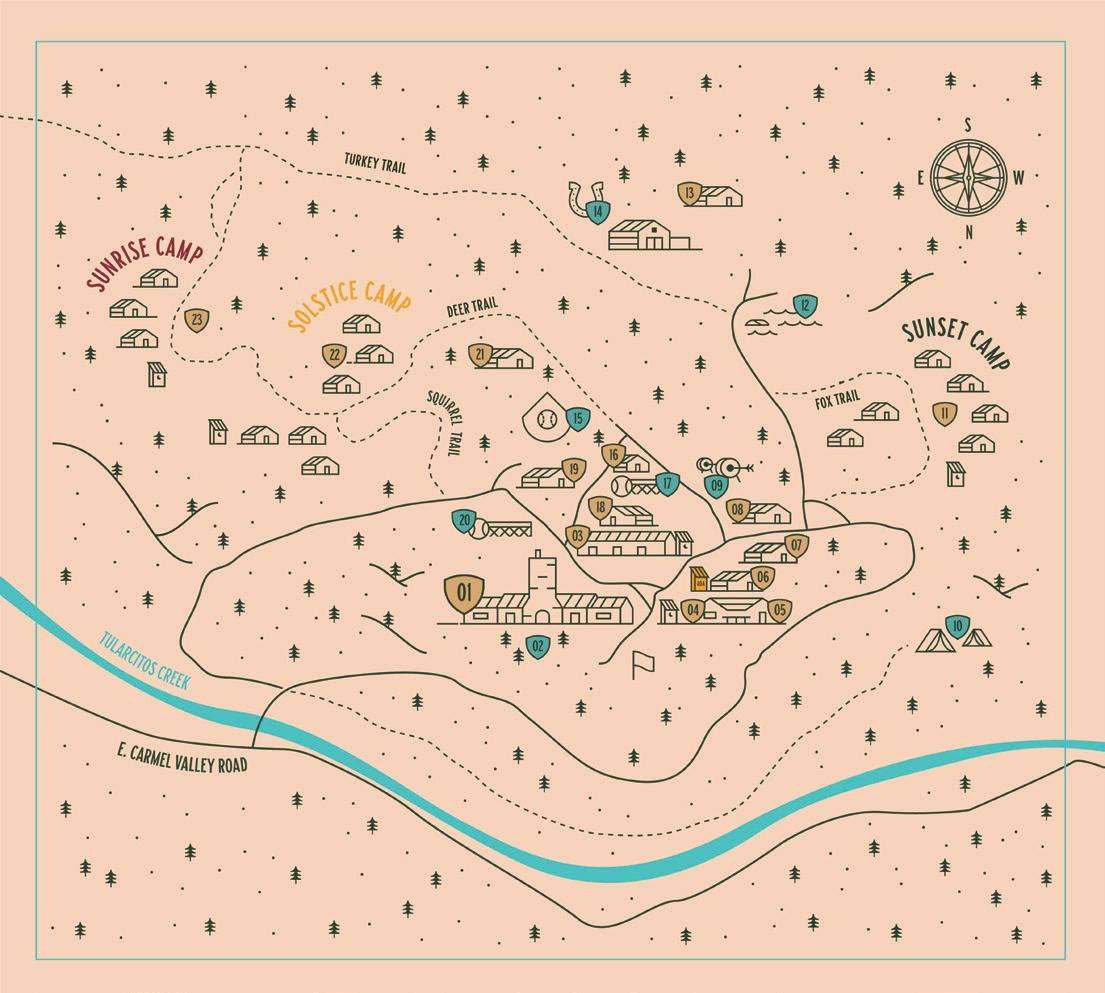



One roll of plastic cling wrap
One 3- to 4-inch diameter can
One 60-pound bag of Portland cement

One 4-cubic-foot bag of vermiculite

20 cinder blocks
Two sheets of fireboard cut to size
Between 50 and 60 firebricks
DIY PIZZA OVEN from page 14 It’s important to have a good metal peel to get the pies in and out of the oven because the wood peels can burn. Chuck Maxie slides a pie toward the fire.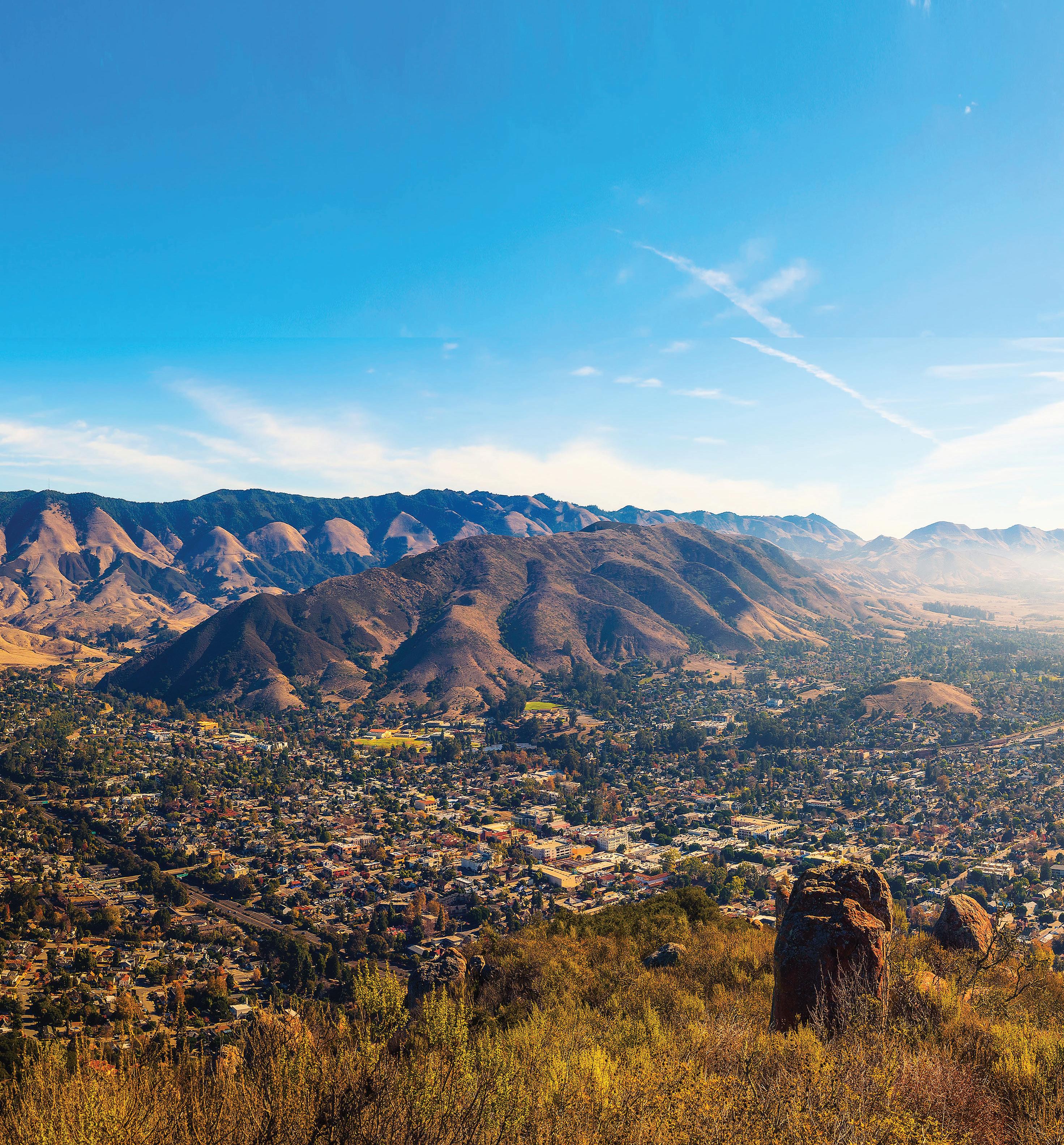














DIY PIZZA OVEN from page 16 under the weight, leaving the bottom of the oven dome uneven.
On top of the cinder blocks, the Maxies used two sheets of fireboard and a layer of fire bricks, which is the surface the pizzas will directly cook on. They purposely didn’t mortar the base together in case they decided to disassemble and move it later.
All told, the Maxies’ oven used 20 cinder blocks, two sheets of fireboard, and between 50 and 60 firebricks.
Once they transferred the dome to the base, they needed more cement to adhere the dome in place (and fix any uneven spots). After curing again, they started with a small fire to look for places other than the chimney where the
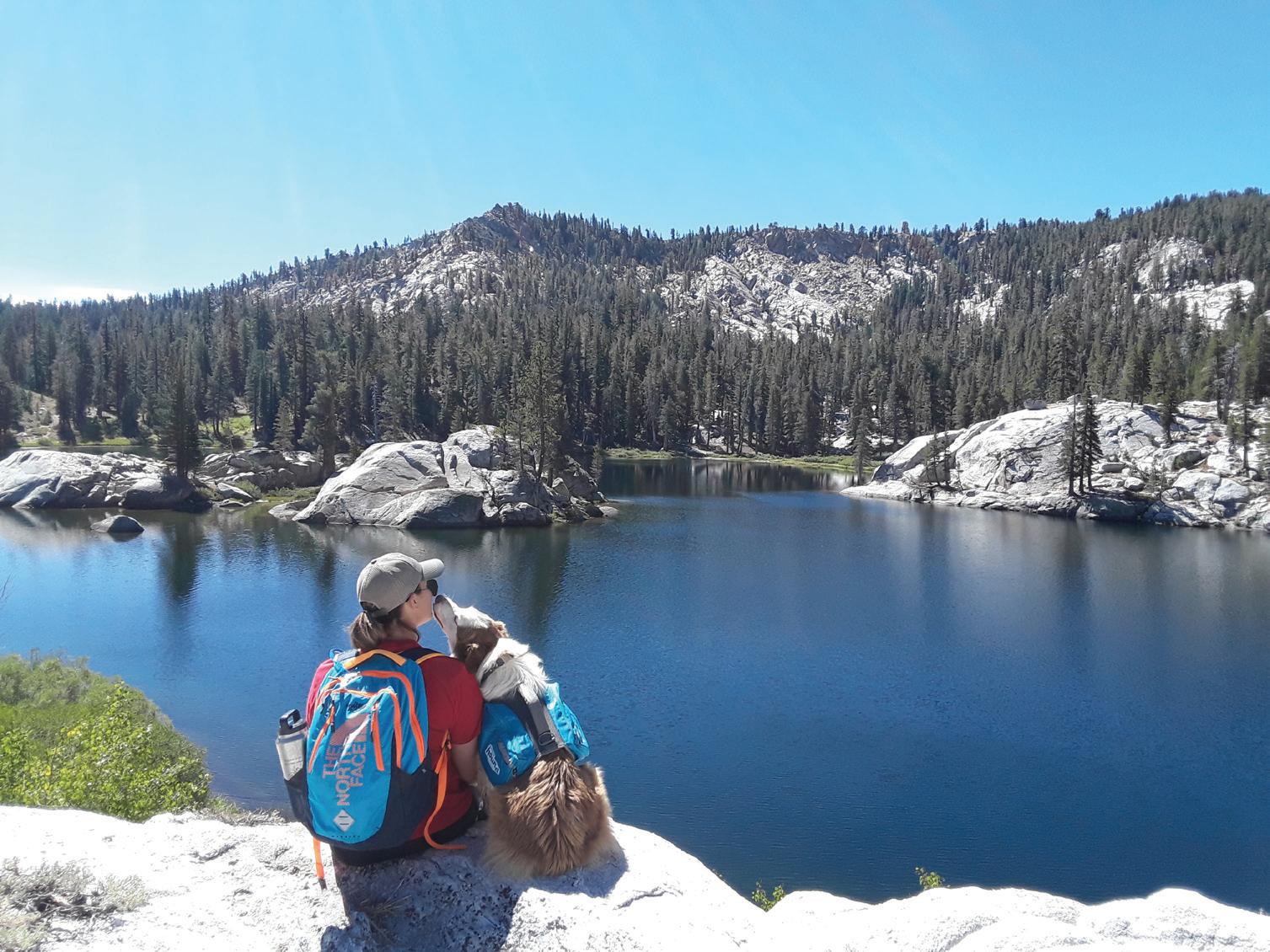
smoke was escaping, and they filled the holes with more cement. It’s a process, but if you do it right, your oven should last for years and years.
Once your oven is done and ready to fire up, it will reach temperatures of up to 800 degrees and bake a pizza in two to four minutes. Getting the fire right is the “hardest part,” Chuck admits. “You know when the fire’s ready when it’s so hot it won’t smoke. It’s wild.”

Oak, hickory, ash, maple, olive, beech, alder, pecan, and cherry wood are good options, especially kiln dried. Most sources list oak as the best.


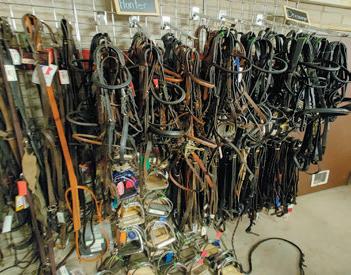

When you’re ready to go for it, place a couple of logs leaning upright in the very back of the oven and start a small fire near the front opening under the chimney. Once the front fire is really going, push it to the back of the oven, and the logs should fall into it and start burning. Add wood as necessary to get it really hot, and as soon as it stops smoking, slide in your first pizza and give it a go.
“It’s not pretty, but it works,” Chuck joked. He wants to eventually finish their oven with marbles or tile, but for now, it’s time to eat.







There’s nothing like cracking open a drink while camping or at the beach, but it can be hard to find anything other than beers or seltzers in outdoor-friendly containers. However, a few companies are shifting gears to more eco-friendly packaging that’s also conducive to bringing wine and spirits outdoors.

A part of SLO Brewing Company, Rod and Hammer’s SLO Stills is a whiskey-focused distillery that has been around since 2019 and offers whiskey cocktails in a can.
“They are carbonated so they are refreshing and ready to drink— served on ice or chilled out of a

can,” said Brian Kerr, SLO Brewing’s marketing director.
Rod and Hammer’s 22-proof beverages put a twist on popular cocktails including its Whiskey Paloma, Whiskey Mai Thai, Whiskey Margarita, and Whiskey Mule, Kerr said.
The distillery also offers readyto-drink, 35-proof, bottled old fashioneds and Manhattans.
“People love this for camping. … They are really good, you pour them over a rock and you’re ready to go. They have whiskey,


bitters, and cane sugar for the old fashioned, and the Manhattan has the vermouth,” Kerr said.
Rod and Hammer’s products are available at its tasting room, located at 855 Aerovista Place, San Luis Obispo, or at Albertsons, Vons, and Total Wine. The canned cocktails start at $18 for a four-pack. Call (844) 756-7845 or visit rodandhammer.com for more information.



To improve sustainability and reduce wine production’s carbon footprint, Sipwell Wine Company—a femaleowned and operated business—sells canned wines, said Hilary Cocalis, Sipwell’s founder and chief go-getter. The wines are made and canned in Paso Robles and its grapes are sourced from the Central Coast.

“Our wines are all made from organically farmed, certified sustainable grapes with zero sugars. The goal of what we are trying to do is put quality wine in a can,” Cocalis said. “I feel like people hesitate buying cans because it could reduce the quality of wine once it’s in a can, but we want to erase that stigma of canned wine being bad. We want to make sure people can have good wine, especially when
they’re outside.”
Sipwell’s five current releases are a sparkling white called Tiny Victories (albariño), a sparkling rosé called Rock Steady (a blend), a still rosé called Perfect Day (grenache), a pinot noir called High Point, and a sparkling red called Go-Getter (dolcetto grapes).
“If you are outside, you don’t need a corkscrew, they’re easy to pack in and pack out—which is great if you can’t have glass at specific locations,” Cocalis said.

Tiny Victories is Cocalis’ go-to for something to sip on during the day or after a long day of hiking because it’s bright and refreshing, she said. The pinot, she added, is
very food friendly and pairs well with barbecue or campfire food. Visit sipwell.co to order wines online—which run up from $42 and can
CANNED COCKTAILS continued page 22
Also available:
• Two additional buildings to choose from – Park Plaza & The Convention Center
• Venues for large weddings/ quinceaneras and parties for up to 800 people





• SM Fairpark is easy for guests to locate and close proximity to hotels
The FountainPavilion is a beautifully remodeled facility at the Santa Maria Fairpark
• Intimate receptions & parties for 50 to 250 people
• Very accommodating packages
• Reasonable rental rates
• Warm paint color & wood flooring to accommodate your vision for the special occasion.
CANNED COCKTAILS from page 20 be ordered in six-packs or 12-packs. Timbre Winery’s growlers


Arroyo Grande-based Timbre Winery takes a different approach with selling wine by offering reusable bottles that can be refilled at the winery, owner and winemaker Josh Klapper said.
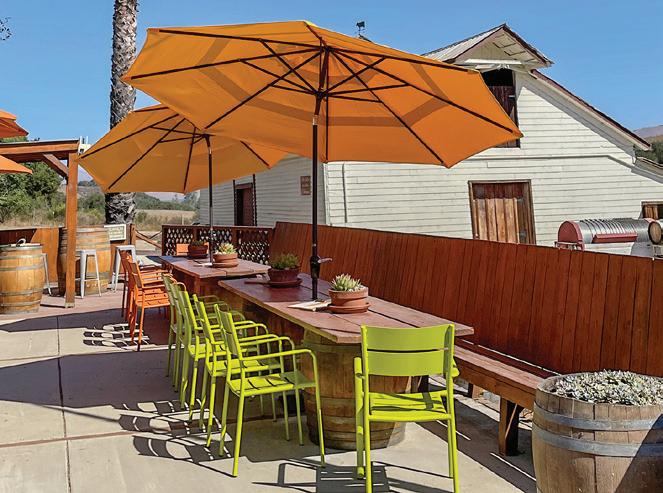


“Long story short, we got the idea from my dad who took a trip to Italy and he was in a village somewhere having lunch at a local winery/restaurant and saw locals come in with gallon water bottles, old milk bottles, and leaving with wine,” Klapper said.

Now, Timbre rotates three to six wines on tap every few months and people can purchase growlers from the winery and refill them for a discounted price.

“That’s what brings in locals, they stop in, fill their growler. Our tasting room is on the way to Lopez Lake. We have a lot of customers who will come into the tasting room, fill up their growler, and hit the road,” Klapper said. “We brought wine in growlers on my backpacking trip, and after that we used it to filter water into; it’s something that can be
used again and again.”
The growlers are double-walled— similar to Hydro Flasks or other insulated bottles—and specifically designed for wine. When the wine is poured into the growler and sealed, it will stay good for days.
“You can take your favorite bottle of wine, you could throw it off a cliff and it will survive.” Klapper said. “These are super strong, and you can take them anywhere and they will hold temperatures.”
Growlers cost about $30, and the first fill is free. Buy a growler at Timbre Winery’s tasting room, located at 225 E. Branch St., Arroyo Grande. Call (805) 270-4308 or visit timbrewinery.com for more information.


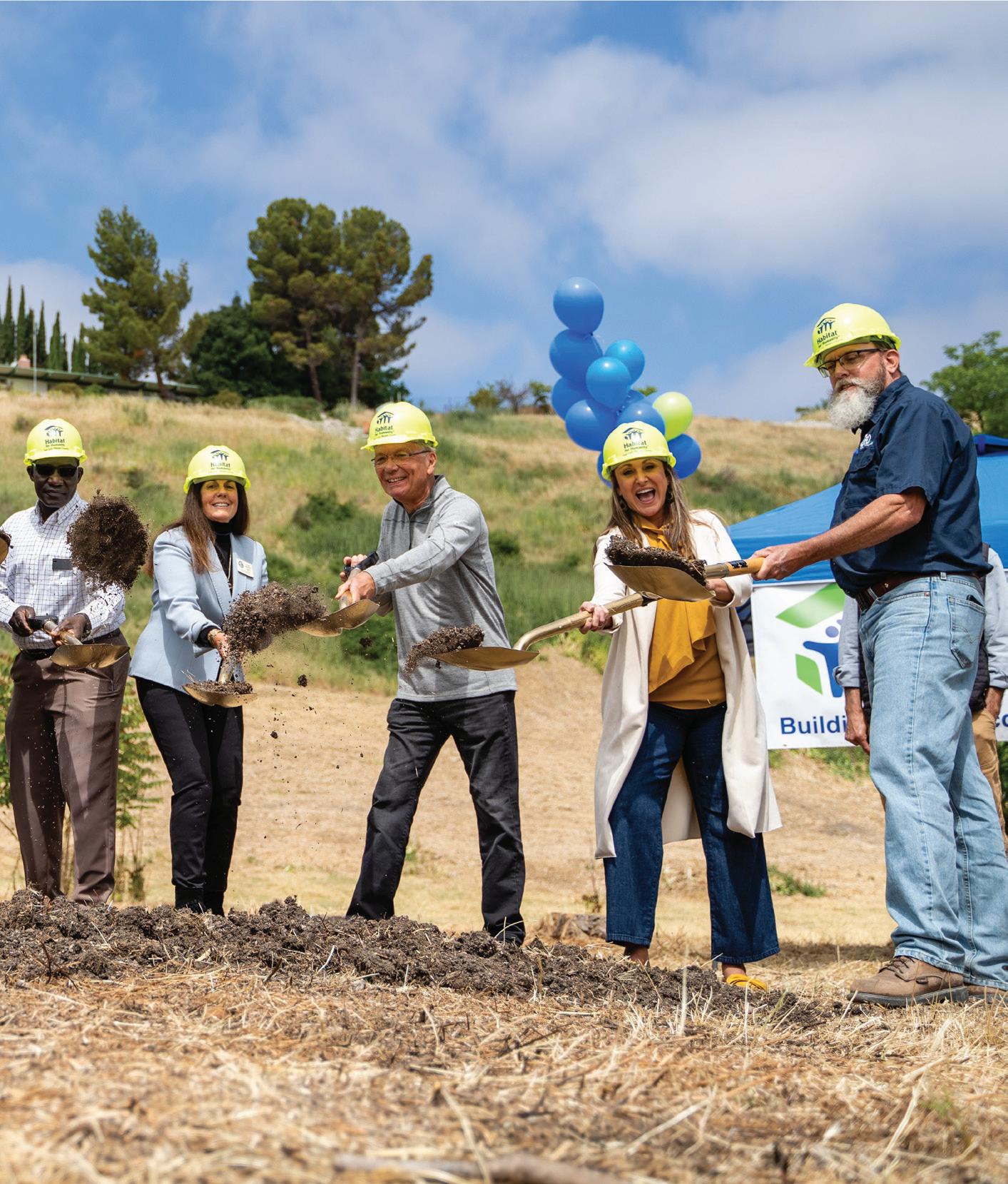





Chances are, you’ve been on the California Coastal Trail without even realizing it.
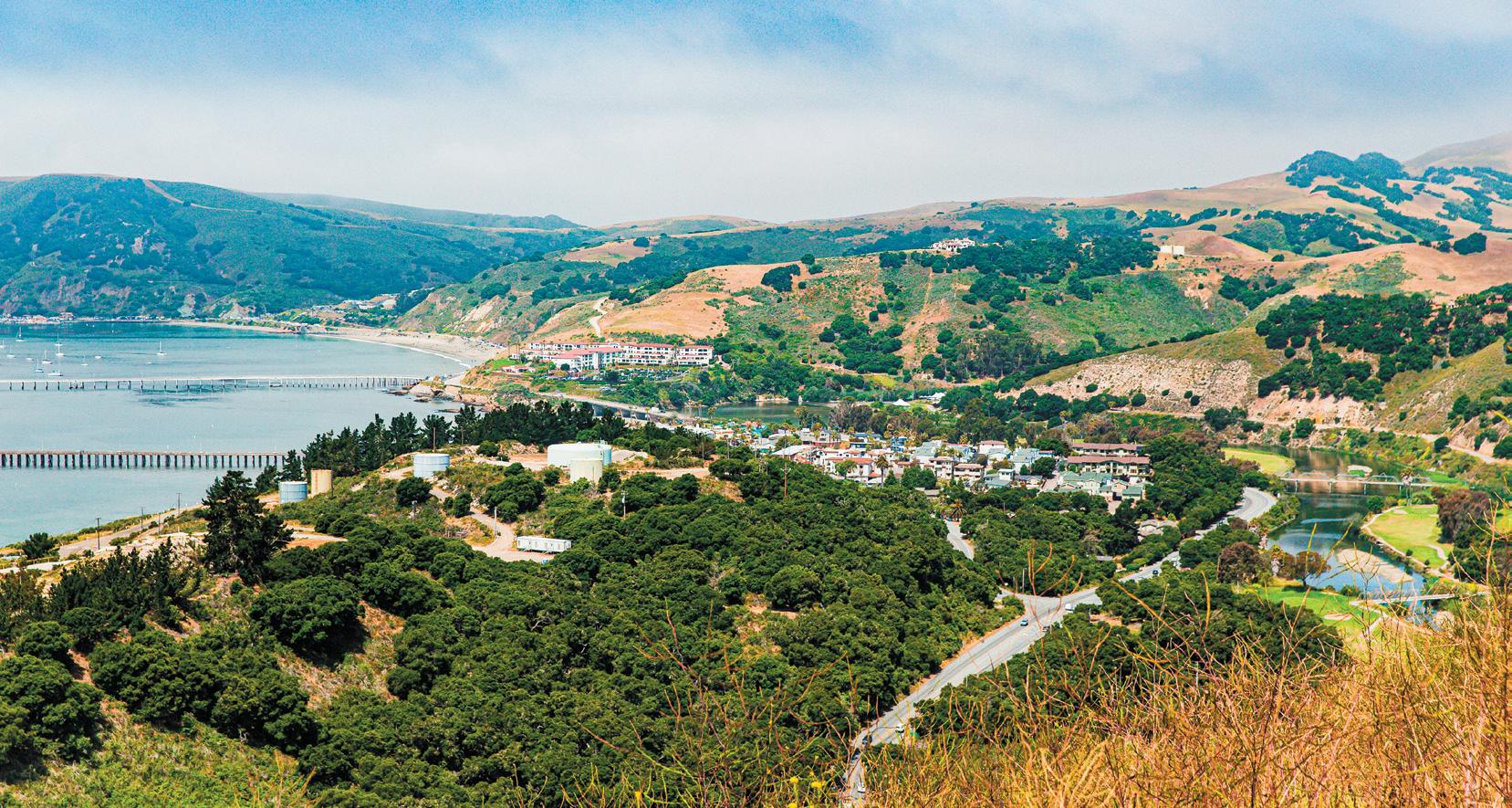
If you could see the Pacific Ocean, smell the salty air, and/or hear the waves crash, your feet were likely touching the trail— but maybe you knew it by another name.

The wooden boardwalk above Moonstone Beach in Cambria. Point Buchon, which begins its windswept trek along coastal bluffs in Moñtana de Oro and makes its way between poppies onto PG&E’s Diablo Canyon property. The wide strip of sand that runs from Pismo Beach through the Oceano Dunes State Vehicular Recreation Area. Surf Beach at Vandenberg Space Force Base.
Each plays a role in completing the grand vision that California has been chasing for at least half a century: building an interconnected trail system that runs
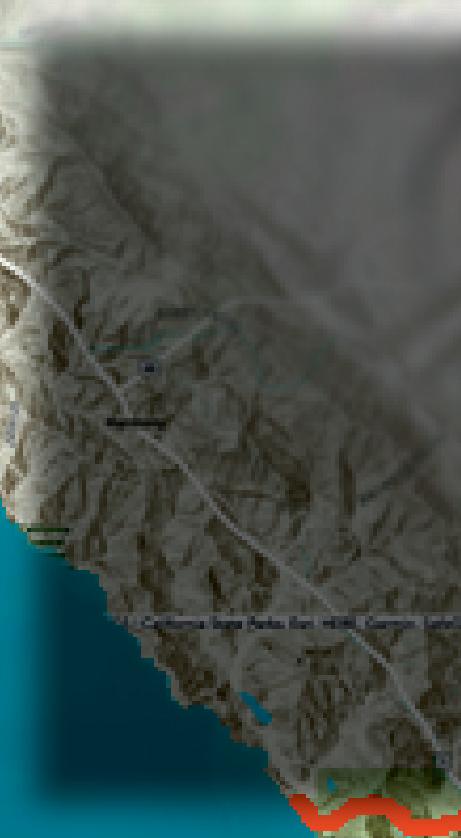
the more than 1,200-mile length of the state’s coast from Oregon to Mexico.
“Every segment is a really great segment, and we want more segments, and we want the general public to get out there and use it,” said Linda Locklin, the California Coastal Commission’s Coastal Access program manager. “The Coastal Trail is not a single thread. It is a multistrand network trail.”

Since she started her role with the commission in 1990, one of Locklin’s tasks has been to help complete as many strands of that network as possible. The commission and three other state agencies are tasked with implementing the trail: Planning and permitting fall under the commission’s purview, she said, the State Coastal Conservancy provides grants and helps facilitate funding from other entities, State Parks owns about 25 percent of the coast,
and Caltrans is improving portions of the trail and building new segments as part of its projects.
The California Coastal Trail is roughly 70 percent complete, and fi lling in the remaining gaps is up to the state agencies, local governments, and nonprofits dedicated to the cause. Stitching the trail along the last 30 percent will require perseverance and planning.
Locklin said the two biggest impediments are funding and privately owned land.
“We don’t have the money to build every segment of trail,” she said. “The law says that if someone wants to develop their private property, they need to get a permit from the Coastal Commission. And through that process, the Coastal Commission has a right to ask for mitigation.”
Those mitigation measures could include requiring public access to the coast and




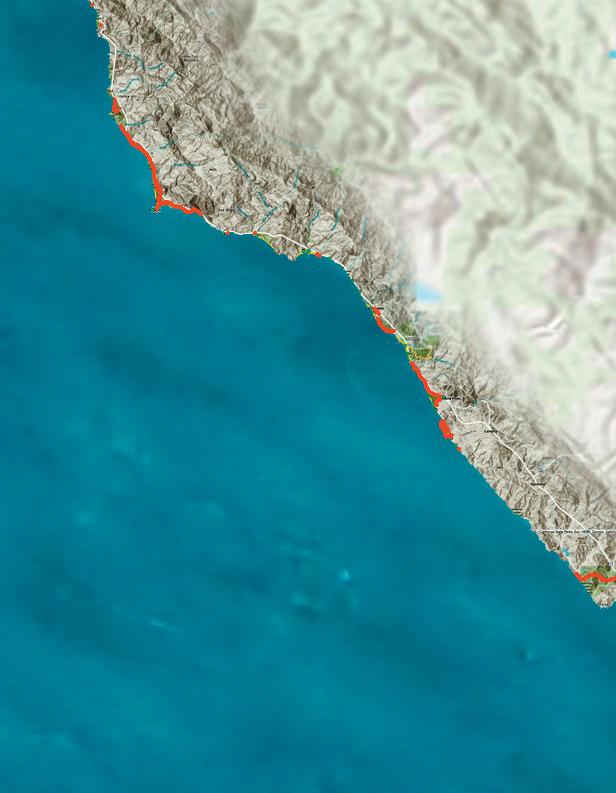
easements that enable trail building. Cities, counties, and nonprofits can also acquire privately owned land to construct trail segments—but both processes take time, often years, to complete.
Portions of the Central Coast’s coastline will remain inaccessible to the public into the foreseeable future, such as Vandenberg Space Force Base between Point Sal and the Gaviota Coast north of Point Conception, as well as Diablo Canyon between Moñtana de Oro State Park and Point San Luis, and large stretches of Big Sur.

“There are areas that are really challenging and will take decades or more—and Big Sur is one of them, just looking at the topography there and the private ownership,” Locklin said. “As opportunity comes up, we do our best in order to put in pieces of Coastal Trail.”
Every piece, she said, is significant.
“It may be 100 feet long or it may be 300 miles long,” Locklin said. “It provides an opportunity for anybody who wants to see and enjoy the coast, a place to walk and hike and sit on a bench to see our coastal property. It belongs to all of us.”
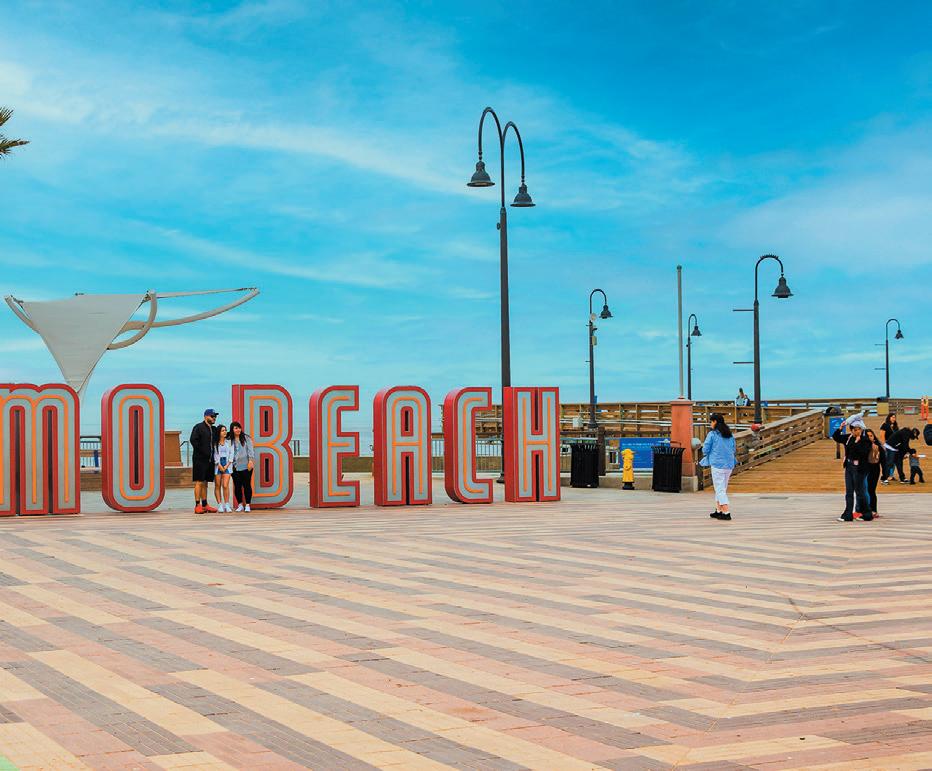


As Locklin puts it, the state’s been “working” on the trail for “a really long time.”
In 1972, California voters passed Proposition 20, mandating that “a hiking, bicycle, and equestrian trails system shall be established along or near the coast” and “ideally the trails system should be continuous and located near the shoreline,” according to californiacoastaltrail.org. The proposition
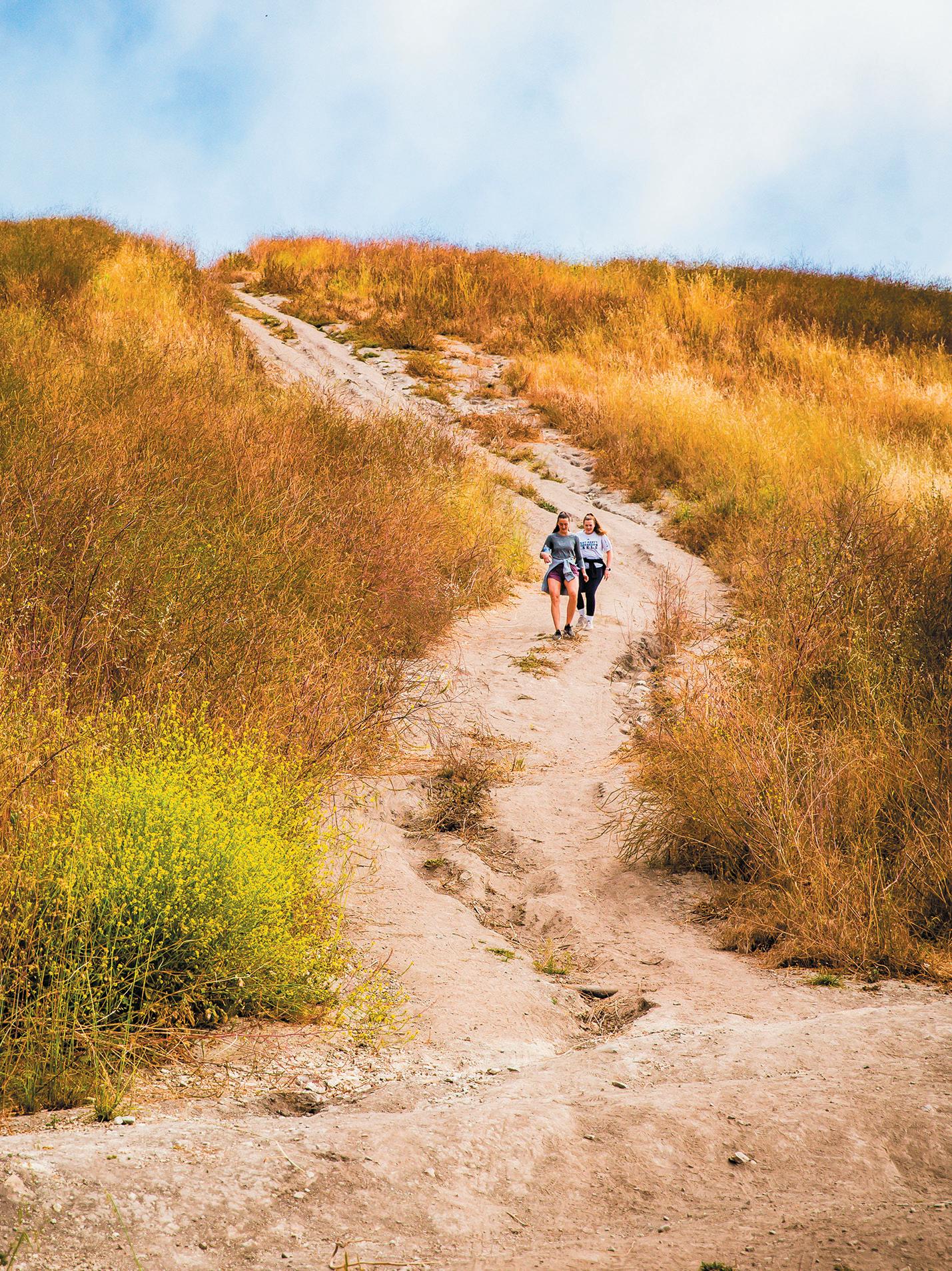


established the California Coastal Commission, which the Legislature made a permanent state agency by passing the Coastal Act in 1976.

That act also emphasized the state’s commitment to allowing the public to access the coast, preserving coastal habitat and agricultural lands, and prioritizing coastal recreation. This includes mandating local governments in the state’s coastal zone to identify potential Coastal Trail alignments in their local coastal plans.
The trail gets highlighted more and more every decade, Locklin said. Legislation passed in the 2000s formalized the relationship between the commission, conservancy, State Parks, and Caltrans, including a 2007 bill from then Assemblymember John Laird.

Currently a state senator, Laird (D-Santa Cruz) has had the trail in mind for the duration of his time in public service, from the Santa Cruz City Council to the Legislature to being the state’s secretary of natural resources.
“You always have hobbies, you always have two to three things in the background that you’re always trying to move to the next step,” he said. “This is like one of those projects.”
During his time in office as a state senator, he aims to try to make as much progress as possible on different pieces of the Coastal Trail in his district, which includes Santa Cruz and San Luis Obispo counties and parts of Monterey and Santa Clara counties.
“So we’ve been working on it,” Laird said. “I think California is a really special place, and we have to protect a Coastal Trail so we can protect it for generations to come.”
A significant chunk is Big Sur. In a March 2022 letter Laird sent to the Big Sur Coastal Trail


Working Group, he said that trail alignment through Big Sur was one of the issues he worked on as an Assembly member (2002 to 2008) that was still on the table when he was sworn into the Senate in 2020. Controversy over the trail alignment boiled down to a difference between what the Big Sur community wanted—a single track—and what state agencies envisioned—a larger network of trails.
“I am pleased to tell you that I believe we have a resolution,” he wrote.

The proposed resolution includes two parts. The fi rst: agreement on a single alignment of the trail. The second will involve discussion with the U.S. Forest Service (Los Padres National Forest) and some private property owners.
“We will have to work together to ensure that the necessary amenities, whether they be restrooms in certain locations, signage,

COASTAL TRAIL continued page 26
Find a California Coastal Trail segment near you by visiting the-california-coastal-trail-1-coastalcomm.hub.arcgis.com. There you will find an interactive map that highlights where the trail exists and where it’s missing. Get Outside re-created this map of SLO and Santa Barbara counties using the Coastal Trail Interactive Map Viewer. Yellow and red signifies where segments of Coastal Trail exist and circles denote coastal access points.
MAP CREATED BY ALEX ZUNIGA USING THE COASTAL TRAIL INTERACTIVE MAP VIEWERCOASTAL TRAIL from page 25
mapping, collateral, and basic trail development, provide for the clarity and safety of the trail,” Laird wrote. “Getting to an agreement on this issue is no small victory. … [I] believe that this outcome is a good one for all local residents who have worked on this issue for so long.”

While the resolution is a start, the trail through Big Sur still has a long way to go.
A connector that closes a gap between trail segments in Morro Bay and Cayucos is a little closer to reality. As part of Laird’s budget priorities last year, he was able to secure $1.5 million for the Cayucos Land Conservancy to acquire 2,250 acres of land between the two SLO County towns. The land will create a new open space preserve for hiking, other recreation, low-cost camping, and trail connection to the beach.
Nick Franco, who recently retired from his post as the head of SLO County Parks and Recreation, said both the connector trail and the land acquisition are part of a larger project. The goals include building a safer bike route along but separate from Highway 1 that connects Morro Bay to Cayucos, allowing public access to and recreation in the canyon that once
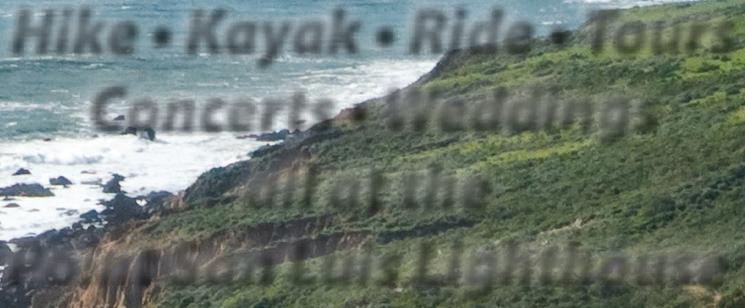
belonged to Chevron, as well as protecting open space along the coast from development.


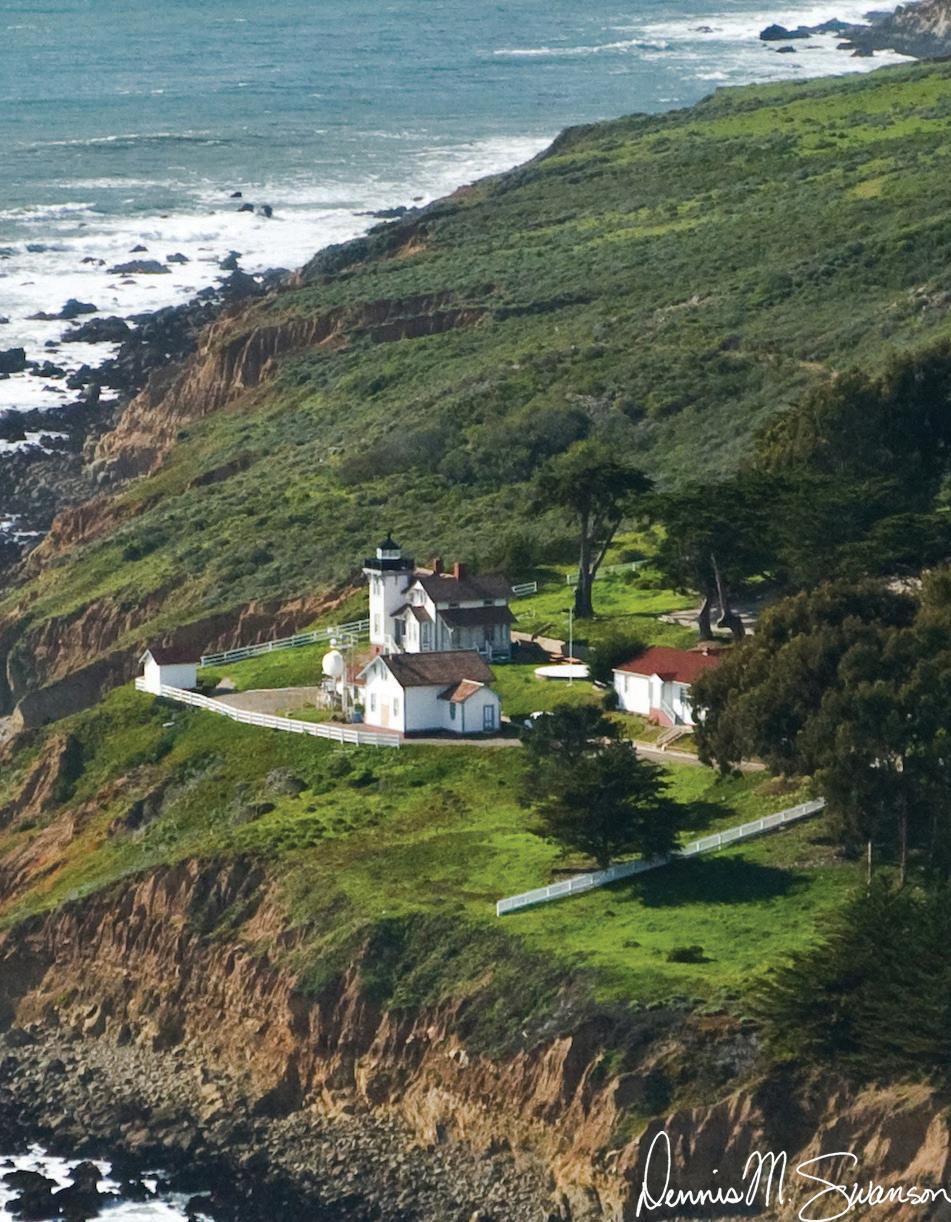
SLO County Parks and Recreation Planner Elizabeth Kavanaugh has spent 10 years working on the Morro Bay-Cayucos connector trail project. She said her predecessor also worked on it for about fi ve years.
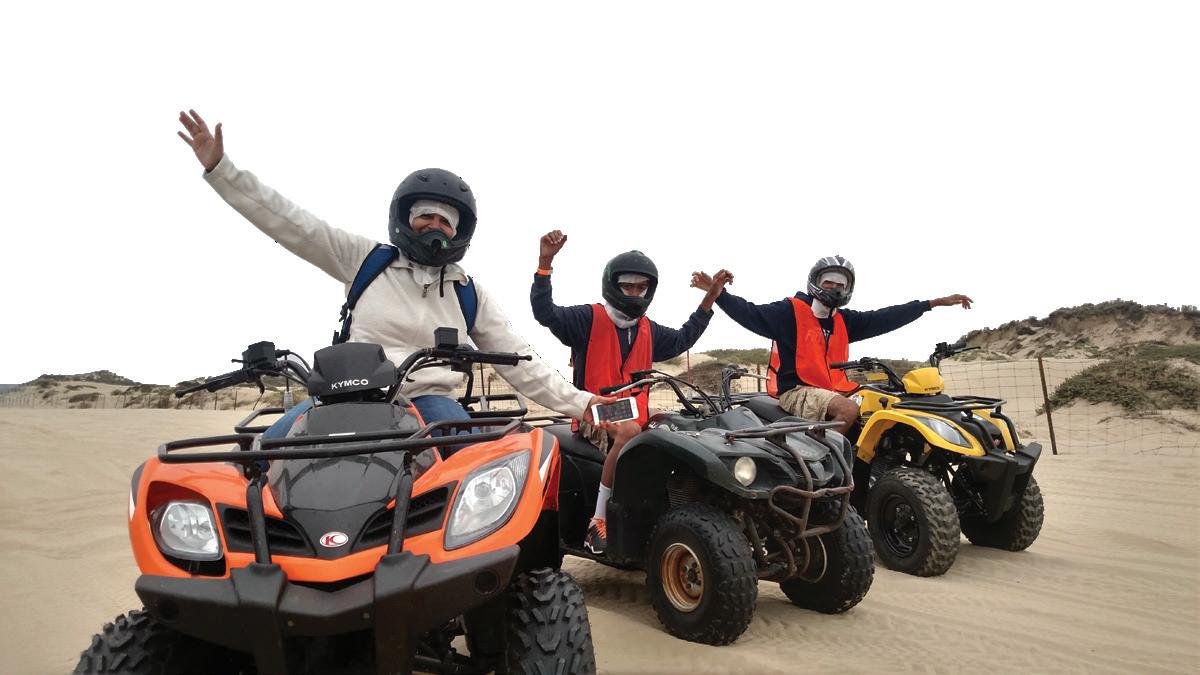
A 1.25-mile-long, 12 foot-wide, safe, multi-use strip of asphalt is slated to run from the North Point natural area on the north end of Morro Bay’s beach, across Toro Creek along the dog beach and highway, and connect to Studio Drive in


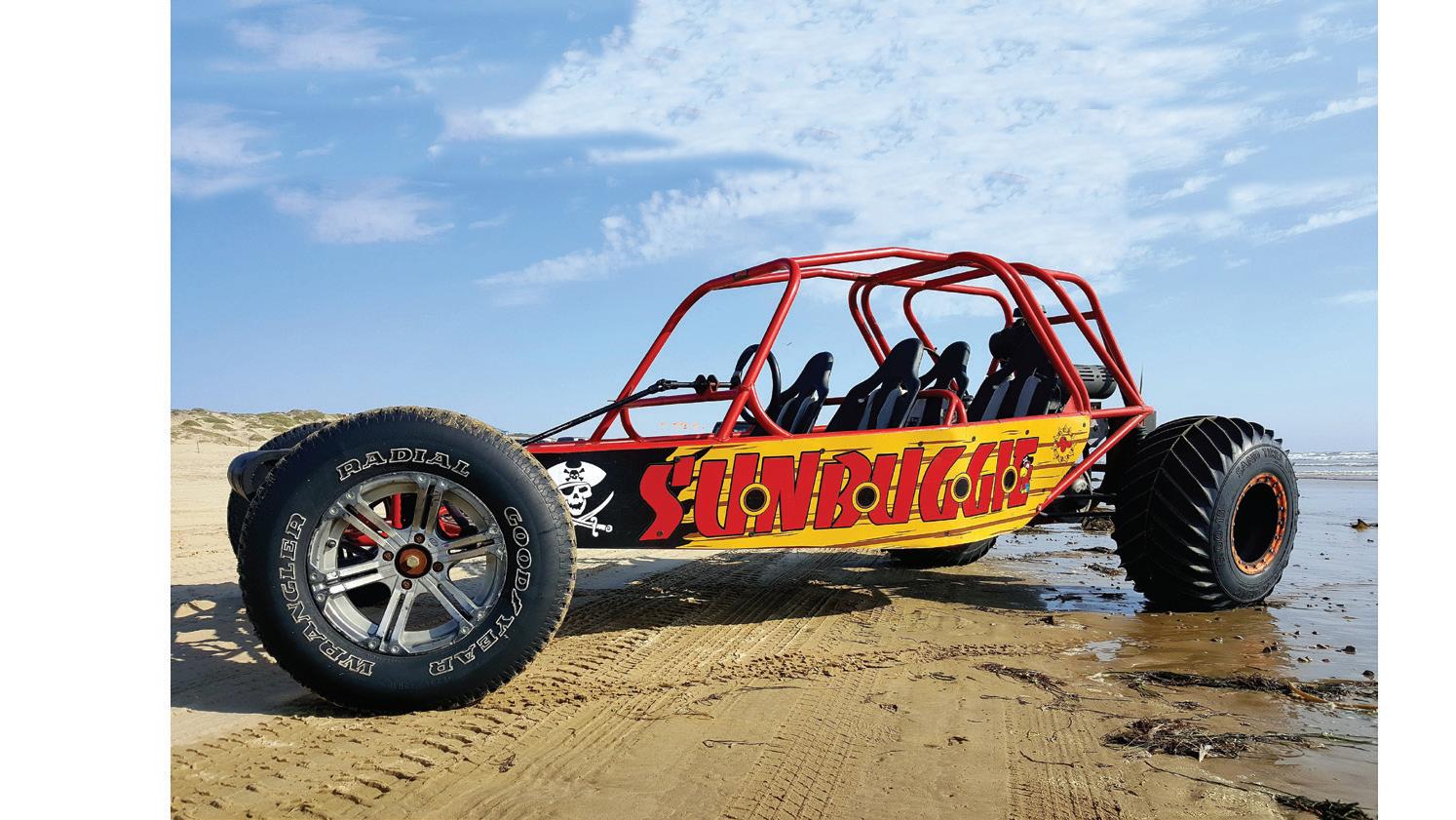
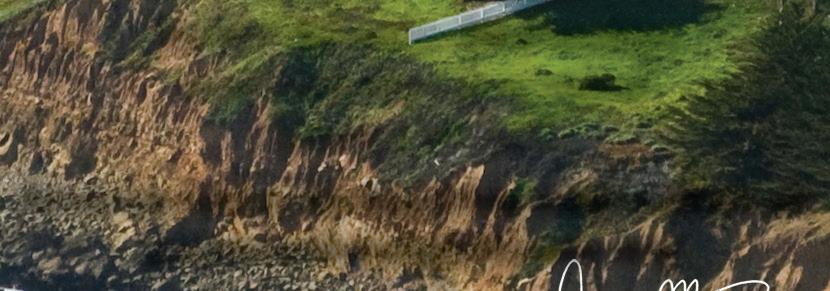
Cayucos. It will complete a 10-mile bike and pedestrian path—4 miles already exist in Cayucos and more than 5 in Morro Bay.
“It’s going to be magnificent when it’s built. Just the views and the vistas. It’s crazy out there. It’s so pretty,” she said. “It will also be ADA accessible.”

The longest and hardest part, she said, was acquiring the land to build the trail, which belonged to Chevron on the east and west sides of Highway 1. It’s always the main hurdle to building trails, she added.

“We have to get permission from every single person who that trail traverses through. So getting all the landowners to say yes is a big,
hard, long process,” Kavanaugh said. “Getting the owners to be willing to have a trail on their site is a big, big challenge.”
After completing an environmental impact report on the project in 2010, going through the federal environmental review process, applying for grants to fund the project, and coming to an agreement with Chevron, the county received a $7.4 million grant in 2022 from the California Transportation Commission to build the trail. It took coordination between the county, Caltrans, the city of Morro Bay, the San Luis Obispo Council of Governments, and
continued page 28
The premiere high school on the Central Coast of California with 100% of students meeting California’s college requirements. See what makes us different.







Traditional Affordable

Christ-centered







Rigorous Don’t you want a school that mirrors your family’s values in the classroom? www.sjhsknights.com

other state and local agencies and nonprofits to get to this point.
“Having the land acquired and then having the money to construct really kind of lit a fi re under the project. And now we’re going through Coastal Commission review,” Kavanaugh said, adding that she expects construction to start in late 2024/early 2025. “Believe it or not, that’s a pretty good timeline to build trails.”



Once complete, pedestrians could choose to walk on the beach that connects Morro Bay to Cayucos or on the paved pathway, and bicyclists will be able to travel safely between the two.
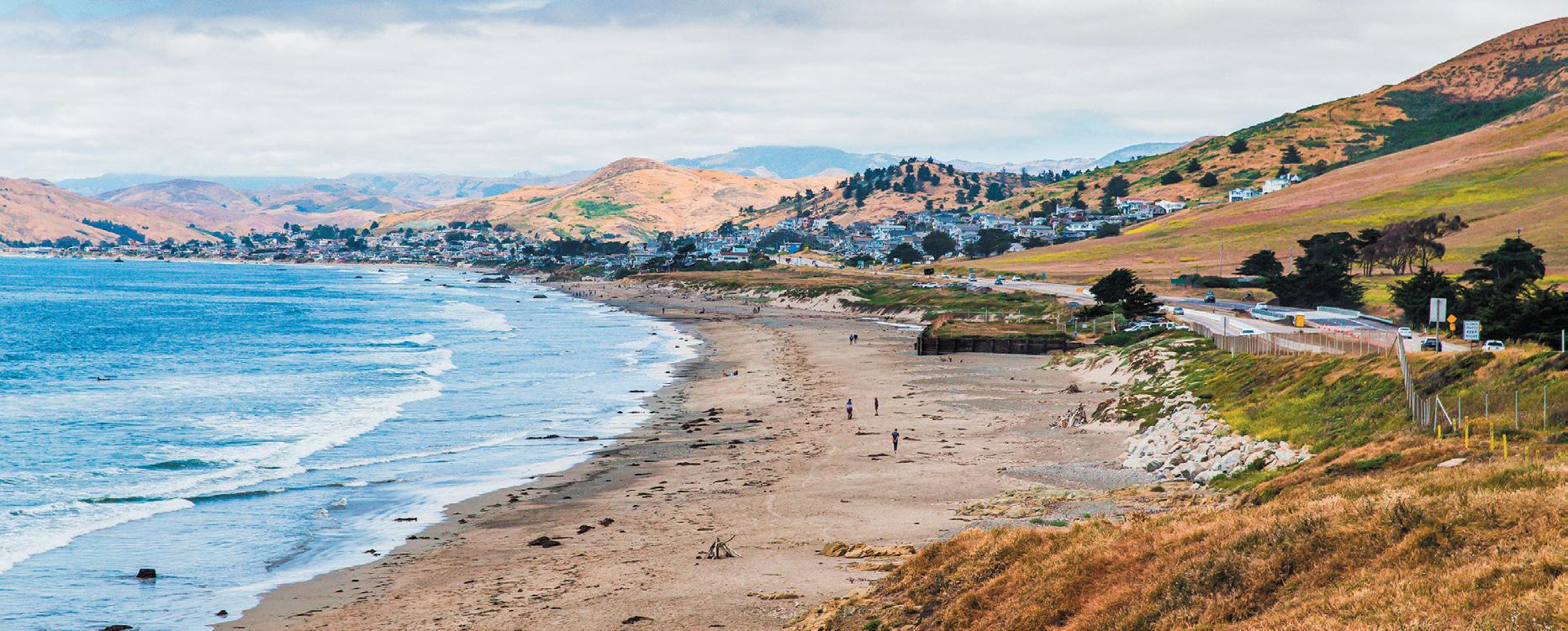
Tim Duff, a Coastal Trail project manager for the California Coastal Conservancy who focuses on the SLO County portion of the trail, said the connector trail is probably the most exciting project that’s got funding and is heading to construction.

“I guess we could call it closing a gap in the Coastal Trail,” Duff said. “That’s super exciting.”
Other opportunities, he said, lie within the State Parks system: Hearst San Simeon State Park has miles of shoreline on the west side of Highway 1. A 3-mile portion north of Piedras Blancas lighthouse is closer
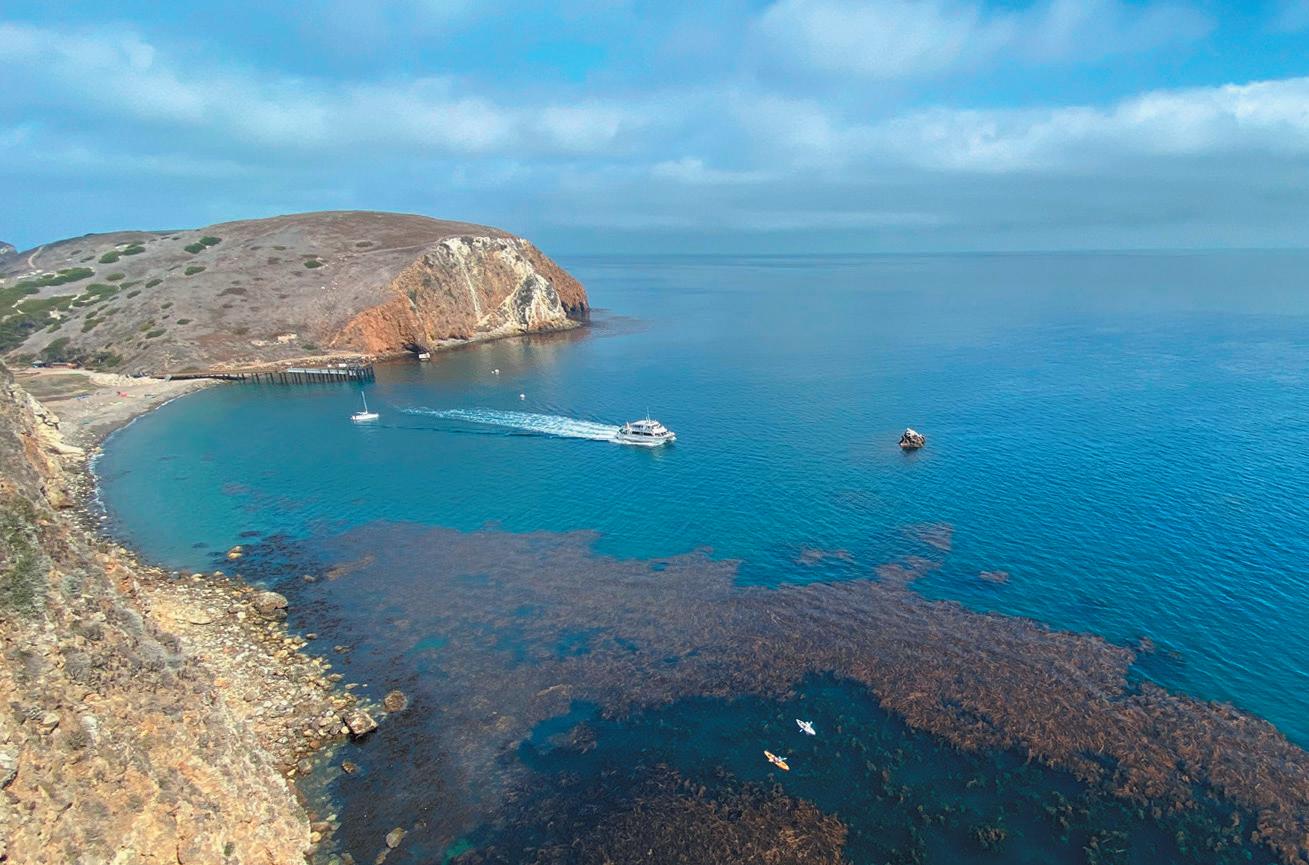
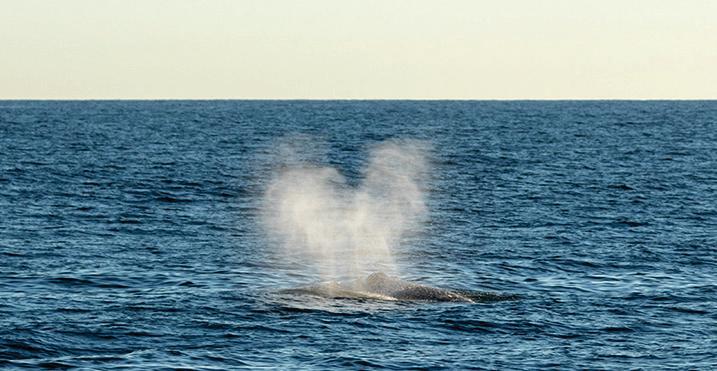

to Coastal Trail reality than the rest. As part of the realignment of Highway 1, Duff said, Caltrans and State Parks agreed to build a trail along the bluffs.
“They don’t have the funding they need,” Duff said of State Parks. “That’s an opportunity that’s been there for 15 years, and there hasn’t been a whole lot done to open it up to the public. So we’re working with them to get some funding.”
He sees the Oceano Dunes State Vehicular Recreation Area as another opportunity. The park is tied up in litigation over a Coastal Commission decision that bans vehicles from the state park. Although people can currently walk the sand from Pismo Beach all the way to Point Sal, it’s not necessarily
safe. If vehicles can no longer drive on the beach, Duff said agencies could work together to improve public access—such as building restrooms, more parking areas and ingress from Highway 1, and boardwalk trails.
“The Coastal Trail encompasses all different types of trails, whether it be a sandy beach or an undeveloped bluff top or even an urban waterfront, those are all pieces of the Coastal Trail,” Duff said. “While the goal is to string together a continuous 1,250 miles of Coastal Trail, for the typical visitor, they just want to be able to park their car on or near the beach, fi nd a restroom, and enjoy a walk on the beach or blufftop.”
In southern Santa Barbara County, Caltrans is building restrooms, parking areas, and closing Coastal Trail gaps as part of a Highway 101 widening project. Caltrans District 5 Project Manager David Emerson said that it’s a 10mile corridor being widened in 2 mile chunks.
“And we’re basically building sections of the Coastal Trail that align with what we’re building,” he said. “In some cases, we get the funding, design the trail, and build it. … In some cases, the local agency takes over the design and build.”
A good example, Emerson said, is the Santa Claus Lane bike
COASTAL TRAIL continued page 30
ALL AGES · ALL SKILL LEVELS
Minors Must Be Accompanied By An Adult
Includes Instruction and Equipment Reservations Required

• SHOTGUN RANGE: Trap, Skeet, 5-Stand and a new Mini-Sporting Clays field. On-site instruction and loaner guns (perfect for beginners!)

• RIFLE-PISTOL RANGE: Outdoor, covered range with shooting distances out to 700 yards on paper targets or steel gongs
• ARCHERY: Newly rebuilt stationary target range and a 3D walking course

• HOGUE ACTION PISTOL RANGE: 14 bays ranging from 20-60 yards
• GUNS AND LADIES (GALS): Shooting clinics taught by women, for women
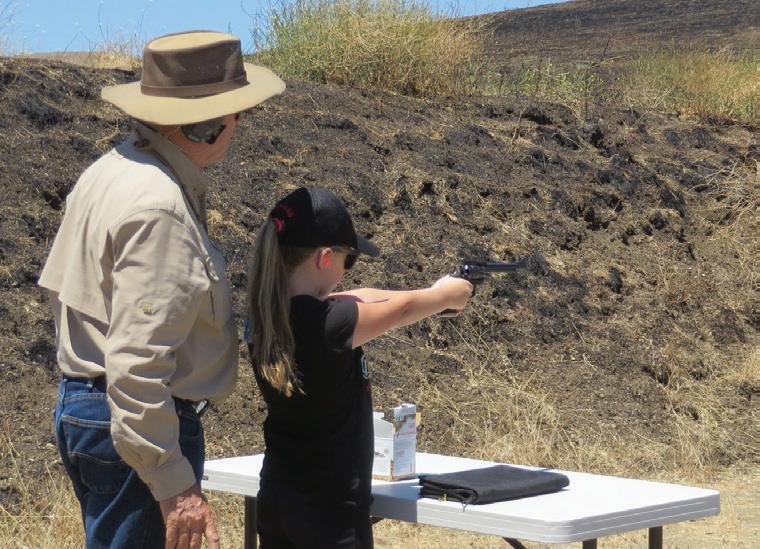

• COWBOYS AKA CHORRO VALLEY REGULATORS: Monthly SASS competitions with an annual match in August/September
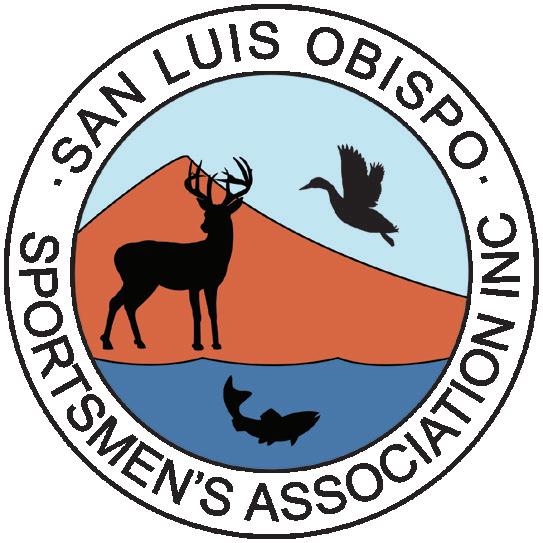
• BLACK POWDER/MUZZLELOADERS: Monthly matches and annual match in July
• DELTA LONG RANGE - CCLRS: Learn and sharpen your skills with targets from 25 to 1500 yards
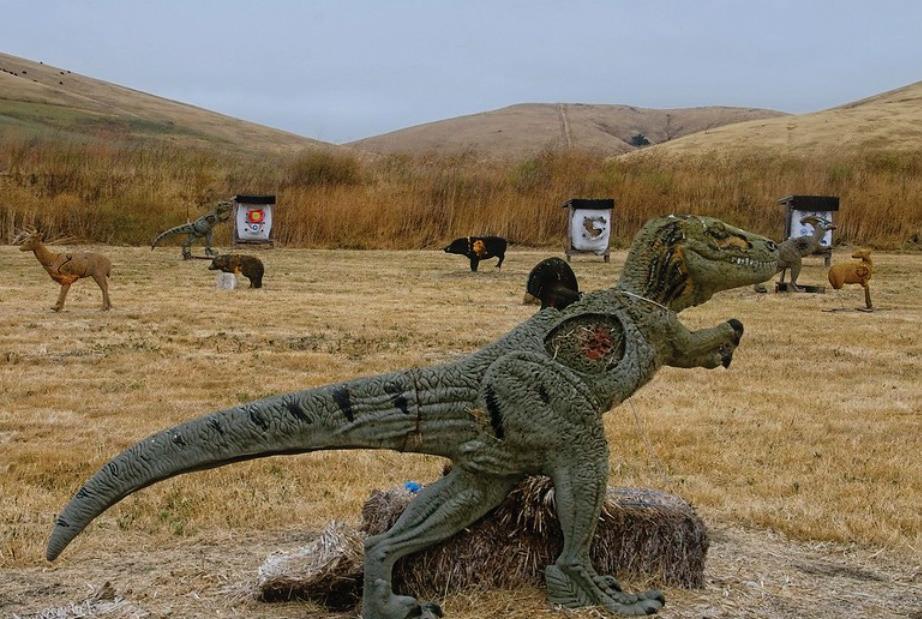
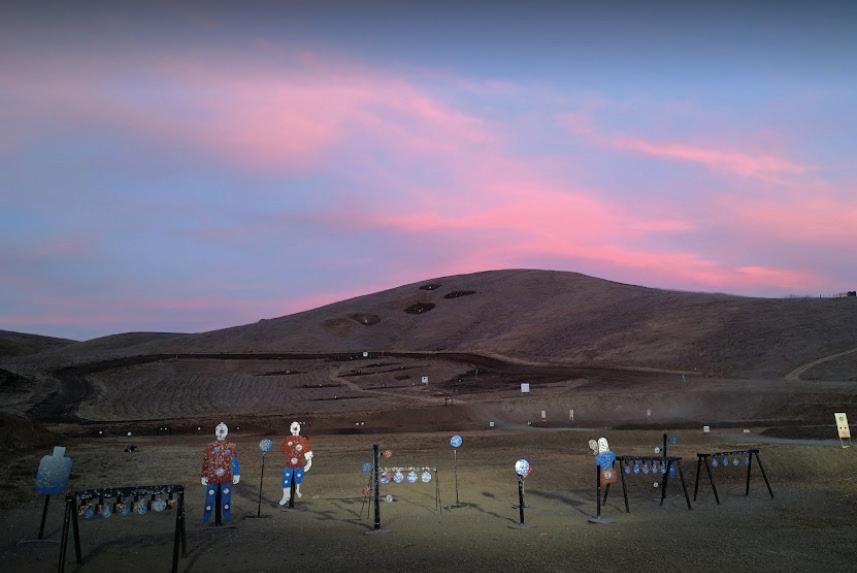
• HUNTER SAFETY: Dates listed on our website
• PRIVATE EVENTS/PARTIES AVAILABLE
RIFLE-PISTOL RANGE
Sat-Sun 8am-4pm
Thur-Fri 8am-9pm
TRAP AND SKEET RANGE
Mon, Thur, Fri 9am-2pm Sat-Sun 9am-3pm
Ladies & Student Discount Night
Thur-Fri 3pm-8pm
ARCHERY RANGE
Sat-Sun 9am-2pm
Hours Subject to Change
path between Estero Street in Carpinteria and Sand Point Road in the county along the Salt Marsh Reserve on the coastal side of the highway for about a half a mile.
“It makes a big difference in the cyclists’ experience. This allows them to take a dedicated Class 1 trail that is separated from the highway,” he said. “It’s all about just closing gaps.”
He added that working in the coastal zone can be challenging. Not only do agencies have to contend with sensitive habitats and development restrictions, but topography can also be a barrier— not just to building trails but to maintaining existing trails.

“One of the major difficulties in maintaining trails along the coast is erosion and resource impacts,” according to State Parks, which responded to questions via email.
“As coastal erosion increases, trails are becoming closer to bluffs and drop-offs, causing safety and impact concerns.”
State Parks, which also owns miles of coastline in southern Santa Barbara County, said that its properties can be remote and require “extensive logistics” to transport staff and material to project sites, which can impact the budget and construction schedule. The agency is also required to prioritize limiting impacts to cultural and natural resources.
“Identifying potential trail alignments to minimize or avoid these impacts can be difficult,” State Parks said.

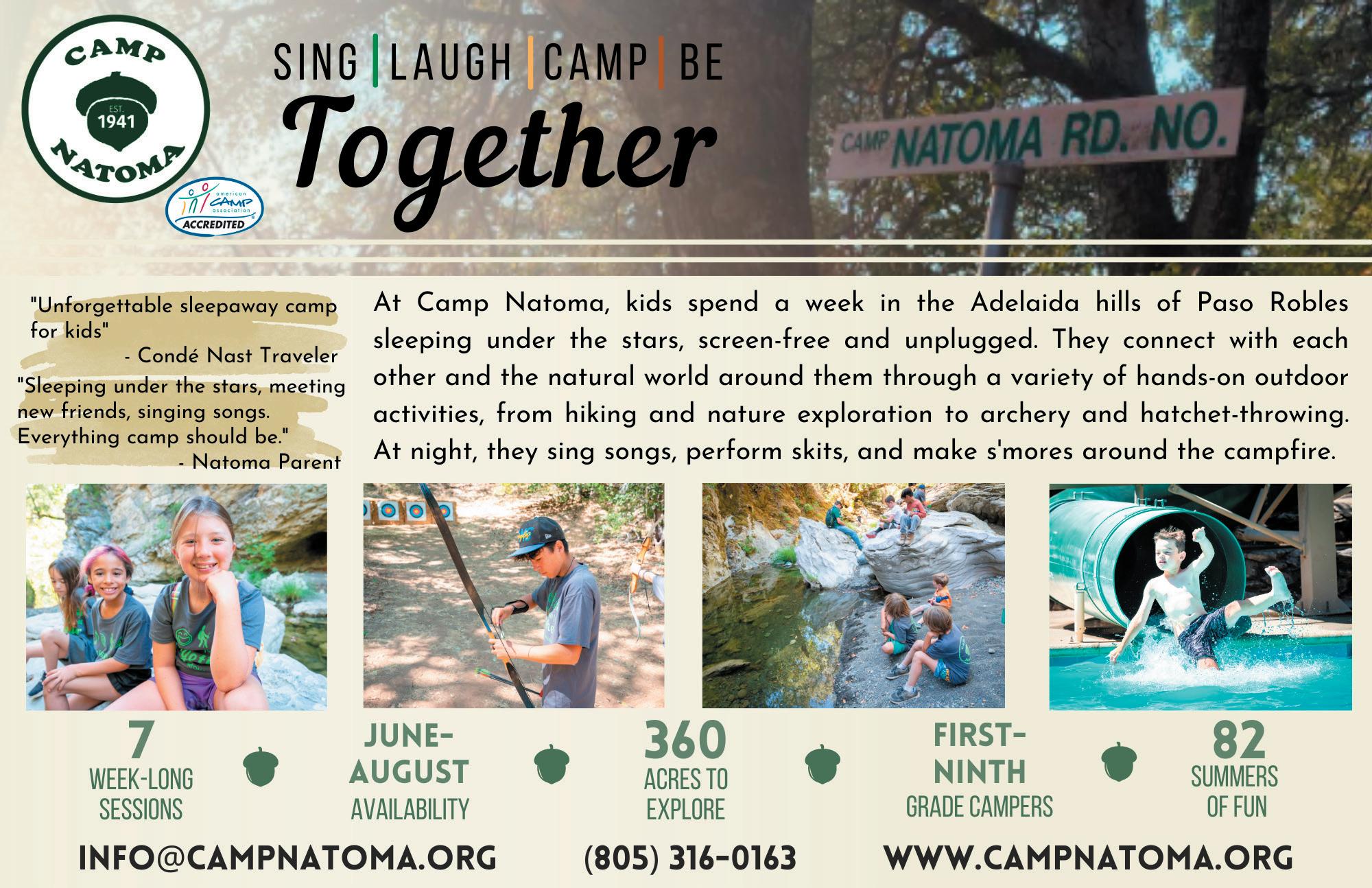
Santa Barbara County Trails Council Executive Director Mark Wilkinson said agreeing to maintain trails is often a caveat when working with State Parks to site new trails on its properties. Therefore, the council builds
volunteer trail maintenance into its agreements with the state agency.
Wilkinson has spent the last decade pushing Coastal Trail priorities in the county, and while he’s made progress in some places, such as the Santa Clause Lane bike path, he’s run into walls in other places.
“In some ways, I think that San Luis Obispo [County] has done a much better job than us” in addressing trail gaps, he said.
Those walls include Vandenberg Space Force Base’s 35 miles of coastline and about 20 miles of the Gaviota Coast, which runs on individual private property, such as at Hollister Ranch; Union Pacific property; and State Parks property. Vandenberg may never allow public access, but even for the properties not owned by the federal government, progress is slow, he said.
“It’s not like it’s not happening,” Wilkinson said. “I usually say that 80 percent of the work is to get to the point where you’re able to

build the trail.”
That 80 percent includes a lot of negotiation and relationship building.


In some cases, such as with Hollister Ranch, it also includes a regulatory nudge from the state. The long and litigious fight over public access at Hollister Ranch continues, but public access to the property seems inevitable thanks to state Sen. Monique Limón (D-Santa Barbara), whose bill requiring it to happen was signed into law in 2019. The Coastal Commission is currently working on an environmental review about what the impacts of that access and constructing Coastal Trail would entail.
Building the Coastal Trail, Wilkinson said, takes time—a long time—and also perseverance, collaboration, problem-solving, planning, and funding.
“You have to fi gure out what’s possible,” he said.





With more than 10,000 acres of San Luis Obispo is the perfect pla hike, fish, camp bike, and play!
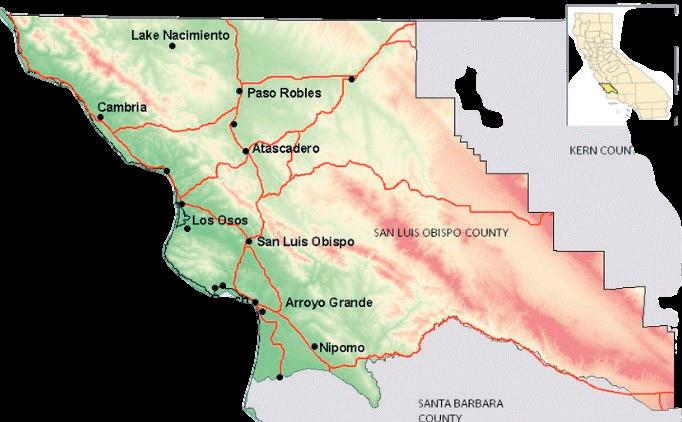


With more than 10,000 acres of parks, San Luis Obispo County is the perfect place to hike, fish, camp, golf, bike, and play! County of San Luis Obispo

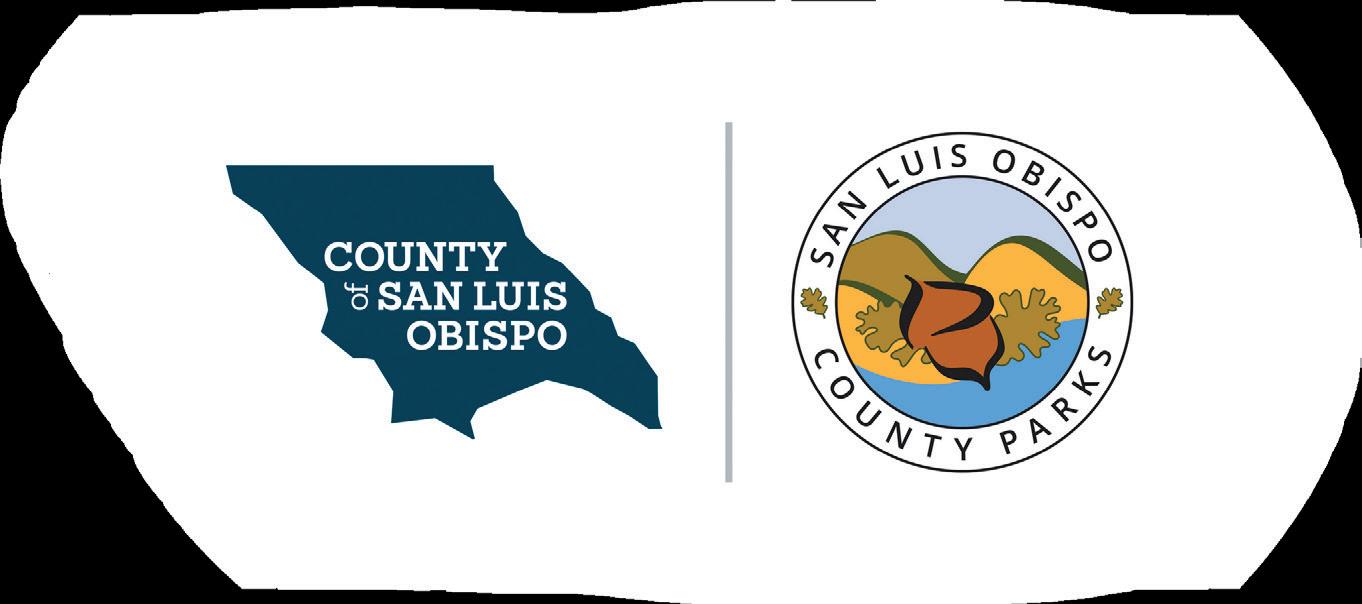

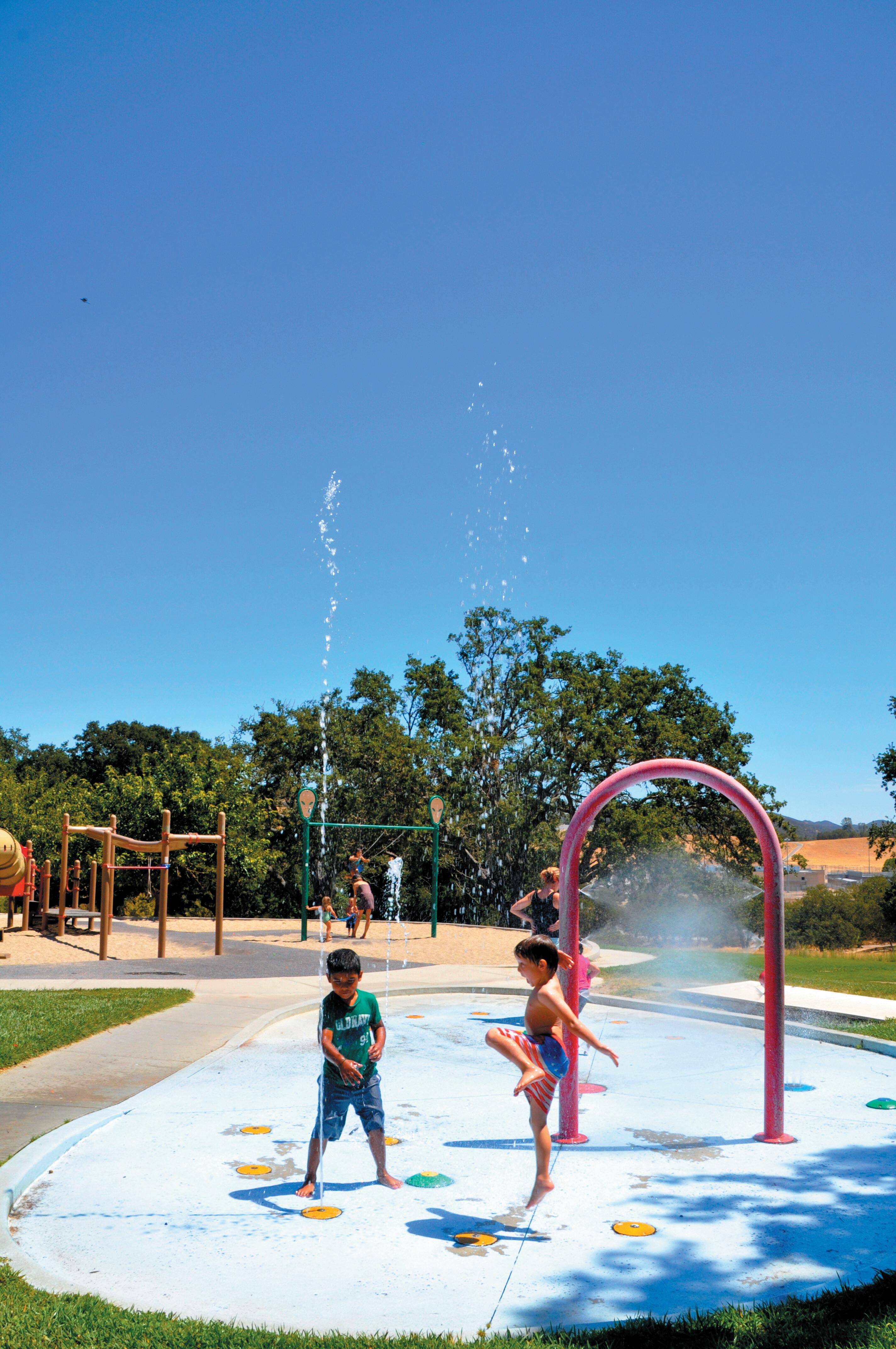










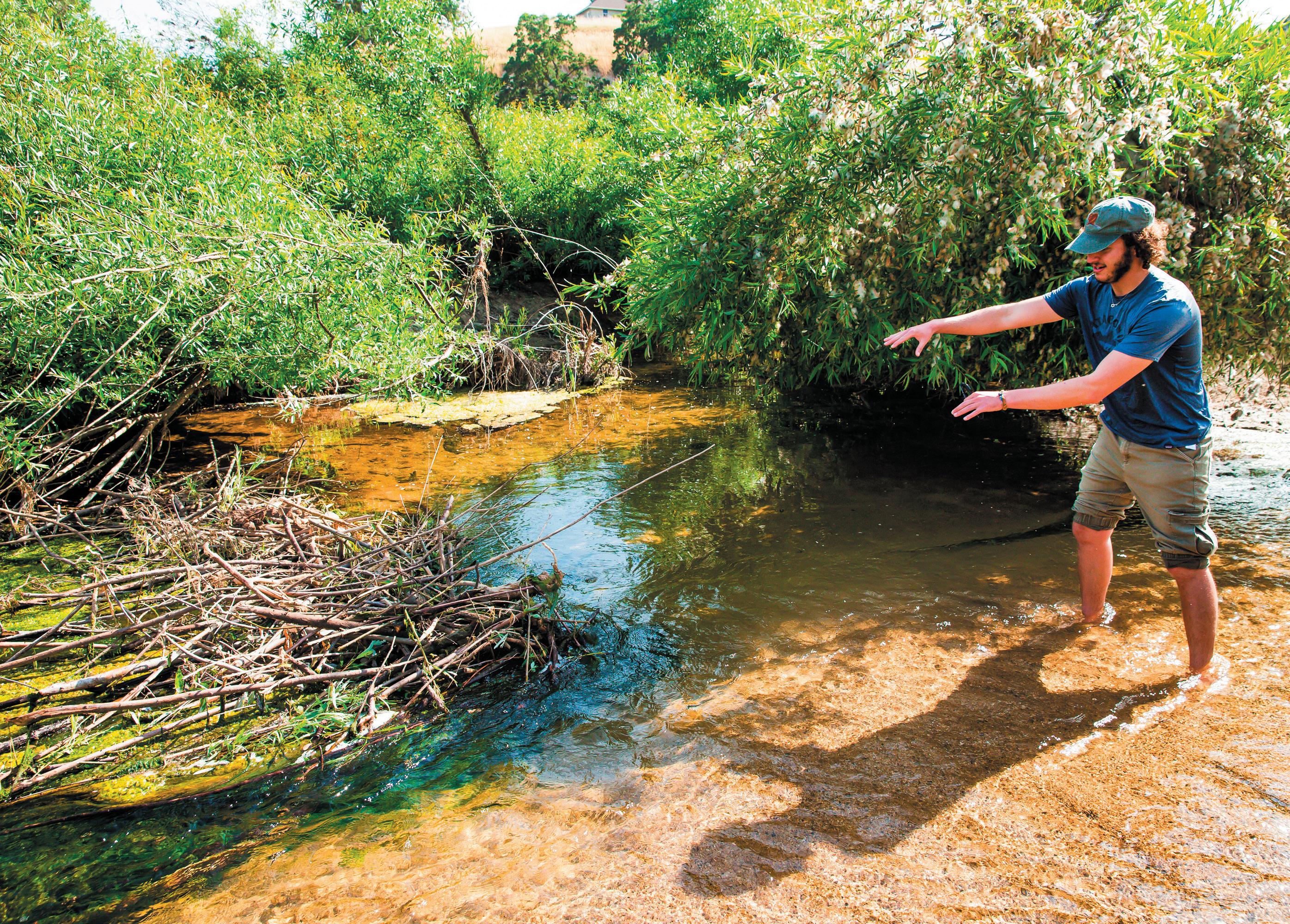 STORY BY PETER JOHNSON • PHOTOS BY JAYSON MELLOM
STORY BY PETER JOHNSON • PHOTOS BY JAYSON MELLOM
The signs of their work are modest but ubiquitous. Branches and debris stacked carefully in layers across several feet of meandering river. Gnawed pieces of willow on the ground. Hidden canals. Footprints. Scat.
Six months after a historic and powerful set of winter storms flushed out the Salinas River watershed, the local beaver population is starting to rebuild what got swept away.
“It’s kind of like the infancy of the beaver habitat,” says Audrey Taub, founder of the San Luis Obispo Beaver Brigade and frequent visitor to this section of the Salinas in Atascadero. “It’s very late in the season for them to be starting. It’s going to be fascinating to watch.”
Ankle-deep in water, Taub points across the river, up its bank, to show me the scope that the prior
beaver dam habitat took on before the rains. At its height, it spanned about 100 feet across the channel. The morning of June 16, the beginnings of a new dam stretch no more than 10 feet.
“ The riparian area was completely underwater, all these trees,” Taub says, pointing to the now-exposed vegetation on the banks. “They build the dams and slow the water down. They build these little canals, and the canals further spread out the water.
“It lasted until the Jan. 9 storm, and then all the riparian area washed away,” she continues,
looking around. “It’s amazing to see the changes.”
Despite the upheaval, beavers are resilient and will rebuild here. And Taub is on a mission to educate the public about why it’s critical for that to happen—and why rebuilding beaver populations across the state must be a priority.
“ Most everyone has this impression that the Salinas River is completely dry and underground. But really, wherever there’s beavers, there’s water,” Taub said. “It raises the groundwater enough so it’s on the surface.”


Improved groundwater recharge is just one beneficial element of what beavers do. They also provide fi re breaks. Flood control. Carbon sequestration. A natural fi ltration system for pollutants. And more. Beavers used to dominate the entire North American landscape,
before the fur trade severely depleted their numbers. An estimated 400 million beavers roamed the continent at one time, according to Cooper Lienhart, a river restorationist with the SLO Beaver Brigade.
“It was beaver land out here,” Lienhart says, wading through the river next to Taub. “The whole United States used to be 20 percent wetlands. And now, it’s less than 2 percent. So, the beavers were just turning these creeks and rivers into wetlands.”
Taub founded the SLO Beaver Brigade in 2020 to raise awareness locally about the importance of the continent’s largest rodent. It’s since taken off.
Today, the nonprofit has multiple staff members, held a Beaver Festival in SLO Mission Plaza this spring, and recently received a Whale Tail Grant from the California Coastal Commission to expand its public tours of Salinas River beaver habitat.
“It’s pretty interesting that people get it,” Taub says.
BEAVERS continued page 36
As local beavers rebuild their dams after a brutal winter, the SLO Beaver Brigade seeks to rebuild their population on the Central CoastSign up for a SLO Beaver Brigade tour of beaver habitat by visiting slobeaverbrigade.com/come-to-abeaver-pond. SLO Beaver Brigade River Restorationist Cooper Lienhart points to telltale signs that beavers are doing work in the Salinas River.






























































BEAVERS from page 34
“Everybody gets the importance of having water.
I’m amazed at how very little [convincing] we have to do.”
With help from Cal State Channel Islands beaver scientist Dr. Emily Fairfax, Taub says the Brigade has done some surveying of the local beaver population. It’s identified three families in Atascadero, one family in Templeton, and two families in Paso Robles—all along the Salinas River.
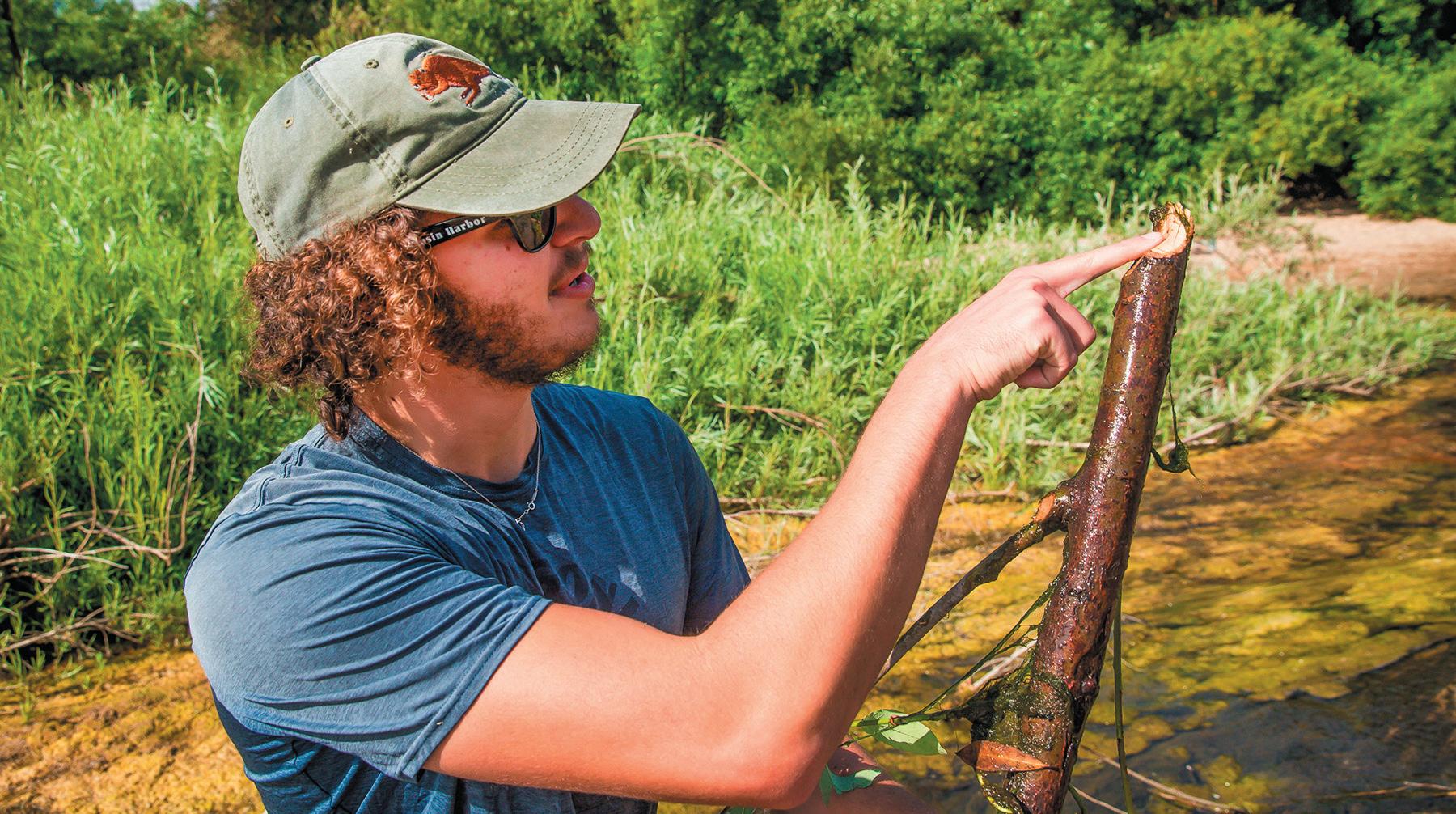
“Every half mile it seems

like,” she says. “They’re very social. They mate for life and give birth every year.”
Beavers are also active in the Arroyo Grande and Pismo creeks. And in an interesting twist following the winter storms, the group recently found beavers settling in previously uninhabited areas, like Old Creek near Cayucos.
“That’s an entirely different watershed, which is super exciting,” Taub says. “It does seem like they’ve headed into the tributaries because of the rains.”

In the big picture, Taub and


BEAVERS continued page 38



Lienhart would like to see the state of California modernize its antiquated laws and regulations affecting beavers.
As a rodent, beavers are technically pests, so they cannot be legally relocated. And as pests, if they

caused a nuisance on someone’s land, historically, they could be killed. But that’s slowly changing. The California Department of Fish and Wildlife recently announced a new beaver restoration program that Taub calls “a 180-degree turn” for the agency.
“They’re the ones where if you wanted a beaver removed, they would come and legally take it. Now, they have to educate landowners on how to live with beavers. They are having to change,” Taub explains.
Another goal for the Brigade
is to begin installing beaver dam analogs—human made beaver dams—along creeks and rivers to mimic the conditions and benefits of a beaver habitat. Then, longer term, real beavers could move into that habitat and take over the work.

“Beavers are way better than us making these dams, but we don’t have a lot of limitations that beavers do,” Lienhart says. “Rangeland farmlands that don’t have that willow growing on their properties … we can go in there and build a couple series of these human made beaver dams.”
While Taub and Lienhart emanate optimism about the future of beavers, challenges remain. The work in front of them to educate the wider public about the animal is symbolized by a set of ATV tire marks that runs through the riverbed, right past the infant beaver dam.
Walking about 100 feet farther downstream, Taub points to a scattered pile of willow branches on the bank, where another set of tire tracks have run through. It appears that ATV riders recently plowed over a dam. Thankfully, Lienhart reminds me, beavers are resilient.
“Their dams will get busted,” he says, “but they’ll just keep rebuilding.”


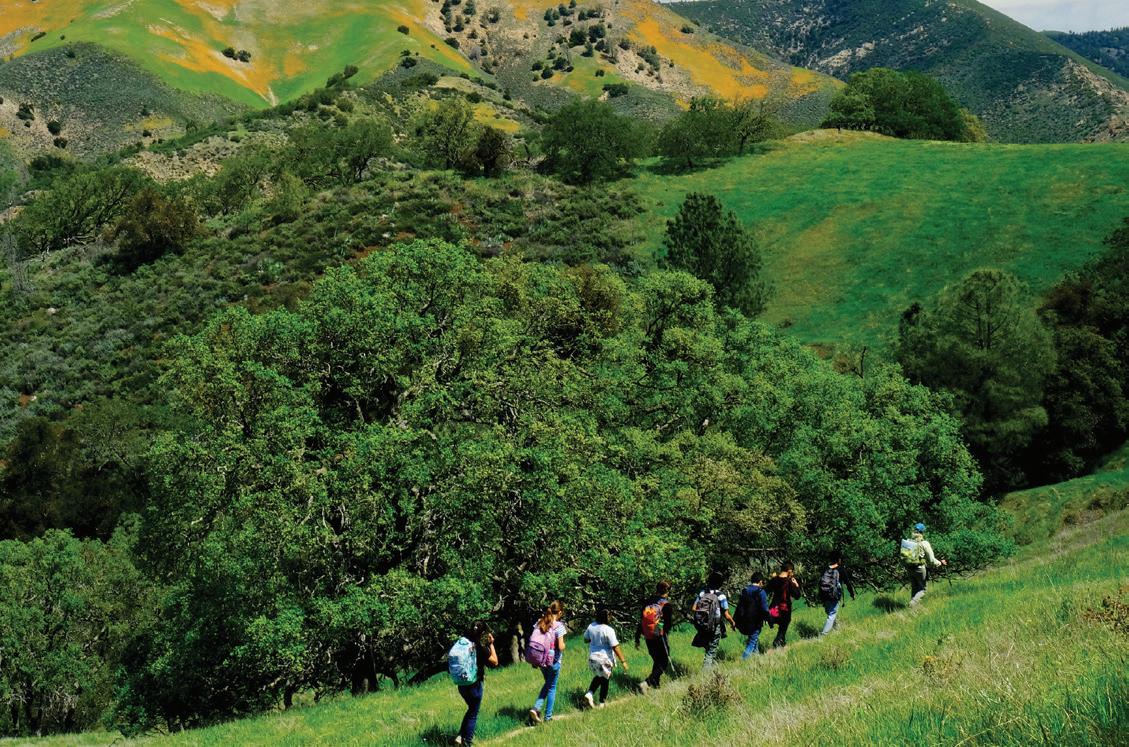

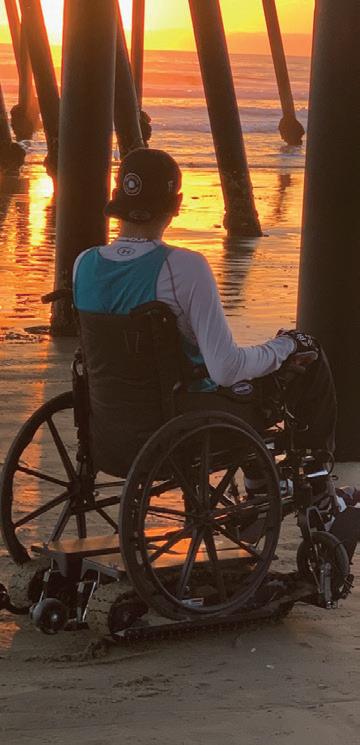











Andy Sherar braced himself as he vaulted up onto a large rock, the bright sun greeting him as he steadied himself, adjusting his harness at the top of Bishop Peak.
It was a moment that Sherar never thought possible a few months before. For someone with a fear of heights as bad as his, reaching a peak like this was
unfathomable, and, in many ways, rock climbing has been key to conquering that fear.
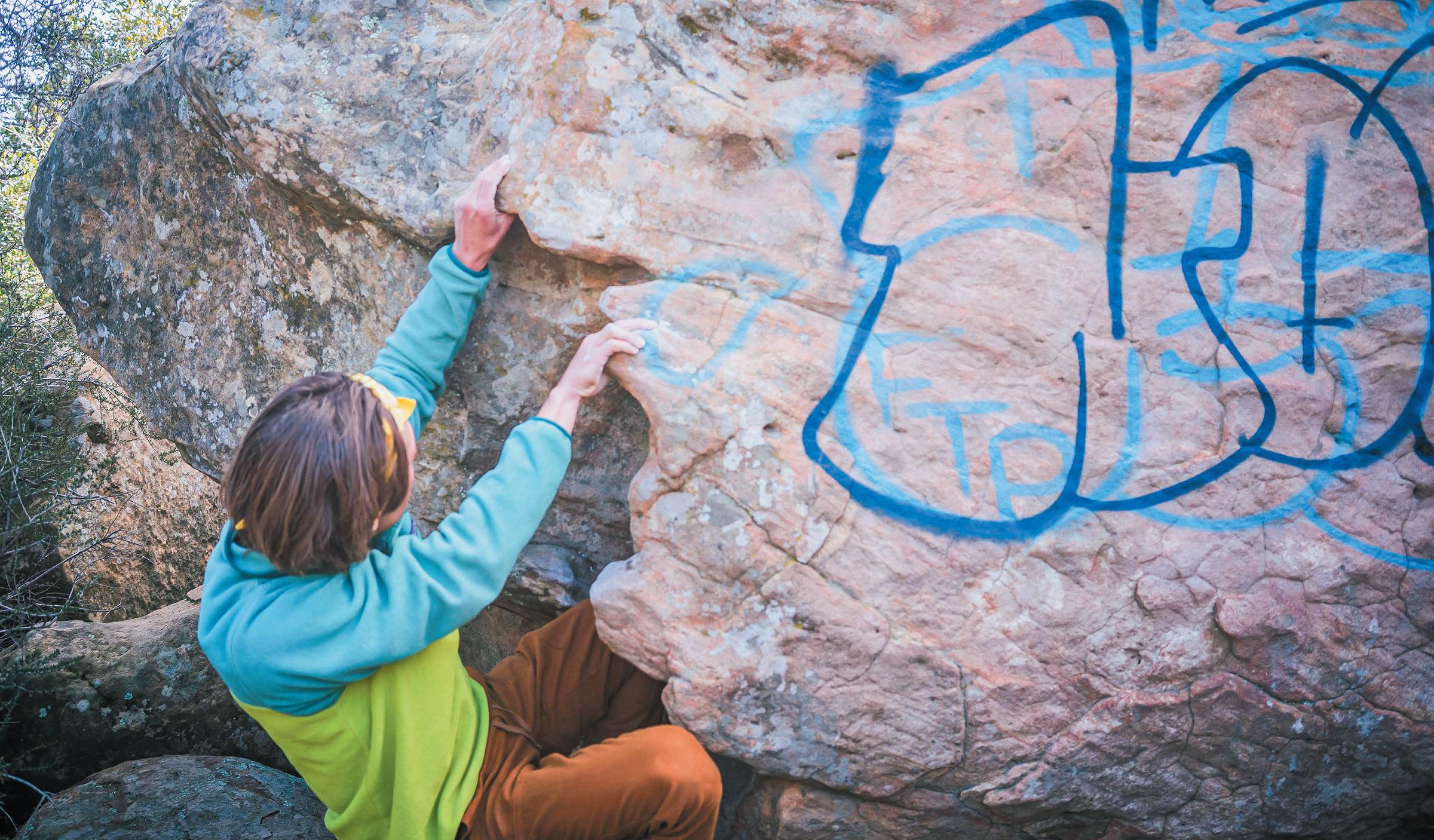
“The feeling I get when I just stay up there brings me this sense of peace,” he said. “And it’s even more comforting because I keep that feeling as I descend, and I think it’s helped me come a long way with my fear of heights.”
The climbing experience was
new ground for Sherar, whose prior experience was confi ned to indoor gym climbing, which he tried in an attempt to tackle his fear of heights—something that was impacting him while he surfed.
“My friends just kind of threw it out there, ‘Hey, we are going to go climb tomorrow do you want to come?’” he said with a laugh. “At that point, I had only done climbing in an indoor setting. It was daunting at fi rst, but I knew I wanted to keep facing that fear and that outdoor climbing was a great way to do that.”
Indoor climbing is how most people get introduced to the sport, Sherar

said, with many San Luis Obispo residents beginning their climbing journey at either the Cal Poly Rec Center or The Pad climbing gym.
Josef Maier—who serves as The Pad’s director of route setting—said the gym is the epicenter of climbing culture in SLO, offering climbing walls and services for anyone who wants to try the adventure sport.
“It’s very similar in the way you can move, as in the flow is the same,” he said. “It’s a great way to get into a sport that, at times, can feel very daunting to get into.”
With the controlled nature of being inside, Maier said climbers can get a feel for what level of climbing they want to try without feeling intimidated to ask for help.

“Indoor climbing is wonderful because it is approachable for everyone,” he said. “Whoever you are, you can show up at a climbing gym and don’t need any previous experience.”
While there are shared aspects between indoor and outdoor

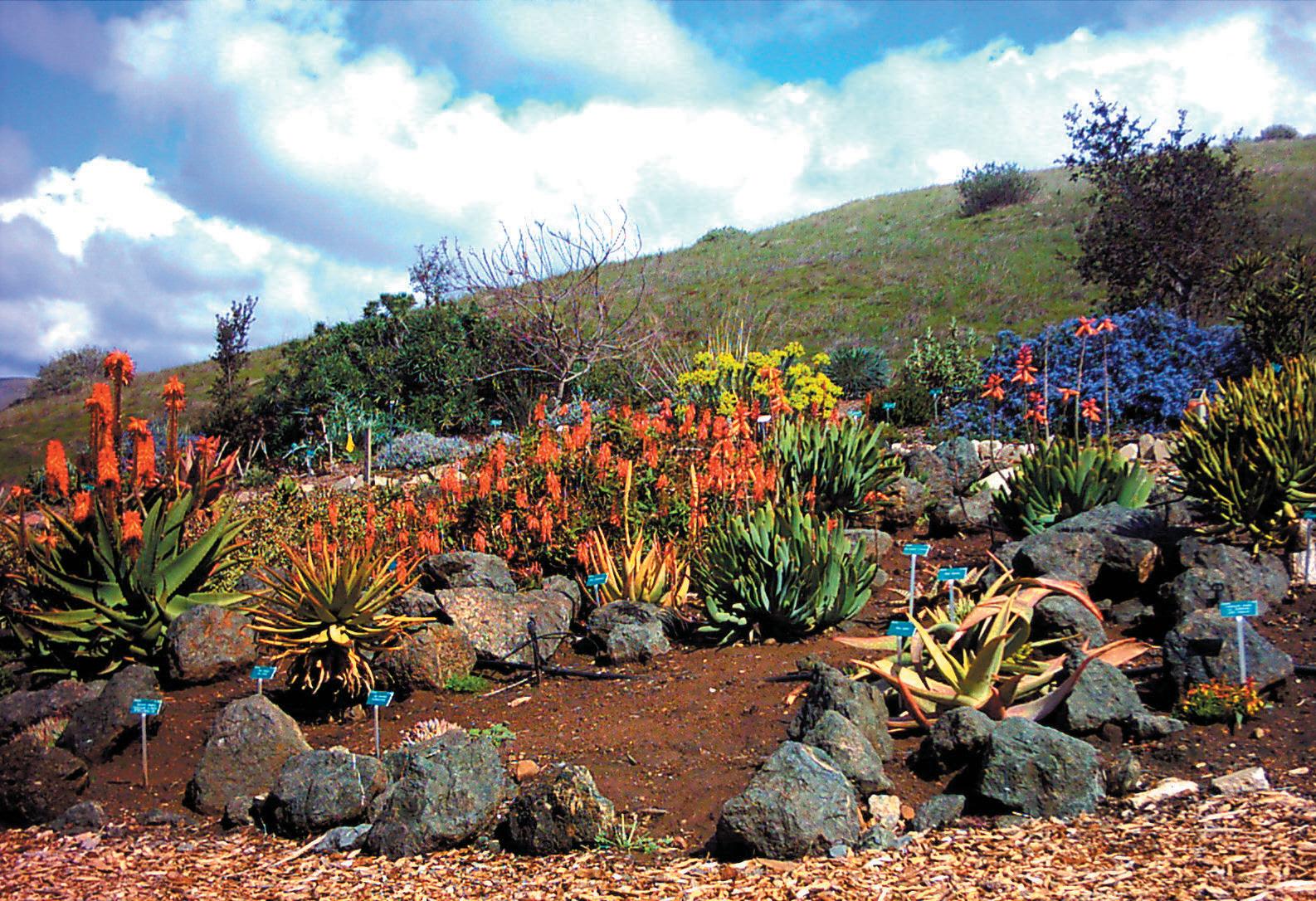

ROCK CLIMBING from page 40

climbing, he stressed that the differences are important to consider when doing either.
“Indoor climbing is a great way to build experience and meet other climbers who can give you insight on where to climb,” he said. “But it doesn’t prepare you for some of the safety measures, so you have to use it purely as a starting point if you plan on getting into outdoor climbing at some point.”
Sherar echoed that sentiment, adding that there is a very different approach in how one climbs indoors versus outdoors.
“When you are doing indoor climbing, you have these preexisting holds that you can map out ahead of time and fi gure out the way to the top,” he said. “Outdoor climbing is much less controlled, and you have a lot more freedom choosing where you want to grab, but that also comes with more risk.”
According to Maier, part of
mitigating that risk while outdoor climbing is using your common sense.
“Don’t trust the random guy on YouTube, take the necessary precautions, take a class,” he said. “If you are excited about it, you can fi nd other people who can help you get the gear you need. That’s kind of what makes it so easy to get into—there is always someone to help you.”
Whether it’s outdoor or indoor, Maier and Sherar say that rock climbing is something that everyone on the Central Coast should try, and there’s no reason not to take advantage of all that’s accessible so close to home.


“I grew up in Sacramento, so I didn’t have a spot fi ve minutes away from my house like I do here,” Maier said. “I feel like we are extremely lucky on the Central Coast, especially SLO, to have so many spots— and that’s not even including The Pad itself.”
Find local outdoor climbing spots based on their difficulty by visiting mountainproject.com . For more indoor climbing information or a place to learn the ropes, visit thepadclimbing.org

peaks offer a variety of spots that range from beginner-friendly to advanced.
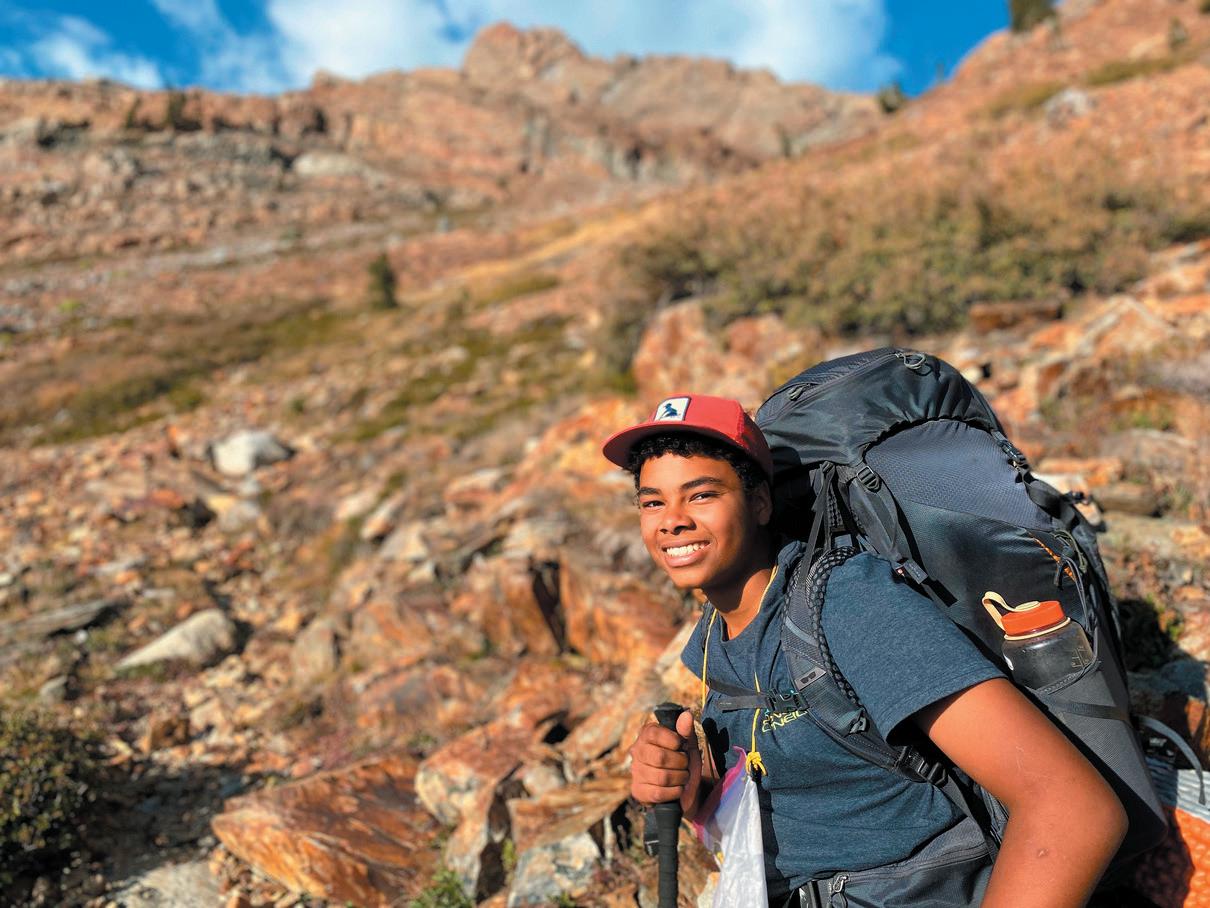
how difficult they are on the scale.”
One spot that Maier recommends for beginners is on Cabrillo Peak.
Bishop and Cabrillo
“Climbers have a great rating system that allows you to not get over your head for all of these places based on the number of ratings the spot receives,” Maier said. “We also have other resources like the Mountain Project website that helps show where all of the local climbing spots might be and
“The Rockland is a perfect beginner sport climb, especially for those who are coming from the indoor climbing experience,” he said.

The Central Coast also offers spots in Santa Barbara and even Ojai—should prospective climbers
ROCK CLIMBING continued page 44
Grades 9 to 12






















want to venture farther south.


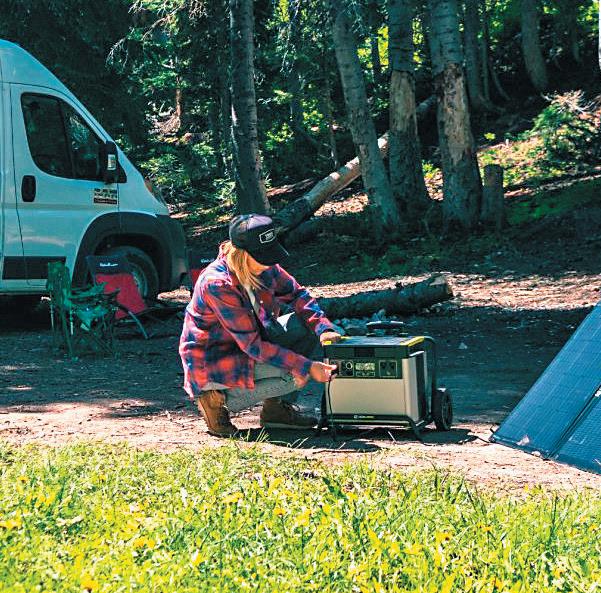



Maier, who has been climbing since 2011, said that the bevy of options for outdoor climbing can be overwhelming at fi rst.

“It’s all about taking it one step at a time and not skipping the middle ground,” he said. “Strength isn’t the only thing that is keeping you safe when you are on the rocks.”
For Maier, as long as one keeps their wits about them and brings a group of friends, veterans, and passionate climbers with them—indoor or outdoor— the experience is unlike any other physical activity.


“Like many athletic pursuits, it’s sort of meditative and clears your mind,” he said. “I think that it’s more that than other types of sports. It’s this avenue into beautiful places that makes it way more special than just going out into a field.”




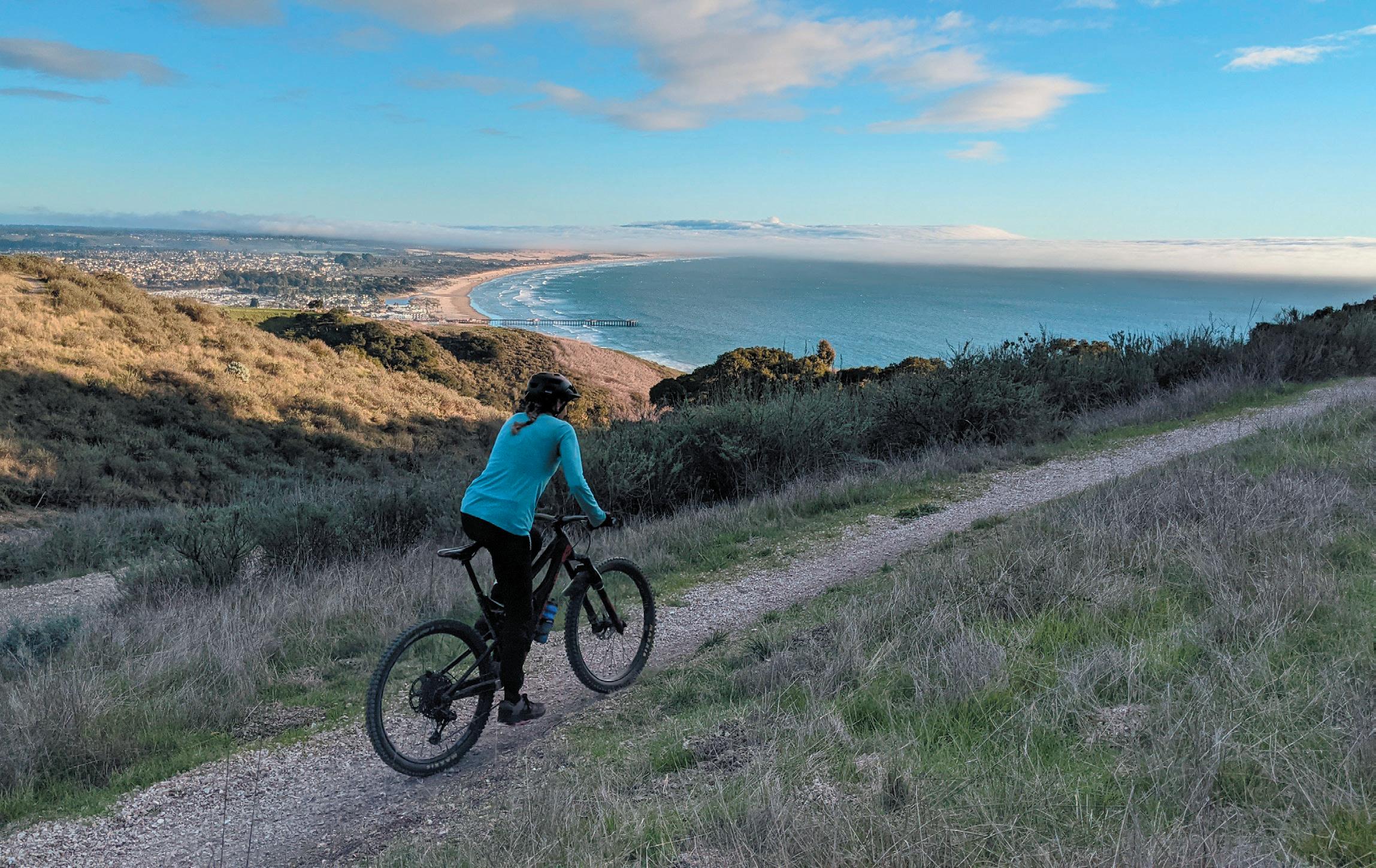
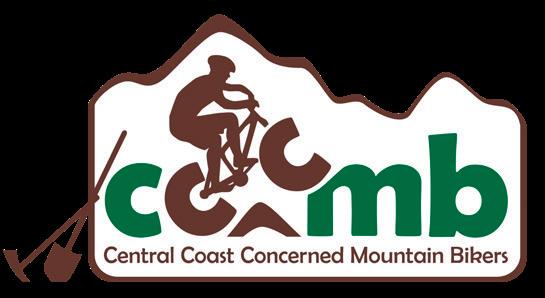



orro Bay Police Sgt. Nicole Taylor clocks in to work at 7 a.m. each morning, driving from her home in Creston to the usually slow seaside town. The morning of May 20, though, was different.
Before daybreak, the city’s Embarcadero buzzed with energy and activity. People from all over the world paced around in race gear, as local police, city staff, and volunteers worked out event logistics.
Taylor arrived at 4 a.m., but not as an officer. She was one of the more than 1,800 competitors racing in the fi rst-ever Morro Bay Ironman 70.3, a triathlon that drew athletes from 46 states and 23 countries.
“It was completely cool to see the diversity of people that were there,” Taylor told Get Outside a few weeks later. “Walking toward the swim [in the harbor, I overheard] some people. I didn’t even understand what language they were speaking.”
Over the fi ve months prior, Taylor juggled helping the city prep for one of the biggest events in its
history with training for one of the toughest endurance tests of her life.

“Toward the end, it took six to seven hours a day of doing activity to make sure I was prepared. So, it was a big commitment,” Taylor said. “[And] I sat through all the Ironman meetings and everything we had as a city, because I was helping the chief put together the public safety side of it.
“So, it was interesting to do that, and then show up on race day and be a participant and see all my friends I work with directing traffic,” she added with a laugh. “It was a whole different perspective.”
Ironman’s long-distance triathlons are globally renowned events, and landing one in San Luis Obispo County has long been a goal in the local endurance sporting community.
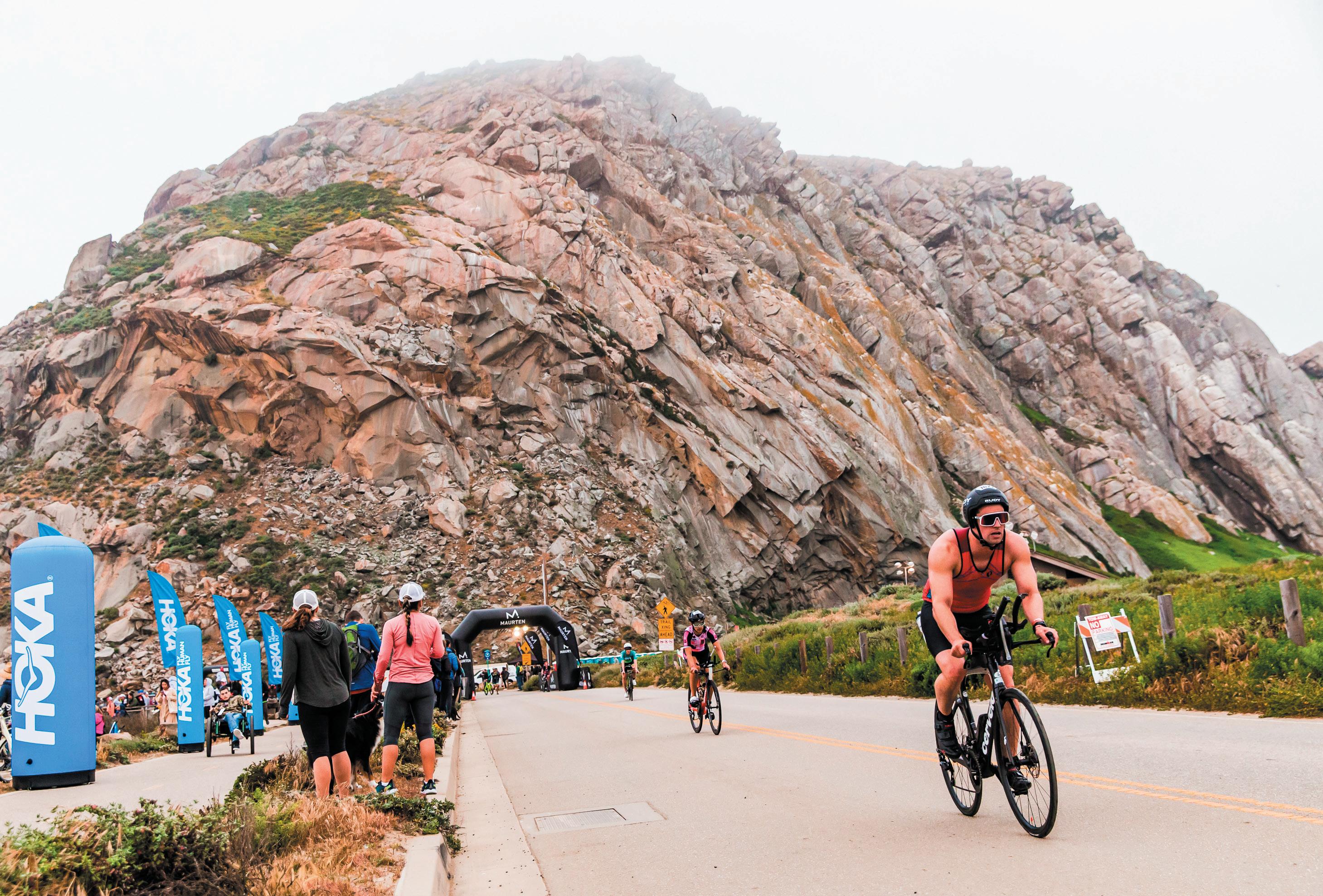
It finally happened last year, when Morro Bay and Ironman inked a three-year contract to bring one of its signature 70.3-mile races, known as a “half-Ironman,” to the city.
Organizers charted a course with a 1.2-mile swim in the protected
harbor, a 56-mile out-and-back bike ride to San Simeon along Highway 1, and a 13.1-mile run in city limits.
“When I heard it was fi nally materializing, I was super stoked,” said Samantha Pruitt, founder of Race SLO, the group that hosted the former SLO Marathon. “We’d talk with the county and city and us local people about trying to get Ironman to come to SLO County at some point.
“Morro Bay is an exceptional location for this type of activity. And it’s just a great, undiscovered beach and fi shing community that deserves to be recognized at a higher level.”
Successfully pulling off such a massive event in a small town like Morro Bay was no easy task, according to Police Chief Amy Watkins, who spoke with Get Outside a few days before the event.
To prepare, Watkins visited the city of Oceanside for its Ironman 70.3. One key element there was familiarity.
“As you can imagine, if you’re




Oceanside and have been doing it 20plus years, people understand it and know what to expect,” Watkins said. “We are going through this particular situation for the first time.”
On top of the 1,800-plus athletes, the city also hosted their family members, friends, and spectators.
Hotels sold out. Street closures went into effect. Athletes with cars were asked to park at Cuesta College and catch shuttles to town to avoid overcrowding. The city called on outside police agencies to help with security.
“It is a big lift. It’s an all handson-deck requirement,” she said. “It’s a lot of work, but you know what? If this is a good thing for our community and our city, then the city staff is on board to make sure we do this well.”
‘See how much I can do’


Competing in the Morro Bay Ironman was a new challenge for Taylor. But the act of pushing herself toward a more ambitious goal is something that’s ingrained in her.
“I am one of those people who
CAMBRIA GARDEN SHED 805 • 927 •7654

CAMBRIAGARDENSHED.COM




ART WITH JUDY ANN 805 • 286 • 8380


ARTWITHJUDYANN.COM


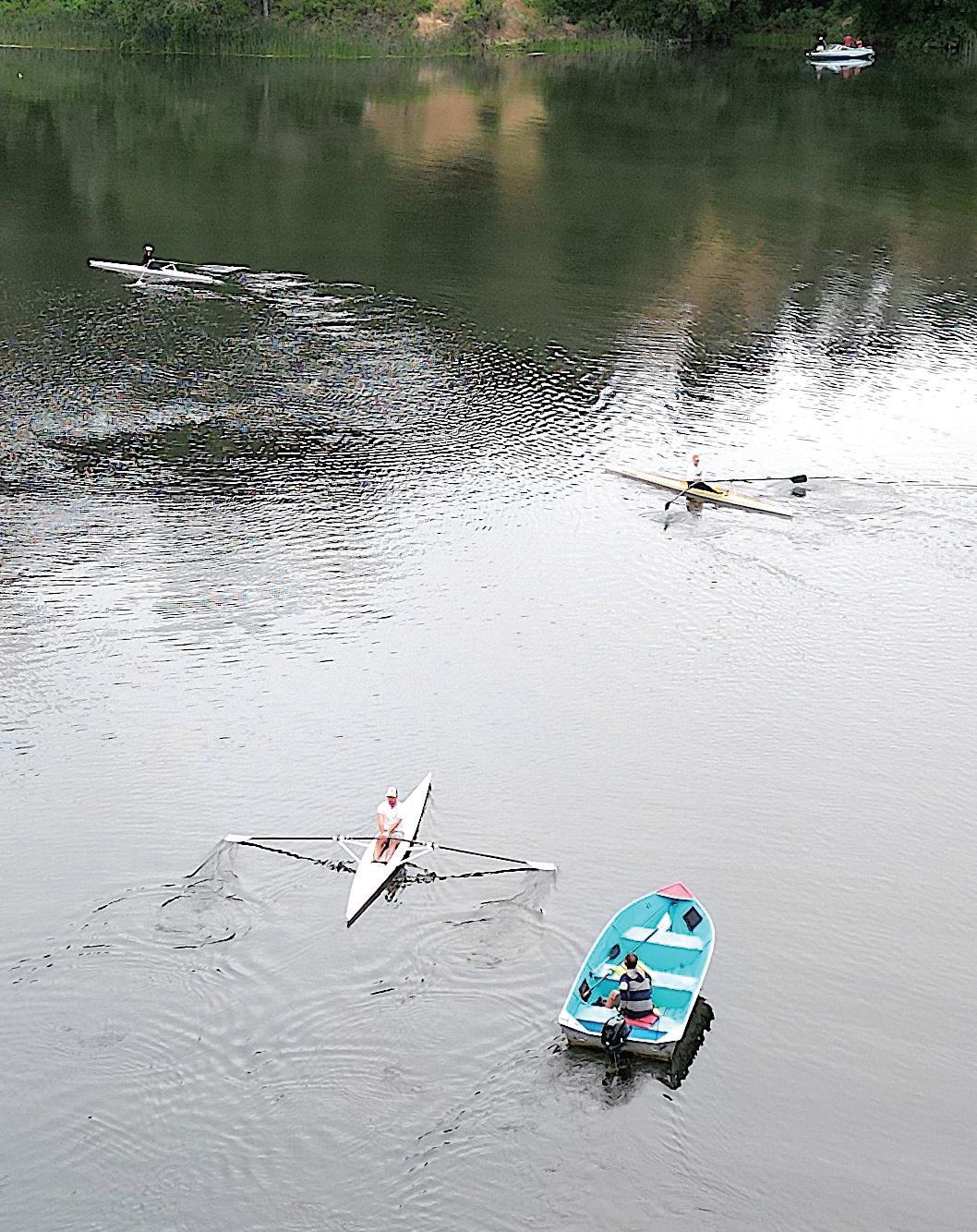
CAYUCOS


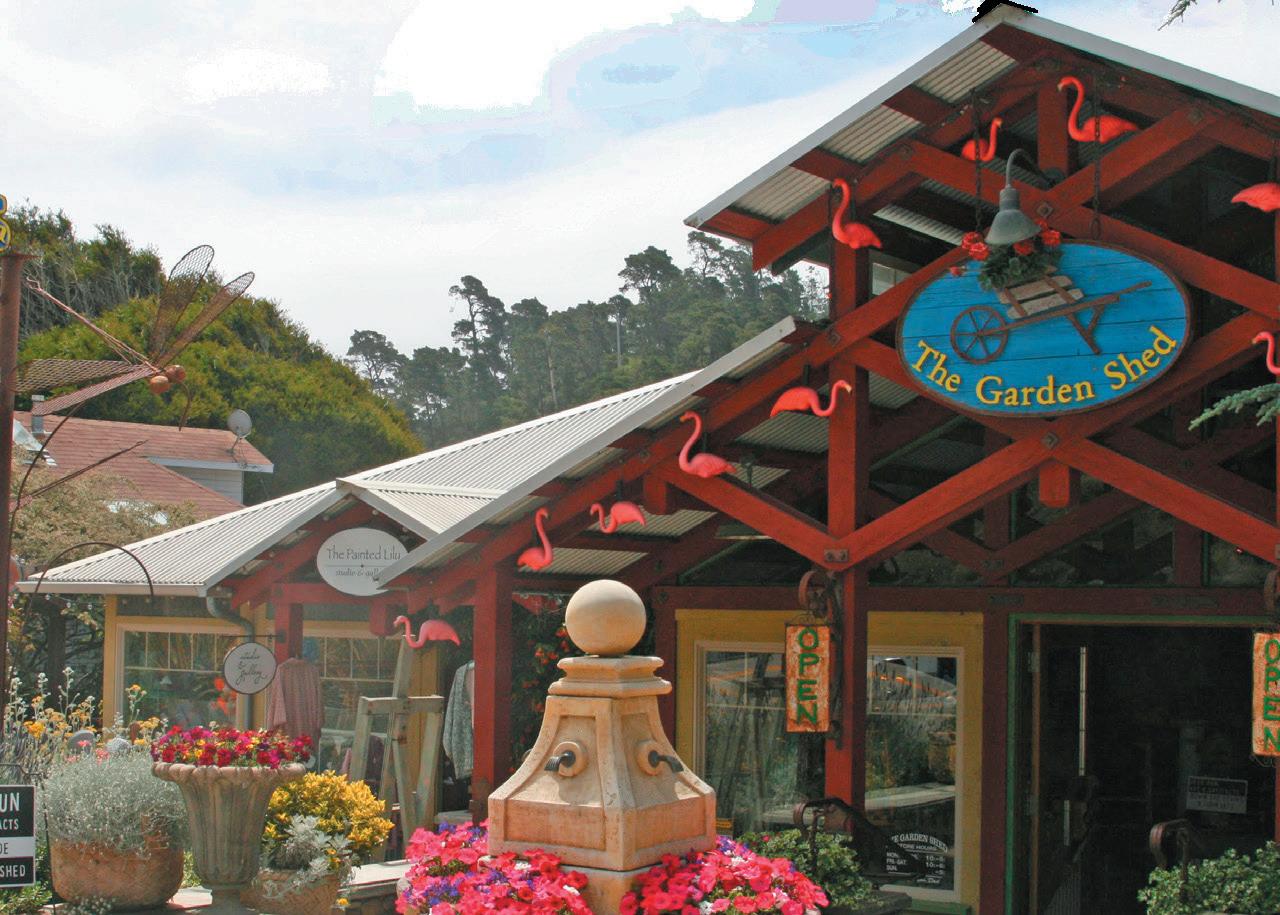
805 •995 •3036 CAYU CO SCELLARS.COM

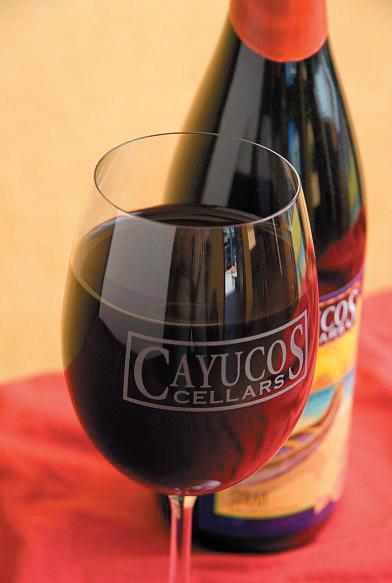
GROW NURSERY 805 •924 •1340 GROWNURSERY.COM



LILY’S COFFEE HOUSE 805 •927 •7259

OCEAN HEIR 805 •909 •9022 OCEANHEIRESTATECOMPANY.COM
SIMPLISTIC HOME 559 •970 •5654 SIMPLISTICHOME.COM
IRONMAN from page 46

likes to be constantly challenged,” Taylor, 42, said. “I joined the Marine Corps after high school and I just remember everybody telling me, ‘Why are you doing this? You’re never going to be able to do it.’ And I think that’s kind of what did it for me, that challenge of, no I can do this and I’m going to do this. When I got into law enforcement, it was the same thing. ‘You can’t be a cop.’ Yes, I can. Watch.”
An avid runner, Taylor had raced in “a handful” of triathlons before, but none as long as the 70.3-mile Ironman. Taylor and fi ve of her friends in the Templeton Run Club, a nonprofit she helped found, signed up for the race together.
She started training in midJanuary.
“It involved six days a week of training,” Taylor said. “I usually rode my bike three days a week and I would run two or three days a week, and swim one or two days a week. And then I did strength training six days a week.
“I did two workouts in the day. In the morning, I’d wake up at 4 a.m. and do my strength training. And sometimes I’d bike in the morning,
or I’d come and run in Morro Bay before work.”

Almost as important to the preparation as the conditioning, she said, was exploring how best to manage her fluids and food intake during the many hours of activity.
“It’s learning how to stay hydrated, and how to make sure I took in enough fuel, to have a good system of what fuel I needed to take when,” she said. “It was determining, OK, at this time I need to take a gel with caffeine. Or I might get cramps around this time, so I need to take something that’s going to combat the cramps.”
All of that preparation paid off on race day. As she swam the harbor, biked Highway 1, and ran through the city, Taylor felt physically ready for the demands of the daylong event. One of the most


challenging aspects, she noted, was the mental component.




“Because you can’t have any music or anything like that, you’re in your head the whole time. You’re stuck in your own head for eight hours almost,” she said. “So it was a lot of just positive self-talk: ‘I got this, I’m doing great, I feel good.’”

Taylor said she felt a sense of camaraderie with the other athletes and expressed appreciation for the hundreds of race volunteers and spectators. She said she especially needed the aid stations during the
run portion, which made three loops around the same course that were “a little bit tedious.”
“It was nice because there was so much support out there that you never felt like you were alone,” she said. “It was probably about mile 10 that I got a cramp in my right calf and then my left quad. So, every aid station I’d eat a banana. I think I tried everything. I drank the coke, the Red Bull, the bananas, just to try to combat the impending cramp.”
When Taylor fi nally crossed the






IRONMAN continued page 50
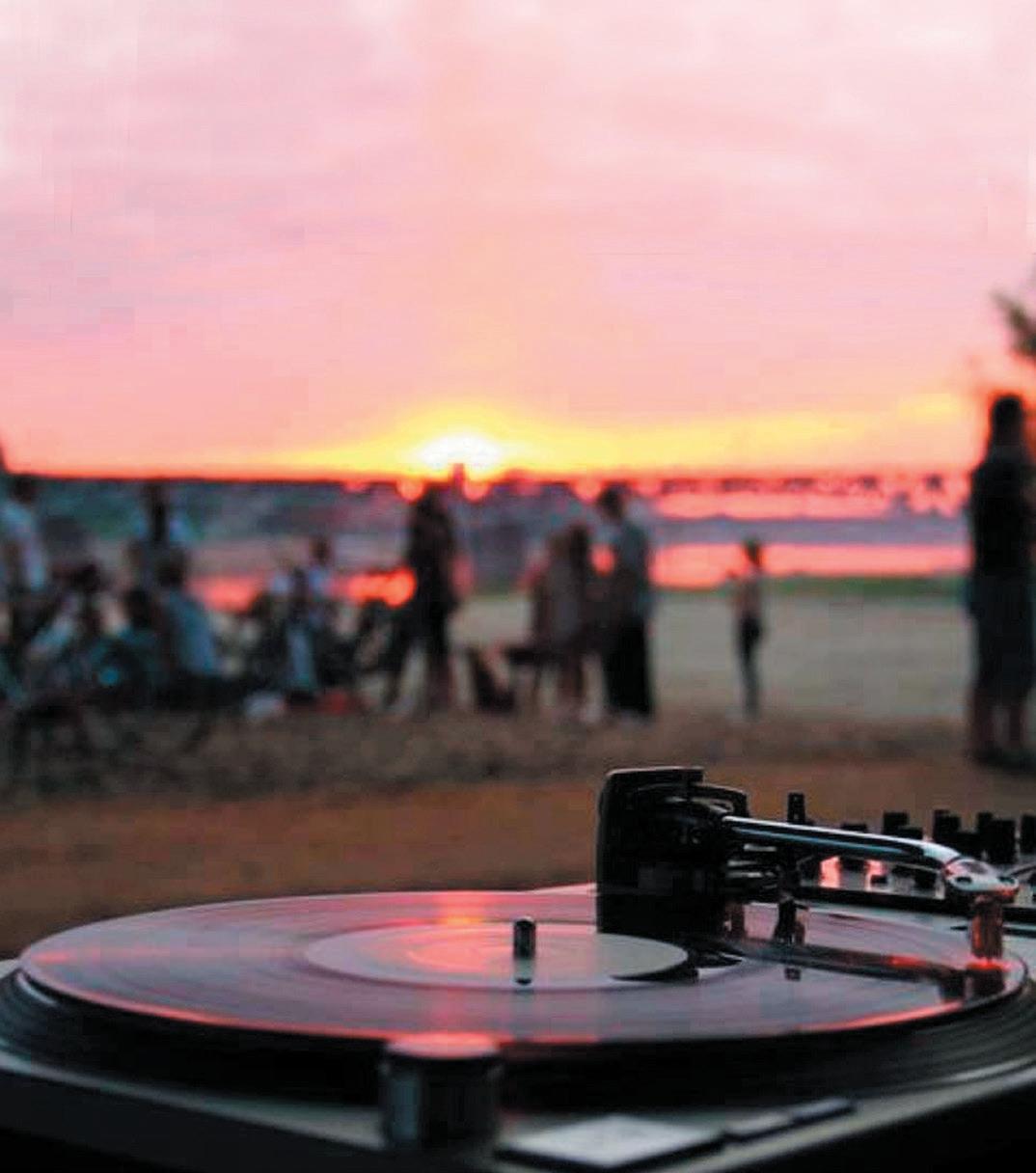






finish line, she realized that she exceeded her own expectations, finishing in 6 hours and 50 minutes—good for 25th place out of 65 athletes in her age group and 150th place out of 384 athletes in her gender group.
“It felt really good. I was super excited,” she said. “I just wanted to finish. I didn’t want to get pulled off the course.”
While the accomplishment was gratifying, Taylor isn’t resting on her laurels for long. She’s already signed up for the Ironman 70.3 in Santa Cruz this September—a new challenge.
“I figure I’m already in shape, I
might as well,” she said. “That’s when I’ll set some loftier goals. It’s amazing what the human body is capable of.”
‘Knocked it out of the park’
For an inaugural race, Pruitt said Morro Bay did “an exceptional job” of executing the Ironman event.
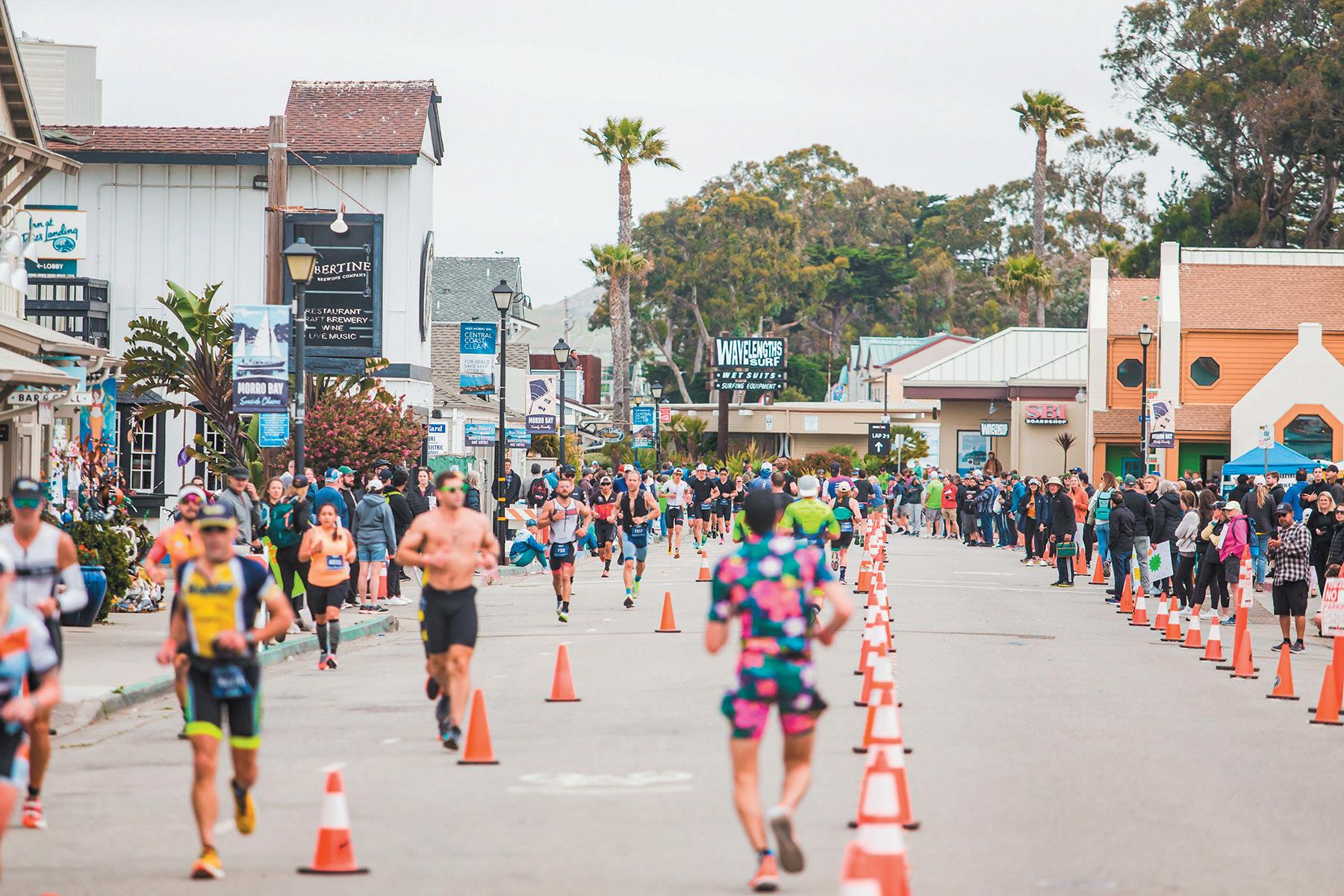
“Frankly, I think they knocked it out of the park,” the veteran race producer said.


Pruitt spent the week of the race in Morro Bay to help the city and community prepare. She talked with local businesses about what to expect and helped promote the race with digital content.
“That town is made up of just the

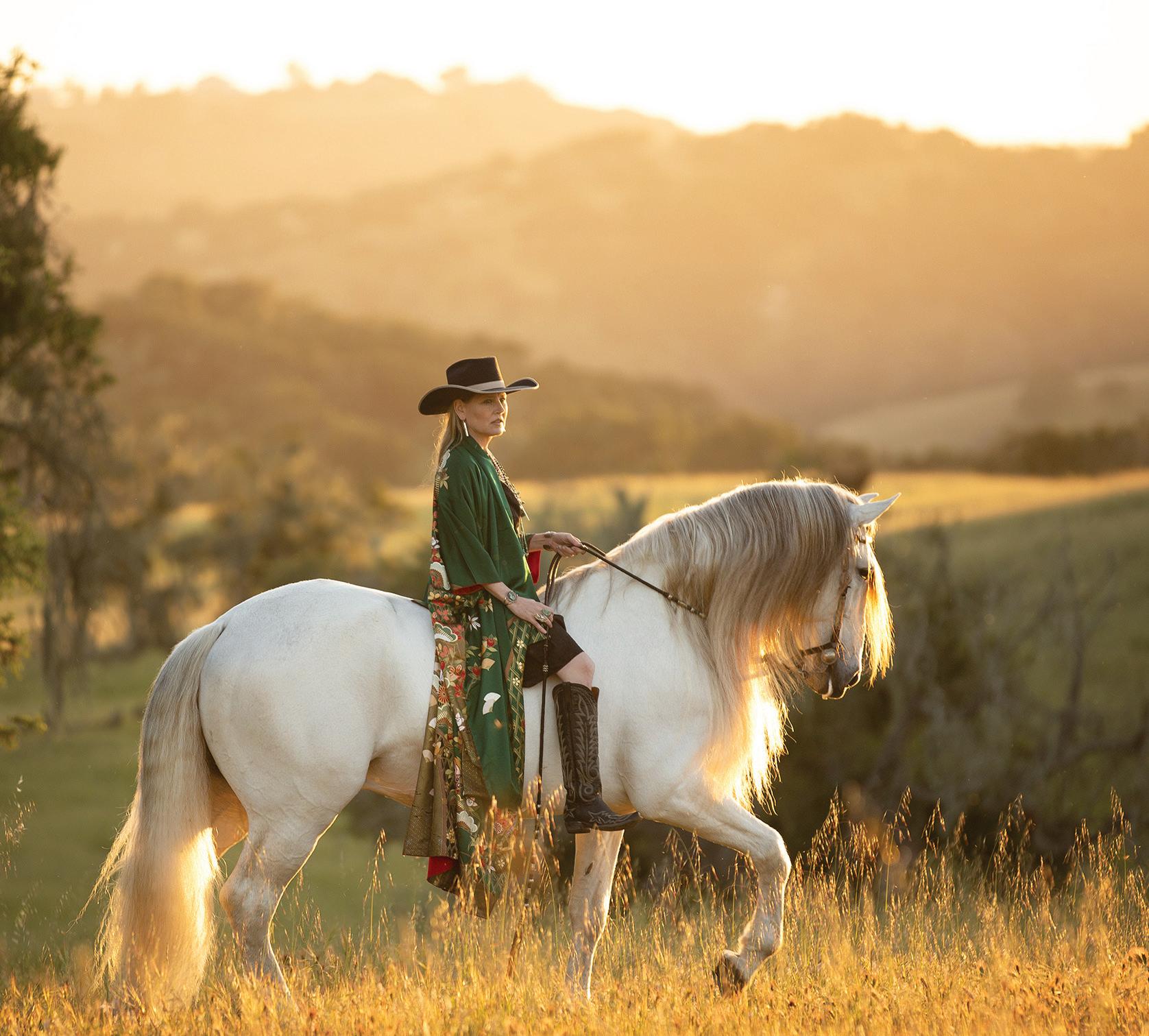
most salt-of-the-earth humans,” she said. “We wanted anybody who is into the outdoor space adventure lifestyle to really understand what Morro Bay has to offer. That story is grossly undertold.”

Witnessing the scene at the Embarcadero on May 20 felt like a dream come true for the outdoors community, she said. And there’s nothing that compares to the morning of an Ironman race.
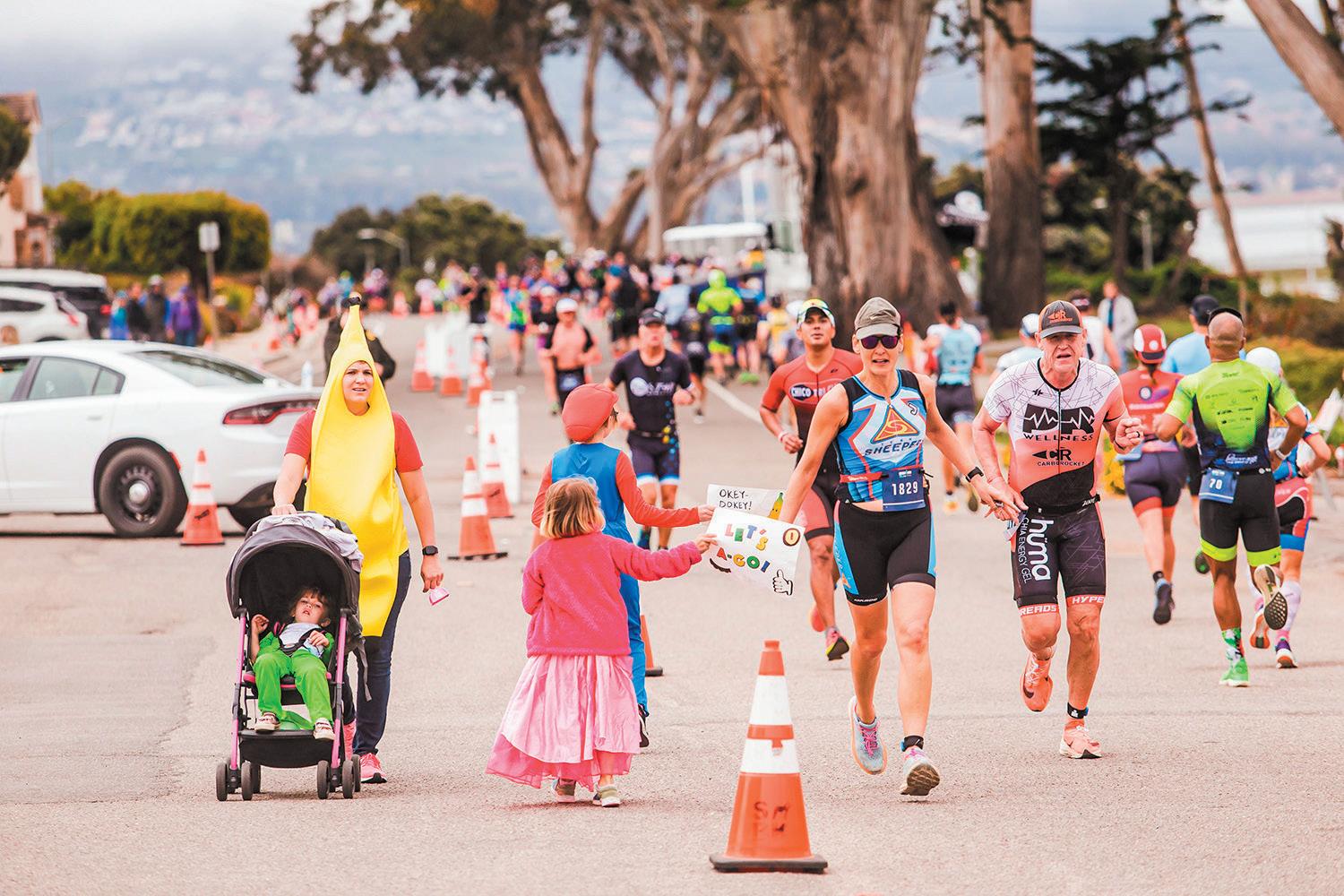
“In terms of the energy, it’s phenomenal. Literally, the town was vibrating,” Pruitt said. “It was really fun to talk to people from around the world who’d come to Morro Bay who otherwise would not have come
to the Central Coast or maybe even California. But they’re there with the intention to do this particular event. You have the everyday Joe mom and pops, and then you have these elite, professional athletes, and everything in between. It’s cool to see them all on the same playing field.
“And to also see the locals out cheering, whether they’re friends and family, or bystanders. Many people were inspired,” she added. “When you have that much positive, healthy energy, … I know the power that this can have over changing a person.”


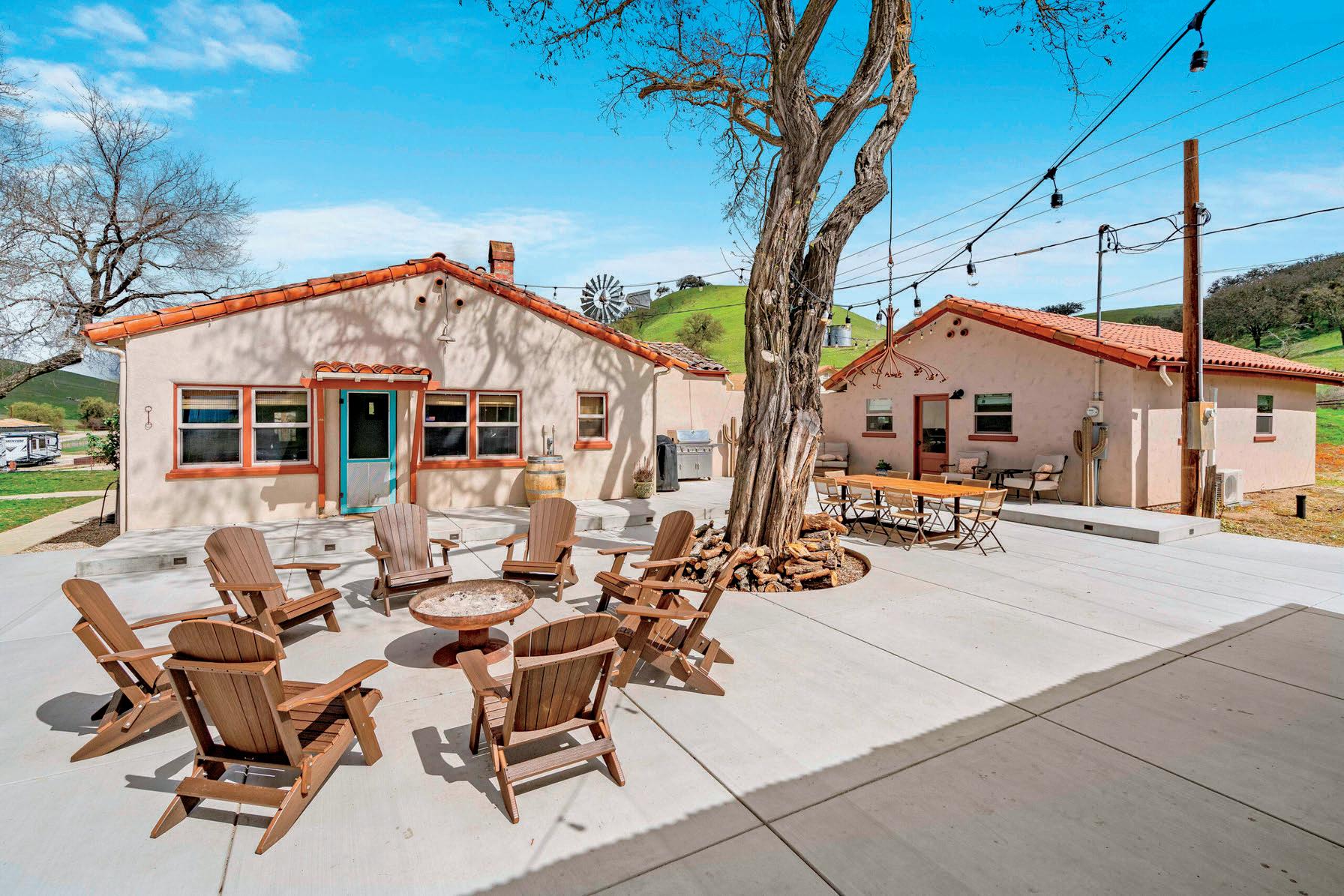


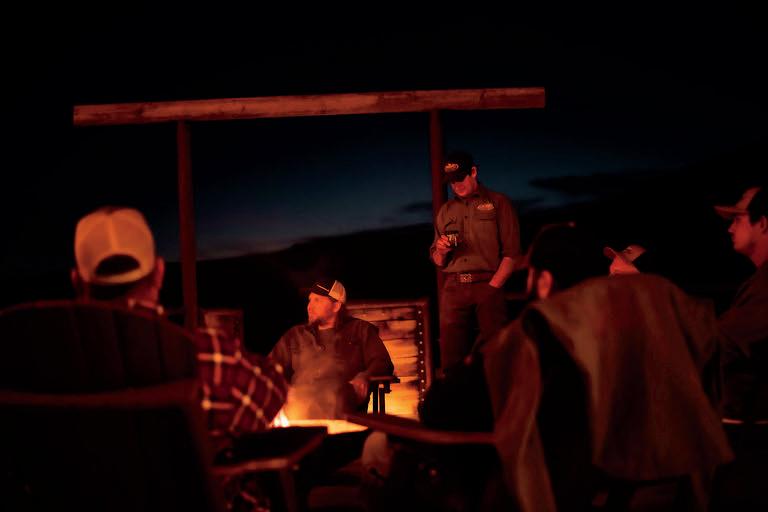






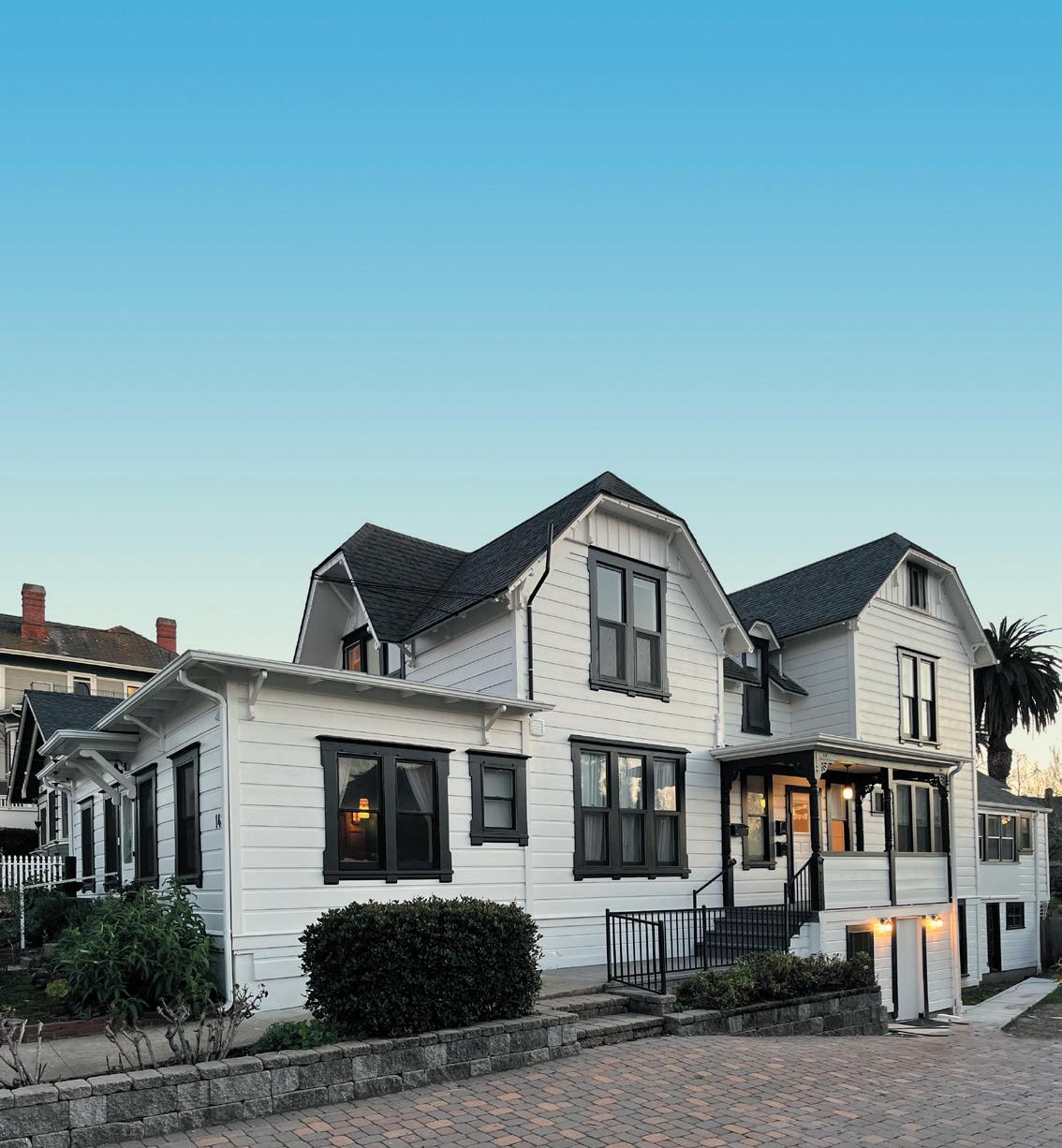


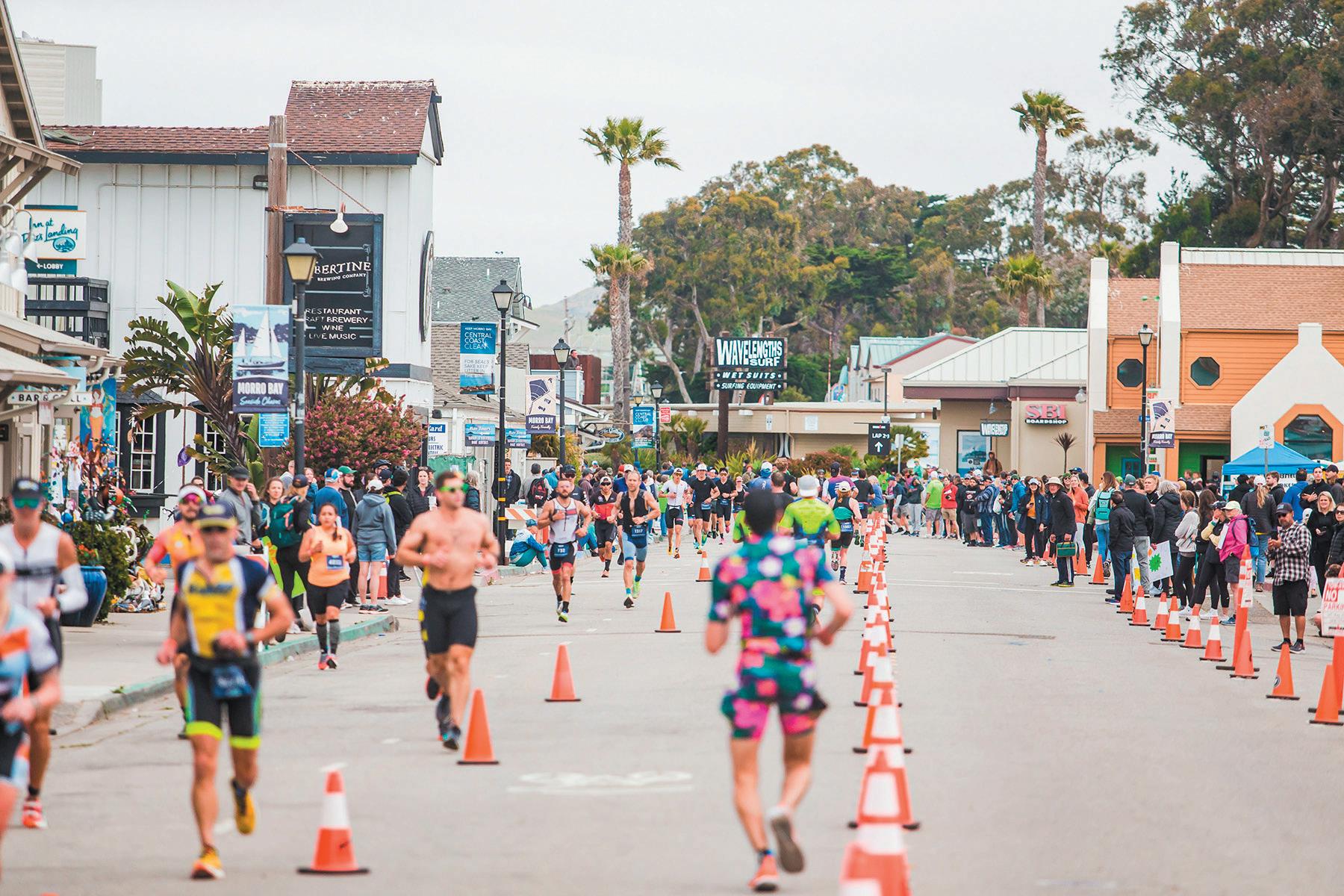



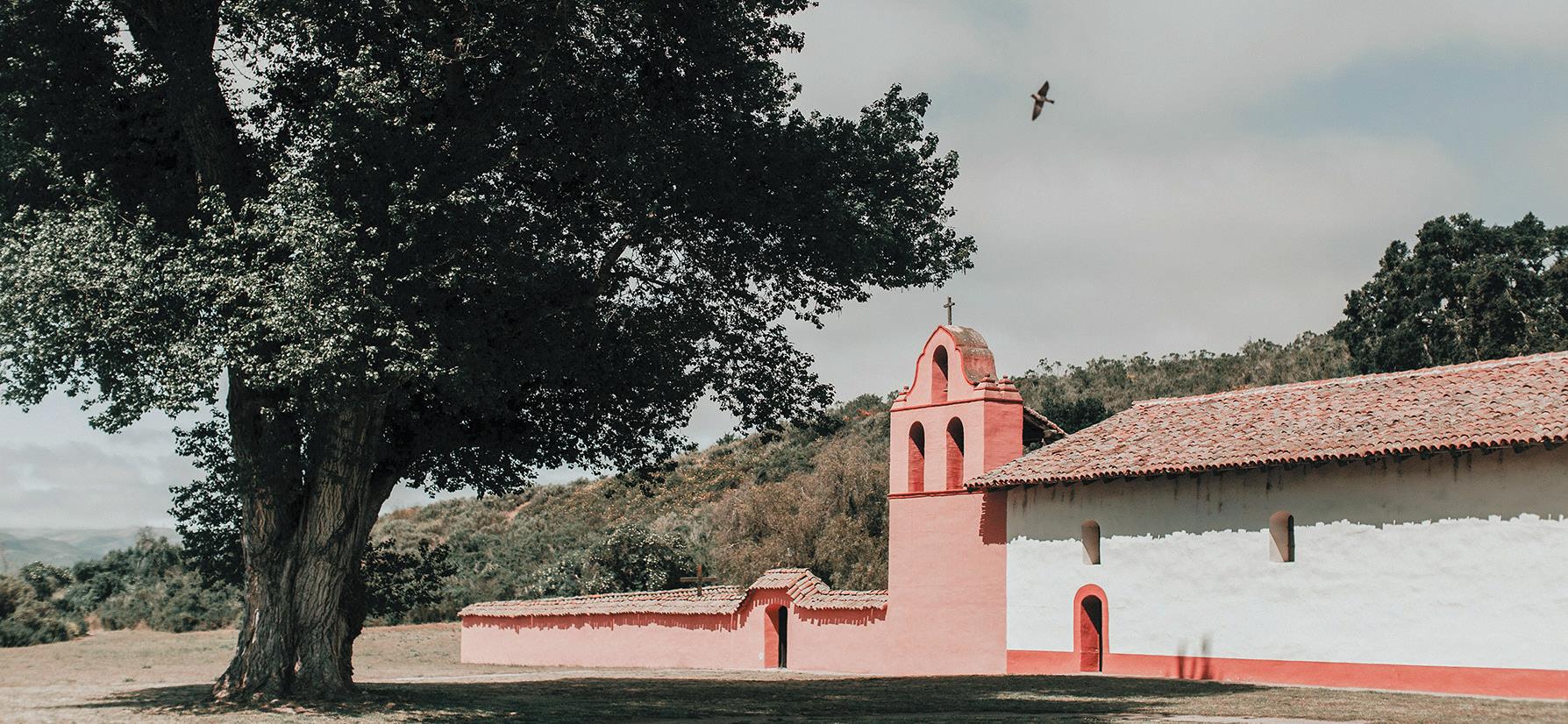 STORY BY CALEB WISEBLOOD PHOTOS BY ALEXANDRA WALLACE
STORY BY CALEB WISEBLOOD PHOTOS BY ALEXANDRA WALLACE
Afluffy Samoyed caught the eye of La Purísima Mission docent Michelle Pittenger seconds before a unique
demonstration commenced outside the Lompoc landmark.
“Looks like she’s ready for shearing, too,” Pittenger jokingly

said to the leashed dog’s owner, while visitors nearby huddled together to watch a sheep get a haircut in late spring.

Mission guests of all ages encircled volunteer Larry Miller, who sheared the wool off some sheep, one at a time, during the free outdoor demo known as Sheep
Shearing Day—just one of several traditional events held at the state park throughout the year.
As new visitors trickled in to observe the sheep salon, others weaved out. Many wandered over to Pittenger’s post, just outside the shearing station, where looms,
LA PURĺSIMA continued page 54
Sandalwood Spa, where we take pride in providing treatments that help to restore balance of the mind, body, & soul


For exclusive #SelfCare tips and tricks, products, services, specials, and a 31-Day #SelfCareChallenge...
Join us online @sandalwood spa as we make the most of our #
 bistro @adelinasbistro
bistro @adelinasbistro

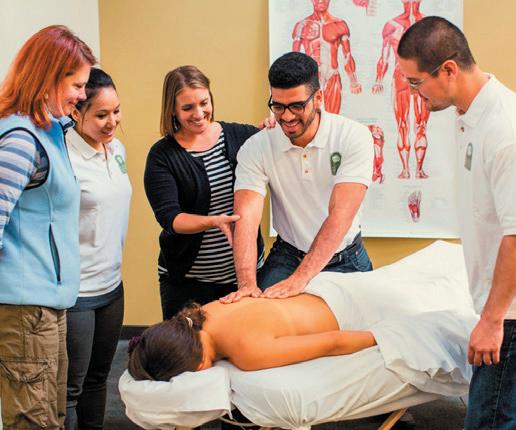

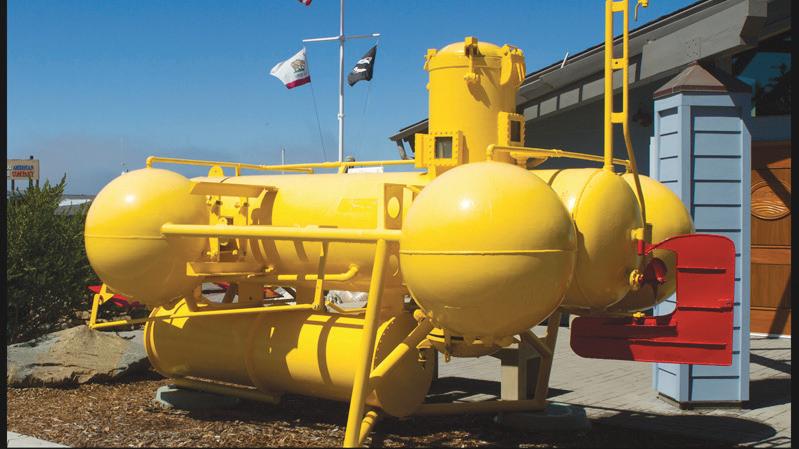
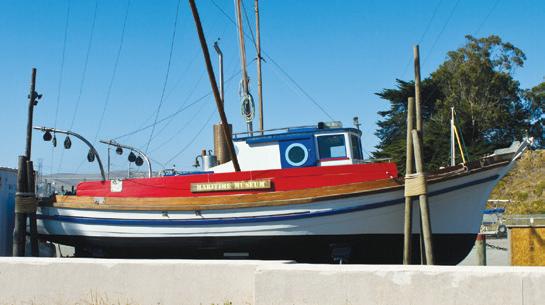
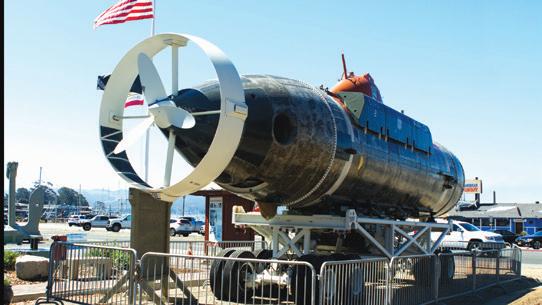
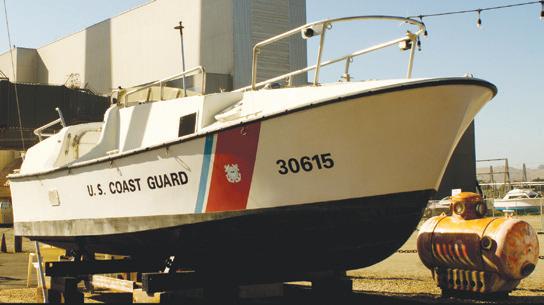








camping blankets, and baskets of wool were on display.
“Somebody once asked me if I could guesstimate how many blankets you could get out of one fleece,” said Pittenger, who greeted visitors with fun tidbits about wool weaving.
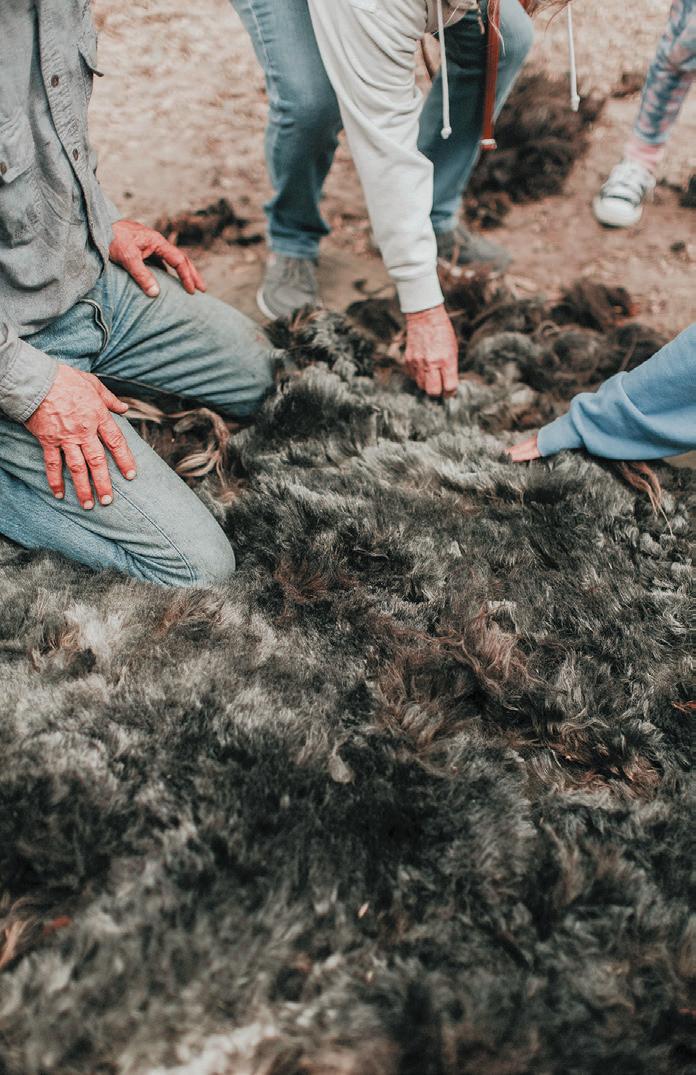
From 10 pounds of wool, Pittenger guessed she could probably produce about four blankets and said that some people are surprised to hear that she had no prior wool weaving experience before volunteering at the mission.
About six years ago, Pittenger was looking for a new hobby, and one of her friends was a docent at the state park who encouraged her to join.
“She dragged me out here, but she didn’t have to drag that hard,” Pittenger said with a laugh.
Wool weaving became a beloved pastime for Pittenger
after being trained by some of her fellow docents. The state park is always recruiting new volunteers to help demonstrate weaving, blacksmithing, candle making, tortilla making, carpentry, pottery, and other mission-era crafting activities for visitors to enjoy.
Upcoming docent-led festivities at the park include two Traditional Mission Life Day events, in which costumed volunteers host crafting
demos across the mission grounds, scheduled for July 22 and Aug. 26, from 11 a.m. to 2 p.m.
Sheep Shearing Day (which was held in late May this year), Traditional Mission Life Day, and other events are sponsored by Prelado de Los Tesoros, the nonprofit responsible for funding docent training and restoration projects at the state park, as well as feeding and caring for sheep,
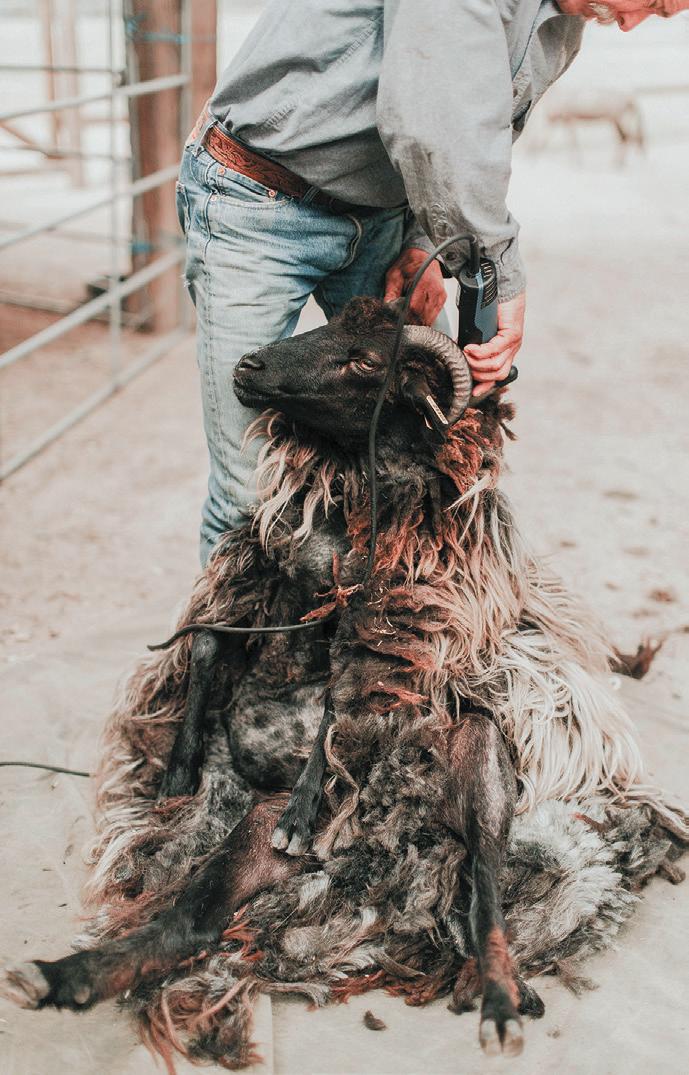
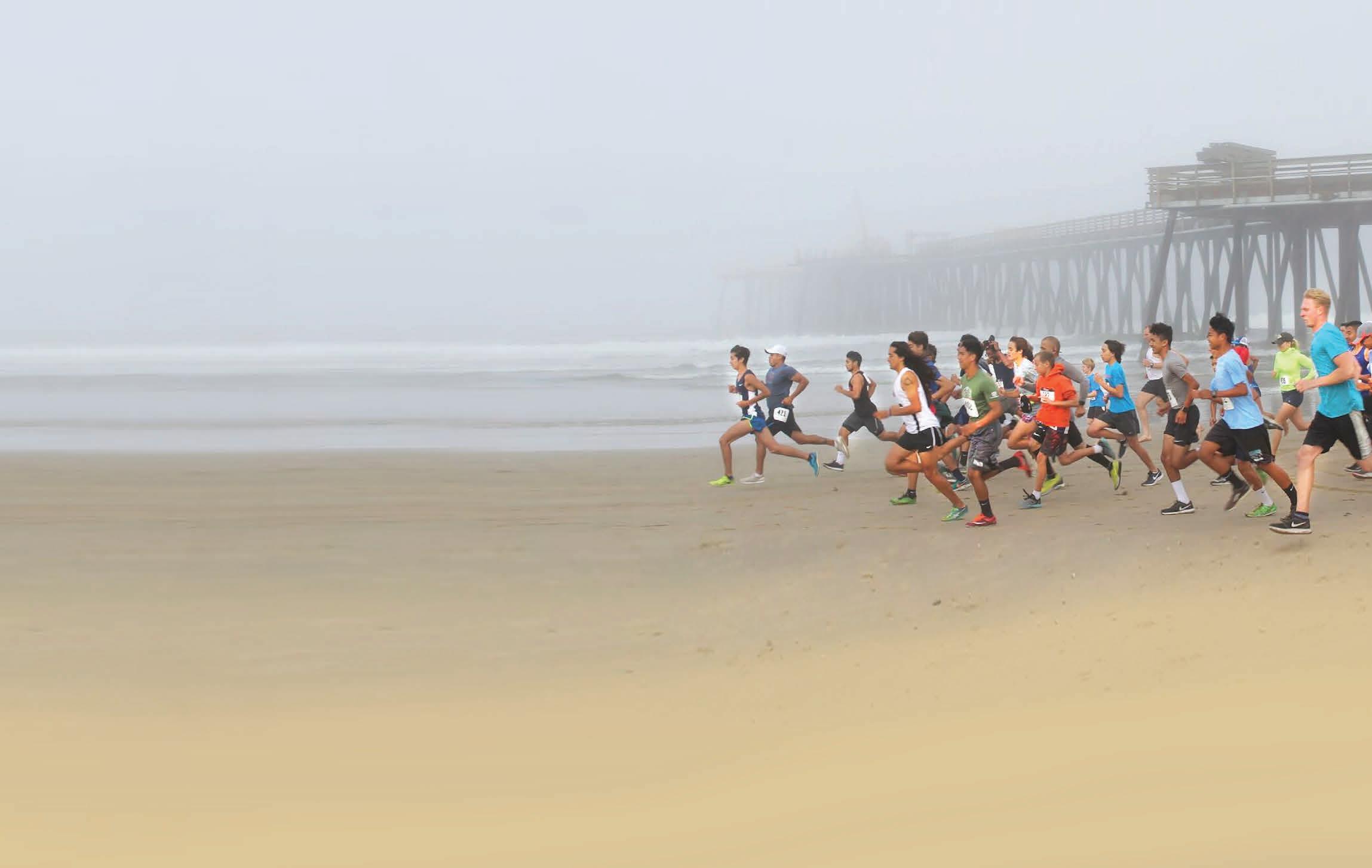
horses, chickens, and other animals that live on the 2,000-acre property.
The park also encompasses about 25 miles of hiking paths, including the short but scenic Vista Del La Cruz Trail—an uphill trek to the mission’s iconic cross. This public trail is open to hikers, walkers, runners, mountain bikers, and dog owners (as long as their dogs are leashed).
Aside from the trail opportunities, another reason La Purísima Mission attracts outdoor enthusiasts each year is the venue’s biannual Mountain Men Encampment. During this event, members of the American Mountain Men—a Wyoming-based nonprofit dedicated to preserving traditions and tools used by trappers, explorers, and traders during the 1800s—set up shop at the state park and lead workshops for the public to enjoy.
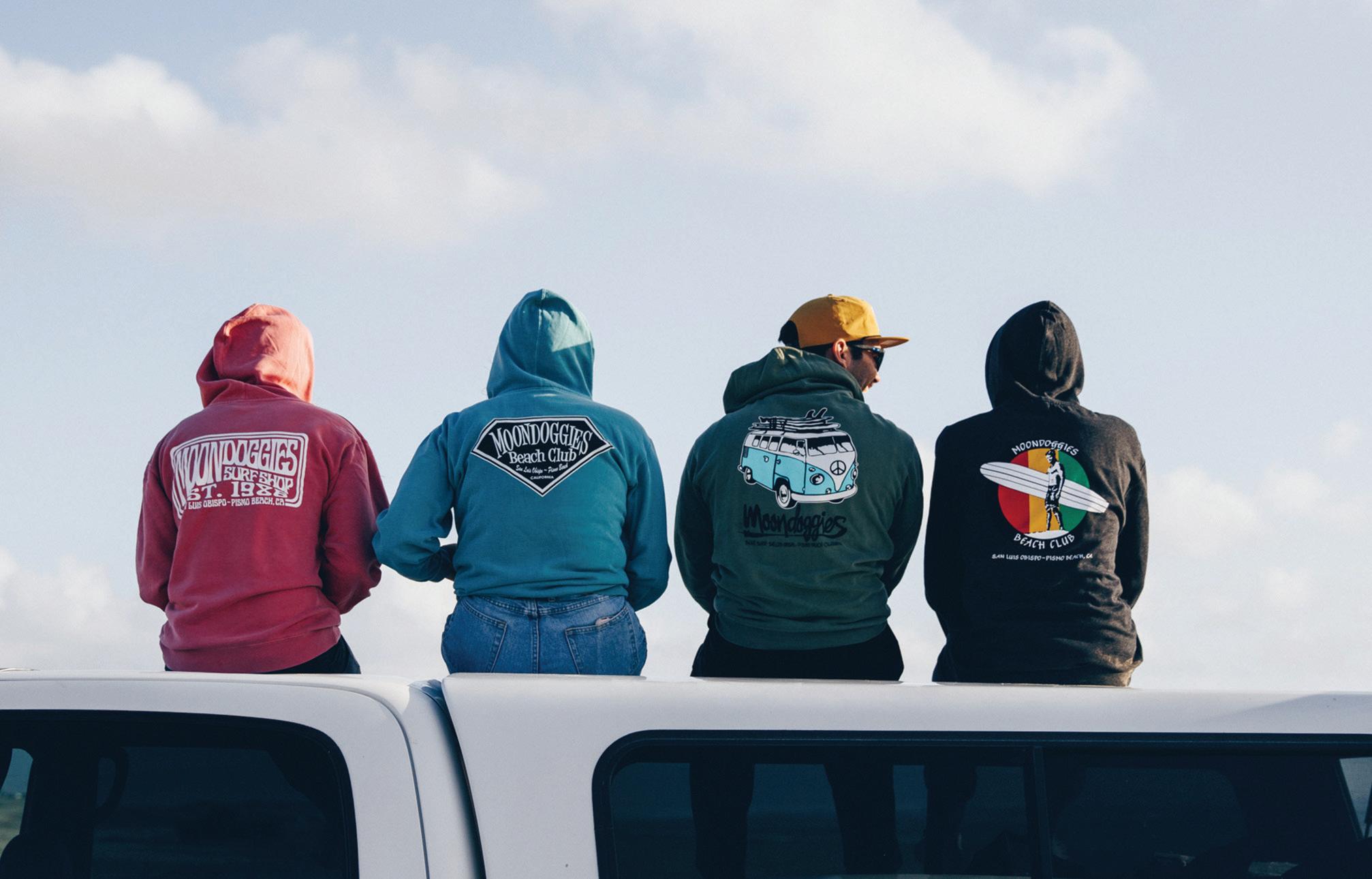





LA PURĺSIMA from page 54
Hide preparation and leatherworking are among the demos featured at the encampment, scheduled for Aug. 25 through 26. (The spring encampment occurred in March).

Regular mission docents are on-site as well during the encampment, including Pittenger, who said she applauded the efforts of hopeful Mountain Men recruits during the program’s rigorous application process.

Requirements of membership include being able to demonstrate skills needed for primitive survival in the wilderness, such as the use of steel traps and snares, and spending at least two days and one night in a primitive camp during each season of the year. Members of the nonprofit also have to hand cut and hand sew their own 1800s-era clothing, which they’re required to research for authenticity.
“You have to be able to track and you have to be able to hunt and do all these skills that a trapper would have had access to around the 1820s and 1830s,” Pittenger said.

As an experienced docent since



2017, Pittenger had no trouble regaling passersby with some historical background on wool production at La Purísima Mission during the 1800s.
“The reason wool was such a good trading item was because of the merchant sea captains,” the costumed docent said on Sheep Shearing Day. “When they’d come around the California coast, the padres would take these blankets and they’d take raw fleece and trade them,” said Pittenger, who described the wool as a much-needed source of warmth for the sailors.
“It’s cold on the Pacific, and people generally don’t do their most enthusiastic work when they’re cold,” she said with a laugh.




Our team of specialists takes a systems-based approach to your care, addressing the key areas necessary for quick recovery. Pulling best practices from multiple disciplines, a personalized treatment plan is created just for you.
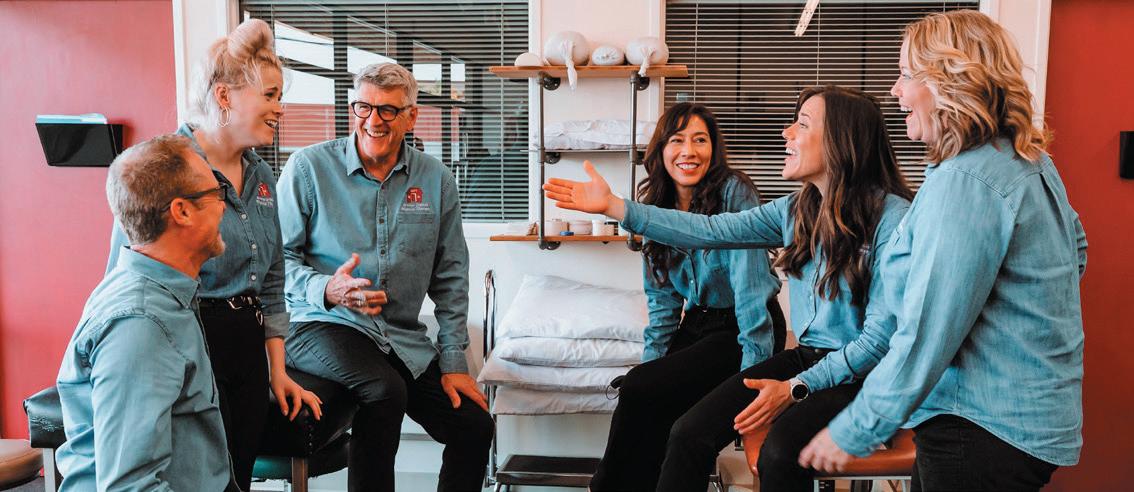
• Post-surgical rehabilitation


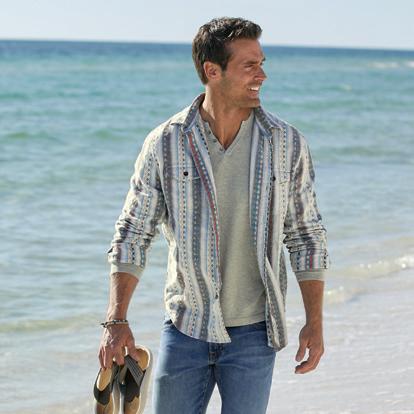
• Balance & gait analysis • Back pain

• Rotator cuff & shoulder injuries





• Myofascial release
• Capsular contracture
Now offering pelvic floor physical therapy for:










• Prenatal discomfort









• Post-partum reconditioning


• Post-Cesarean section rehabilitation
• Vaginal pain & painful intercourse
• Urinary incontinence & bladder retraining


• Bowel pathology & function
Hemp extracts are not created equal. This highly concentrated oil was created for maximum therapeutic relief. We concentrated our oil into the most potent legal hemp extract possible staying under .3% thc threshold and including a maximum level of available cannabinoids as to capture the full entourage effect of the Hemp plants.




We don’t just want you to feel better. We want you to heal better.
Festival season runs during the hottest time of the year in the U.S. and a handheld fan is game-changing to cool yourself off in the sun or in a packed crowd. You can either get a folding fan or a travel-sized, battery-powered fan. They are easy to store, lightweight, and most are long-lasting. Some battery-powered fans also include misters that can spritz water—which can be really refreshing when sweating in high temperatures.
Folding fans run from $10 to $25, and battery-powered fans run from $9 to $20. Check the festival’s rules surrounding battery-powered fans before bringing in to the festival.
Hydration is key at music festivals. Investing in a hydration backpack or a water bladder to put in a small backpack frees up your arms for dancing and stores more water than most bottles—allowing you to spend more time grooving and less time in line for refills.

A pack can also store other things you’ll need during the day, including sun screen, a fan, a jacket or pashmina for the evening, protein bars (if allowed), and sunglasses. Keep your ID, credit cards, and other valuables stored in the front of your body—either in a strap pocket or carry a fanny pack/purse.

Most music festivals allow bladders in (as long as they’re empty) and have plenty of refill stations inside, but always double-check the festival’s rules, maps, and regulations to confirm. Hydration backpacks start at $17, and a water bladder runs from $12 to $30.
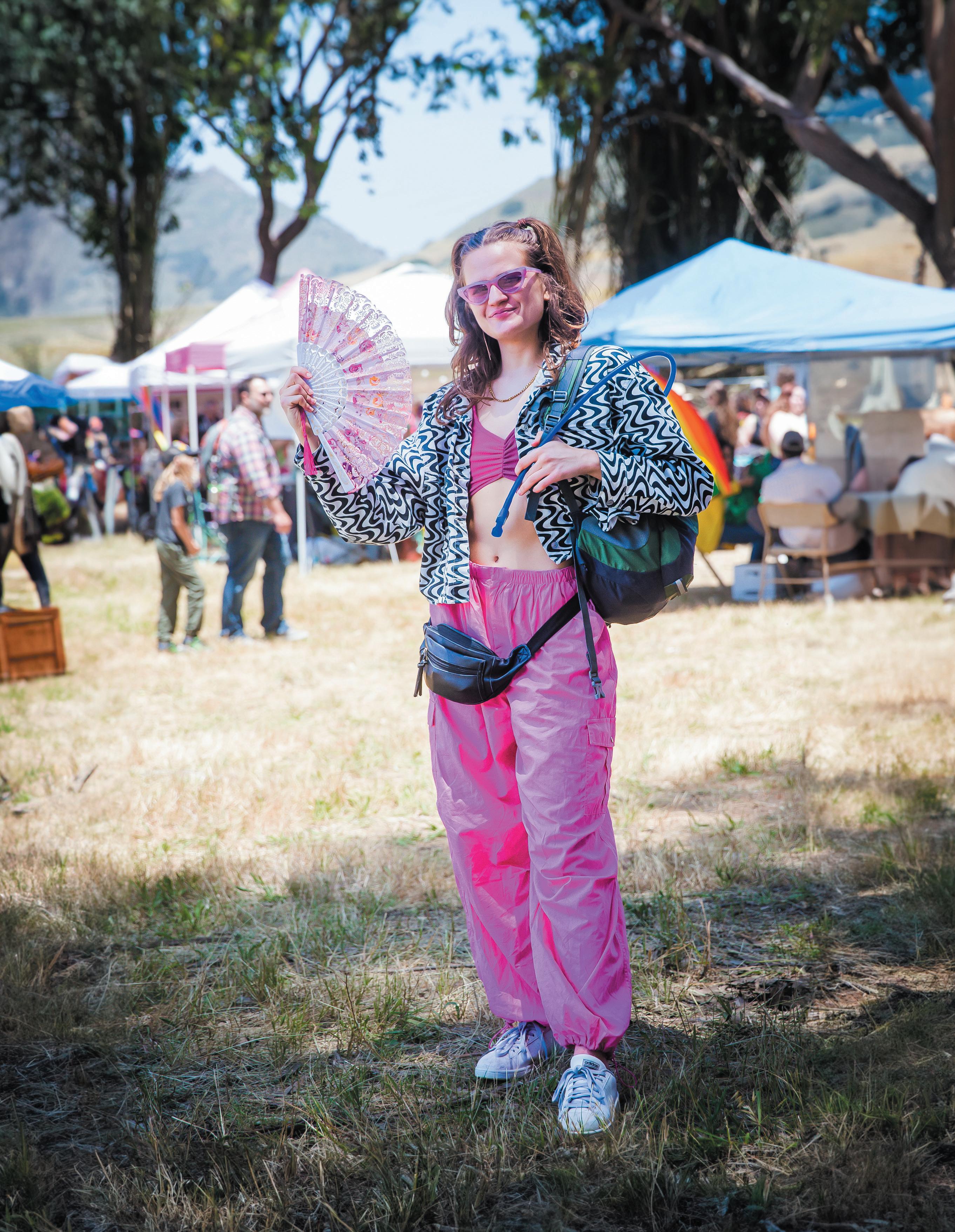
Hearing loss or damage starts at 85 decibels of sound, and most music festivals play music at 95 to 120 decibels. Ear plugs are a great way to prevent hearing loss, ringing, and damage.

Disposable foam ear plugs are available in bulk online, but they aren’t the best because they muffle the music. Purchasing a pair of reusable ear plugs designed for shows makes a huge difference in sound quality, reduces ringing afterward, and are supposed to prevent hearing loss.
Reusable ear plugs run from $15 to $30 on Amazon. I purchased Hearprotek high fidelity concert ear plugs for $19 and they come with two sets of plugs and storage containers.

While music festivals and backpacking seem eons apart, the two activities are pretty similar. You’re in relatively remote areas for multiple days, spending several hours on your feet, and baking in the hot sun. You ration your food, need plenty of water, and spend your nights camping.


Like backpacking, investing in quality gear can make a big difference in someone’s festival experience. Here are some essentials everyone should consider before their next festival.


I once walked 10 miles per day at a three-day music festival without foot inserts, and my feet were exhausted and blistered. Adding foot inserts to your pre-festival shopping list is a must: They add an extra layer of support and help prevent rubbing and blisters.

Buy foot inserts that will best support your foot shape and try to get a new pair after a few years since they wear down over time. I bought Dr. Scholl’s Tri-Comfort Insoles for heel, arch support, and ball of foot comfort with “target cushioning” for $8.97 on Amazon, and I’ve been very happy with my purchase.
However, foot inserts don’t do all of the work. Make sure to break in any new shoes you want to wear at the festival or bring your most comfortable pair. Your feet will thank you later!
Foot inserts run from $8 to $49 on Amazon. ∆
What you’ll need to enhance your comfort, protect your hearing, and keep you safe at outdoor music festivals


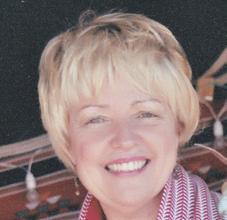

Playing outdoors is important to the healthy growth and development of children. Research shows that children who play outside regularly are healthier and stronger. Taking play outside helps children connect with the natural world. It also improves coordination, encourages active imaginations and can help reverse childhood obesity rates.



Starting a child’s appreciation of nature can begin early, with walks in a stroller. As the child grows, visit playgrounds and parks, or spend time exploring the backyard.

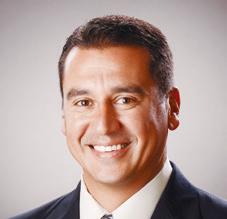





Unstructured outdoor play can be especially beneficial because it encourages social skills, too. Children create games, take turns, make decisions together and learn about sharing as part of unstructured play.



“All you need is a boat and oars” to get out on the water, according to Paul Irving with BigBigSLO and the Baywood Rowing Club (aka the Baywood Navy), who happens to have boats to spare.
He has 24 boats, more or less, from his “itty-bitty slow boat to my racing shell,” he said one Wednesday morning in May as he rowed his wooden boat across Morro Bay toward the sand spit.
How many boats Irving has depends on the day, the boat for sale, and the deal, which he seems to be able to seek out like a homing pigeon. He’s obsessed. A new rower and oars aren’t cheap, but finding a well-priced used boat (possibly, between $800 and $1,500) can make getting into the sport a little cheaper.
Irving has been boating for about 35 years, most of those spent kayaking and sailing, and he’s constantly encouraging people to get out on the water with him—often lending them a boat from his fleet.
“I’ve got about 9,000 miles on the bay,” he said.

Rowing became a fi xture in Irving’s life during the pandemic. Now, he and other members of the club do their best to meet at the Baywood Park Pier around 7:30 a.m. fi ve days a week and head out on the water.
“Get outside, get the blood pumping, breathe some salt air,” Irving said. “It’s a great way to start the day.”

If you want to try it but don’t know where to start, he recommends looking up the San Luis Obispo Rowers Club, now in its 20th year at Santa Margarita Lake.

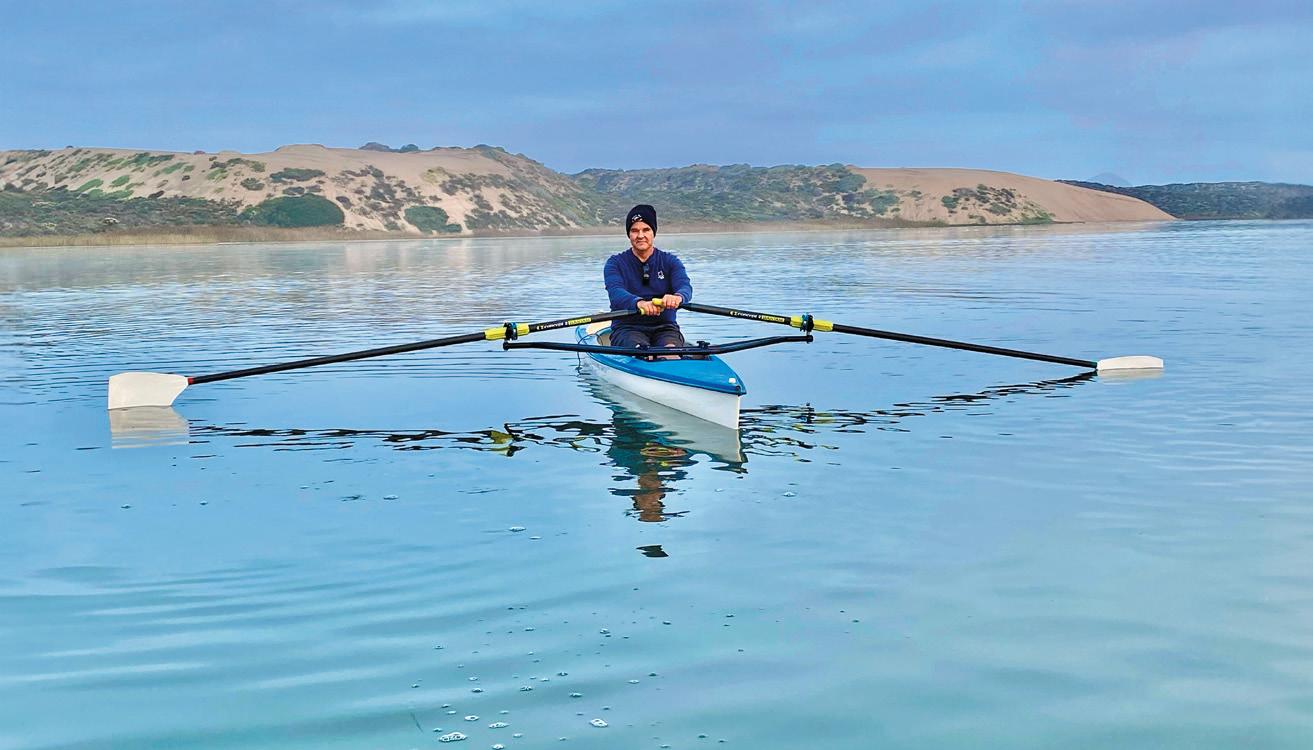
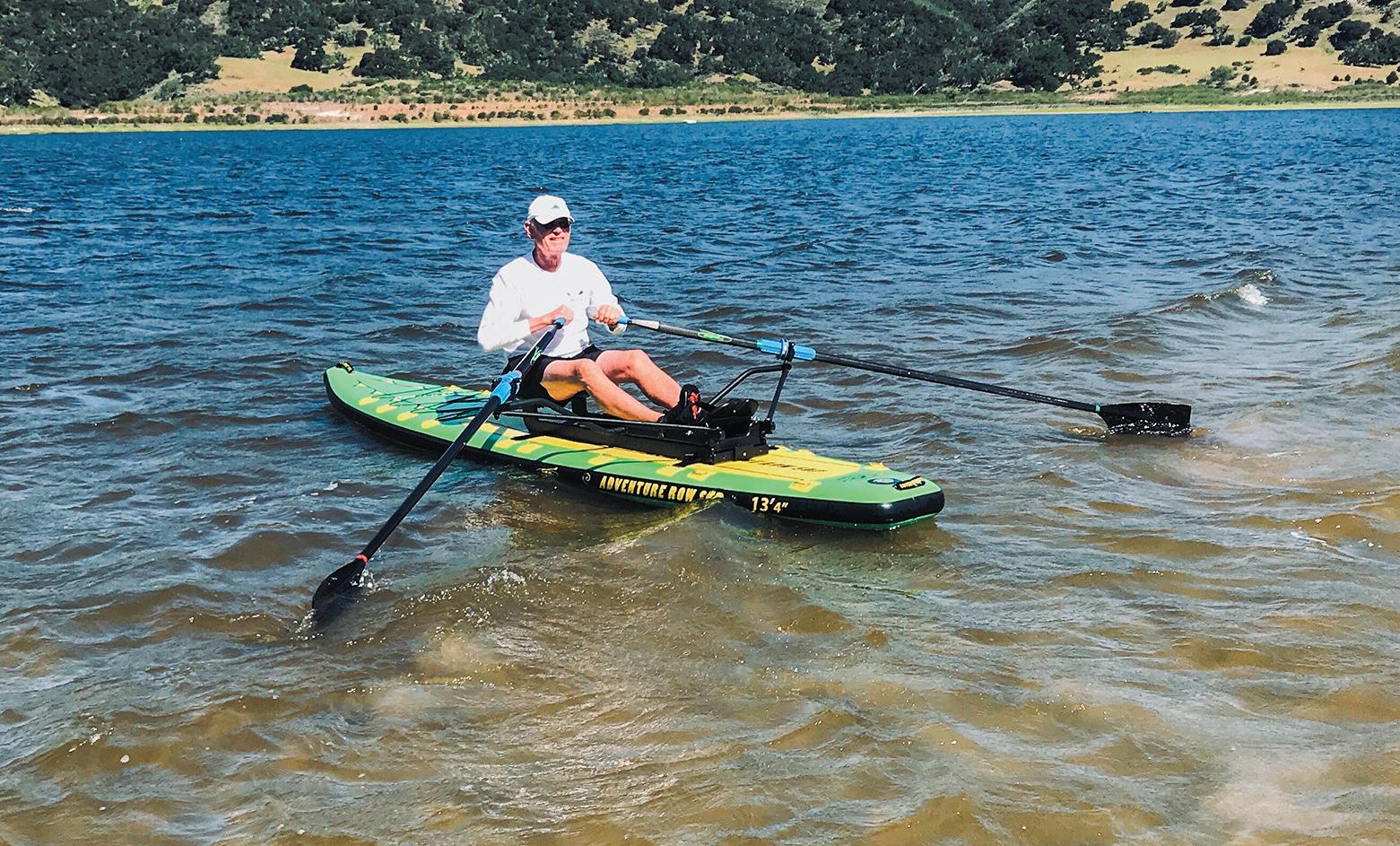
“The best thing you can do is get some pointers from people who know,” Irving said. “With rowing, it’s super easy to develop bad habits and hurt yourself.”
Marty Hawke, who’s been a club member since its founding year in 2003, has helped teach countless people to row. The club offer private lessons ($75 for two hours) and three fi ve-week sessions per year (this year’s are already sold out) on the lake in club boats.
At about 70 members strong, Hawke said the SLO Rowers Club has the largest membership its ever had. He attributes it to COVID-19 and a growing interest in the sport.
“We always joke, it’s one of the few sports that you can sit down in,” Hawke said with a laugh, adding that the sport works about 85 percent of the muscles in your body. “Rowing uses more muscles than any other activity.”

At 76 years old, Hawke has been rowing for almost six decades, starting in college in 1965. He said about half of the club’s members
have been rowing since college and half learned to row by taking lessons from the club and later joined.
“We can teach anybody to row,” he said, from people in their 80s to kids who are 12.
A member recently helped start the Cal Poly Rowing Club, which is now officially recognized by the university and has about 15 student members. The SLO Rowers bought an eight-oar boat and a four-oar boat to help out the Cal Poly crew teams. Volunteers spent months refurbishing the boats and getting them ready to use.
In addition to those crew boats, club members have access to any
of the 20 or so rowers the club has on hand in the boathouse next to Santa Margarita Lake.
“The privilege of being a club member is you get access to all these boats. … So you don’t have to buy equipment,” Hawke said. “They’re expensive. They’re not easy to store.”
Check out the SLO Rowers Club and its boathouse at Santa Margarita Lake. Members get access to boats, the boathouse, and the club’s docks. If you want to take a lesson or join the club, find the SLO Rowers Club online at slorc.org or email Marty Hawke at rowslorc@gmail.com.
Rowing rigs come in all shapes and sizes. While savvy shoppers might be able to snag a good used boat for $400 to $1,000, according to Baywood Rowing Club member Paul Irving, a standard used boat will cost about $1,500 or more, said Marty Hawke with the SLO Rowers Club. Both said that Alden 16 s (above right) are a good entry level boat, which run between $3,500 and $5,000 new. At 16 feet long and about 2 feet wide, the boat weighs about 40 pounds. Visit adirondackrowing.com for more info. If you’re concerned about balance and portability, Hawke recommends an Oar Board (above left), which are between $3,300 (on sale) and $4,600 new. The 13-foot long, 32-inch wide inflatable paddle board comes with a rowing rig that gets mounted on the top and wheelie bags for ease of transport. Visit oarboard.com for more info.
To get your business listed here or to get more information about the Get Outside business directory email advertising@newtimesslo.com
3 Day Blinds (877) 625-6034
3DayOffer218.com
Aerovista Dental
(805) 543-4266
835 Aerovista Place, Ste 210 San Luis Obispo aerovistadental.com
APX Boomers
(856) 281-4777
2250 N. Preisker Lane Santa Maria boomersparks.com
Arroyo Grande
Parks & Recreation
(805) 473-5474
1221 Ash St. Arroyo Grande arroyogrande.org/rec
Arroyo Grande
Physical Therapy
(805) 481-5656
117 S. Halcyon Rd. Arroyo Grande arroyograndephysicaltherapy.com
Baxter Moerman
(805)305-8118
1128 Garden St. San Luis Obispo baxtermoerman.com
Behind the Barn Consignment
(805) 464-2072
4785 Traffic Way, Unit E Atascadero behindthebarnconsignment.com
Black Bear Springs Organic Farm (805) 423-0637
blackbearspringshemp.com
Black Sheep Bar & Grill
(805) 550-5412
1117 Chorro St. San Luis Obispo blacksheepslo.com
Boo Boo Records
(805) 541-3181
978 Monterey St. San Luis Obispo booboorecords.com
Cambria Bicycle Outfitters / CBO
(805) 543-1148
1239 Monterey St. San Luis Obispo cambriabike.com
Cambria Garden Shed (805) 927-7654

2024 Main St. Cambria cambriagardenshed.com
Camp Natoma (805) 316-0163
PO Box 3012 San Luis Obispo campnatoma.org
Central Coast Kayaks (805) 773-3500

1879 Shell Beach Rd. Shell Beach centralcoastkayaks.com
Central Coast Landscape Products (805) 595-3478

445 Prado Rd. San Luis Obispo cclandscapeproducts.com

Central Coast Solar Brokers (805) 668-4420 centralcoastsolarbrokers.com

California Holistic Institute
(805) 786-4808
11555 Los Osos Valley Rd. Ste #109 San Luis Obispo californiaholisticinstitute.com
Chukchansi Gold Resort & Casino
(866) 794-6946
711 Lucky Ln. Coarsegold chukchansigold.com
Chumash Casino (805) 686-2163
3400 East Hwy. 246 Santa Ynez chumashcasino.com
City of Atascadero Park & Recreation
(805) 470-3490
6500 Palma Ave. Atascadero atascadero.org
City of Santa MariaUtilities Dept.
(805) 925-0951
2065 E. Main St. Santa Maria cityofsantamaria.org
Coelho Academy of Music
(805) 925-0464
325 E. Betteravia Rd., Ste B4 Santa Maria coelhomusic.com
Community
Health Centers / CHC
(866) 614-4636
28 Central Coast Locations communityhealthcenters.org
Dana Adobe
(805) 929-5679
671 S. Oakglen Ave. Nipomo danaadobe.org
Downtown Paso Robles Main Street Association
(805) 238-4103
835 12th St., Ste D Paso Robles pasoroblesdowntown.org
Downtown SLO (805) 541-0286
1135 Chorro St. San Luis Obispo downtownslo.org
Festival Mozaic
(805) 781-3009
265 South St Suite G San Luis Obispo festivalmozaic.org
Flower Carriage
(805) 922-0578
2255 S. Broadway #15 Santa Maria mscardel.com
FOXEN (805) 937-4251
7200 Foxen Canyon Rd. Santa Maria foxenvineyard.com
Gaia’s Garden (805) 441-3723
875 Main St. Morro Bay gaiasgardenmb.com
Gavin’s Books
(805) 922-4282
230 E. Betteravia Rd., Ste K Santa Maria gavinsbooks.com
Giant Grinder (805) 543-6700
1901 Broad St. San Luis Obispo giantgrinderslo.com
Habitat for Humanity for SLO County
(805) 546-8699
2790 Broad St. San Luis Obispo hfhsloco.org
Harley Davidson of Santa Maria
(805) 928-3668
2022 Preisker Ln. Santa Maria santamariaharley.com
Island Packers (805) 642-1393
1691 Spinnaker Dr., Ste.105 B Ventura islandpackers.com
Jen Narragon
Investments/CHER/WiiRE (805) 550-7991
1421 Garden St. San Luis Obispo jennarragon.com
Krobar Craft Distillery
(805) 467-9463
2174 W. Highway 46 Paso Robles krobardistillery.com
La Sumida (805)878-6941
165 S Patterson Santa Barbara lasumida.com
Land Conservancy of SLO County (805) 544-9096

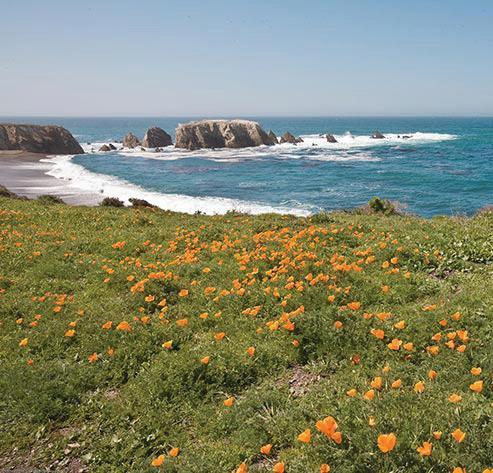
1137 Pacific St. San Luis Obispo lcslo.org
Madonna Inn
Resort & Spa
(805) 543-0300
100 Madonna Rd. San Luis Obispo madonnainn.com
Margarita Adventures (805) 438-3120
22719 El Camino Real Santa Margarita margarita-adventures.com
Meathead Movers (805) 544-6328
3600 S. Higuera meatheadmovers.com
Melby’s Jewelers (805) 925-1678
1140 E. Clark Ave. Santa Maria melbys.com
Midland School of Los Olivos (805) 688-5114
5100 Figueroa Mountain Rd. Los Olivos midland-school.org
Mike’s Shoes (805) 547-9593
487 Madonna Rd. #3 San Luis Obispo mikesshoessanluisobispo.com
Mission College Prep
(805) 543-2131
682 Palm St. San Luis Obispo missionprep.org
Moondoggies Beach Club
(805) 541-1995
837 Monterey St. San Luis Obispo moondoggiesbeachclub.com
Morro Bay Maritime Museum
(805) 255-5044
1210 Embarcadero Morro Bay
morrobaymaritime.org

Mustang Waterpark (805) 489-8898
6840 Lopez Dr. Arroyo Grande mustangwaterpark.com
NatureTrack Foundation
(805) 866-2047
P.O. Box 953 Los Olivos naturetrack.org
Nunno Steel (805) 238-6801
3461 Dry Creek Rd. Paso Robles nunnosteel.com
O’Connor Pest Control (805) 330-9247
101 Cuyama Ln. Nipomo oconnorcentralcoast.com
Oakstone Outfitters
(805) 472-2200
71201 Sargents Rd. Bradley oakstoneoutfitters.com
Pacific Energy (805) 544-4700
2121 Santa Barbara St. San Luis Obispo alteryourenergy.com
To get your business listed here or to get more information about the Get Outside business directory email advertising@newtimesslo.com
BUSINESS DIRECTORY from page 61
Patrick James (805) 549-9593
Higuera St. San Luis Obispo patrickjames.com
Pediatric Medical Group
(805) 922-3548
1430 E. Main St. Santa Maria pmgsm.com
Pismo Beach
Parks & Recreaetion (805) 773-7063
760 Mattie Rd. Pismo Beach pismobeach.org
Point San Luis Lighthouse (805) 540-5771
PO Box 308
Avila Beach pointsanluislighthouse.org
Robbo Music Studio (805) 801-9841
Morro Bay robbomusic.com
Sandalwood Spa (805) 343-7520
1645 Trilogy Parkway Nipomo monarchdunewhoa.com
San Luis Marble
(805) 544-9133
5452 Edna Rd. San Luis Obispo slmarble.com
Santa Maria Fairpark (805) 896-2674
937 Thornburg Santa Maria santamariafairpark.com
Santa Maria
Public Airport
(805) 922-1726
3217 Terminal Dr. Santa Maria santamariaairport.com
Santa Ynez Chamber of Commerce (805) 350-8517
PO Box 1738 Santa Ynez santaynezchamber.org
Sierra Club Santa Lucia Chapter (805) 543-8717
PO Box 15755 San Luis Obispo sierraclub.org, meetup.com
SLO Botanical Gardens (805) 541-1400
3450 Dairy Creek Rd. San Luis Obispo slobg.org
SLO County
Parks & Recreation (805) 781-5930
1144 Monterey St. San Luis Obispo slocountyparks.org
SLO Rowing Club (805) 459-8874 Santa Margarita Lake and Morro Bay slorc.org/learn-to-row
SLO Sportsmen’s Association (805) 541-3338
3270 Gilardi Rd. San Luis Obispo slosa.org
SLOCOG / Rideshare (805) 597-8022
1114 Marsh St. San Luis Obispo regionalrideshare.org
Solarponics (805) 466-5595
4700 El Camino Real Atascadero solarponics.com
St. Joseph High School (805) 937-2038
4120 S. Bradley Rd. Santa Maria sjhsknights.com
Sun Buggy (805) 244-9721 307 Pier Ave Pismo/Oceano State Park sunbuggy.com/pismo
Sycamore Mineral Springs Resort
1215 Avila Beach Dr. San Luis Obispo sycamoresprings.com
That’s Fetch (805) 361-0802
3564 Skyway Dr. Santa Maria thatsfetch805.com
The Back Porch (805) 938-1965
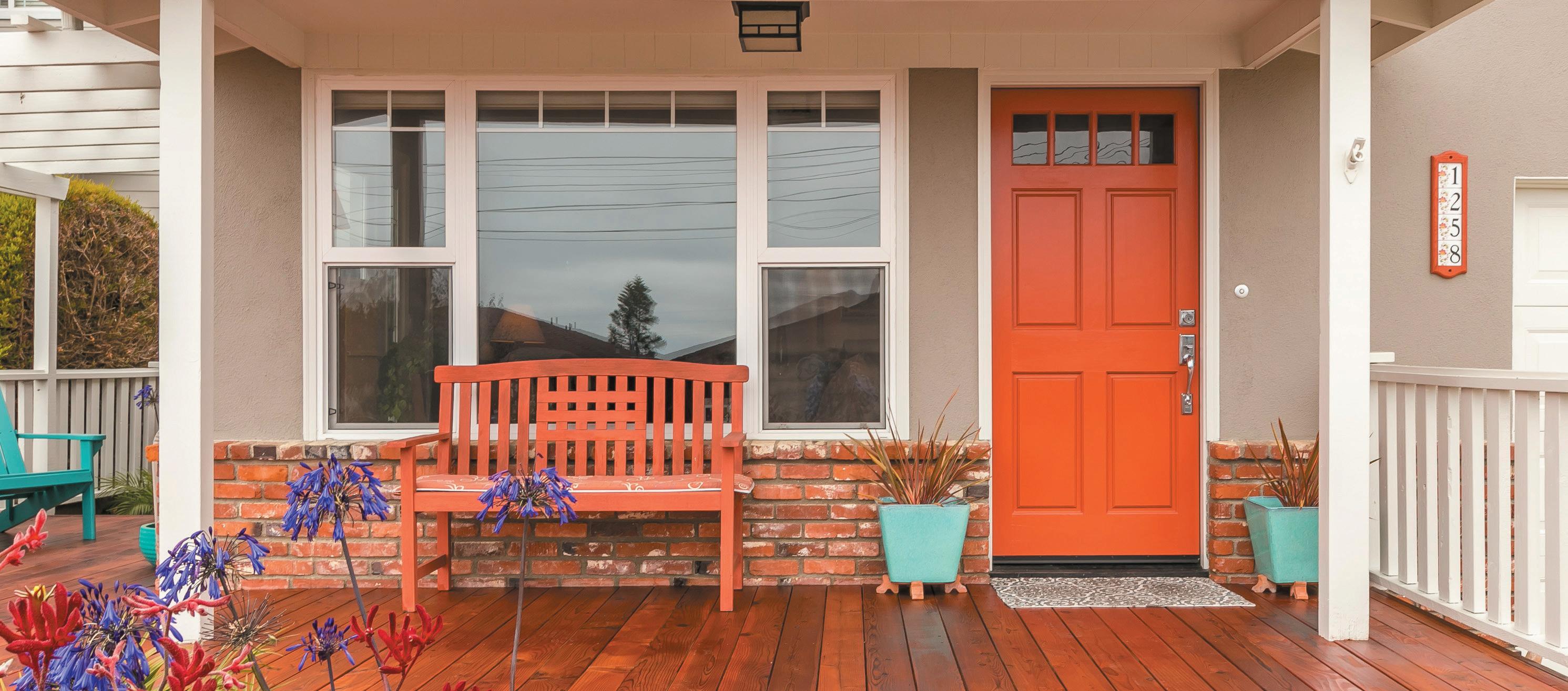
4850 S. Bradley Rd. Santa Maria backporchflowers.net
The Camp At Carmel Valley (831) 659-2761
33200 E. Carmel Valley Carmel Valley campcarmelvalley.com
The Mortgage House (805) 782-6999

1103 Toro St. San Luis Obispo themortgagehouse.com
Toyota of Santa Maria (805) 928-3881
1643 S. Bradley Rd. Santa Maria toyotasm.com
Van Curaza Surf School
(805) 543-SURF (7873)
80 San Francisco St. Avila Beach
vancurazasurfschool.com
Virg’s Landing
(805) 772-1222
1169 Market Ave Morro Bay virgslanding.com
Western Village Health Club
(805) 348-1888
2015 S. Broadway, Ste. B Santa Maria wvhealthclub.com
Woods Humane Society
(805) 543-9316
875 Oklahoma Ave San Luis Obispo woodshumanesociety.org


Mustang Waterpark is the perfect way to cool off & relax this Summer! Drop in on the 48 Stampede for an adrenaline rush, hang out with your kids in the kiddie pool, or slide down the two giant 600 curving waterslides that take you for an exciting trip from the hilltop overlooking Lopez Lake to splash down in our catch pools at the bottom!
Vista Lago Adventure Park & Mustang Waterpark are located inside the campgrounds at Lopez Lake in Arroyo Grande. They both have food & drinks to enjoy all day!
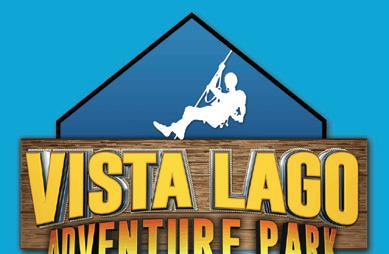





this summer with a Park Hopper Pass!
Looking for fun summer activities for you & your friends, signi cant other, or the whole family?!


Vista Lago Adventure Park is known for its adventurous ropes & obstacle course designed for beginners & extreme adventurers! Walk across their Talley Vineyard Wine Barrel Bridge to freefall from a 40 QuickJump, then get fresh air on their ziplines with a beautiful view of the lake!
